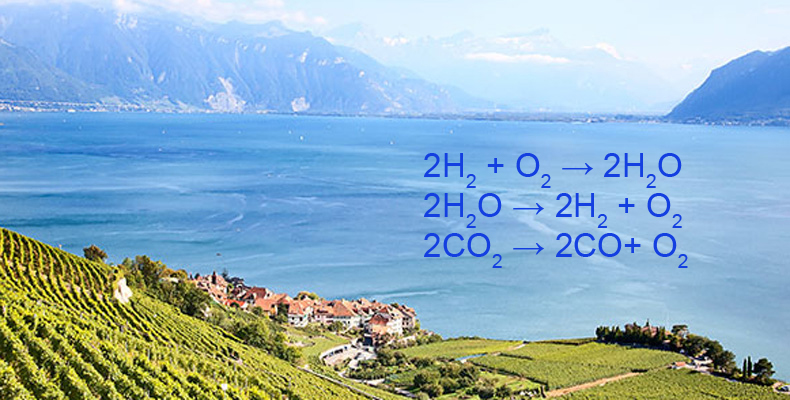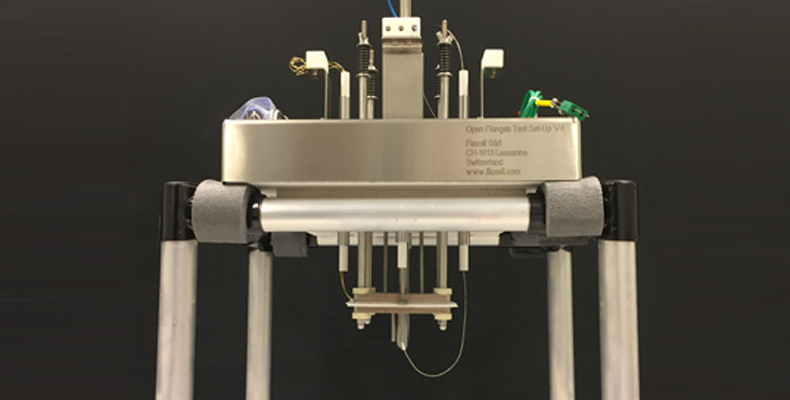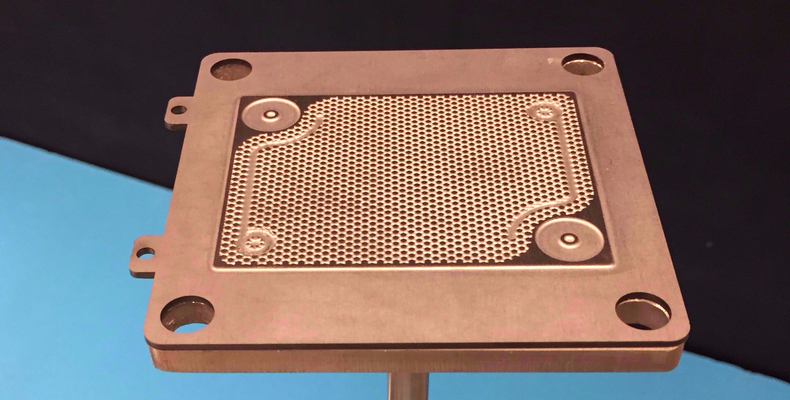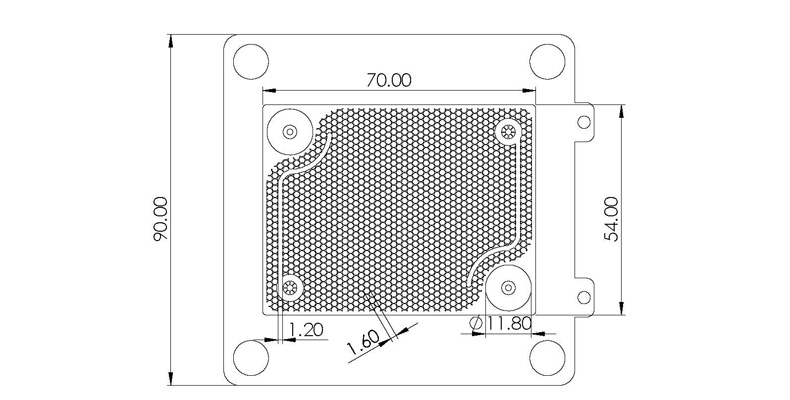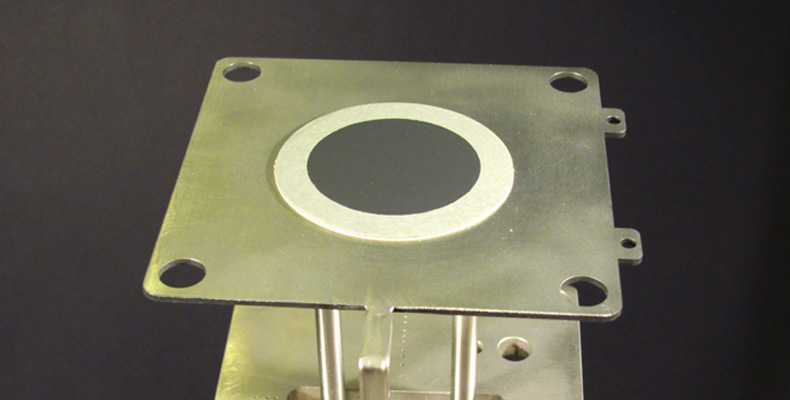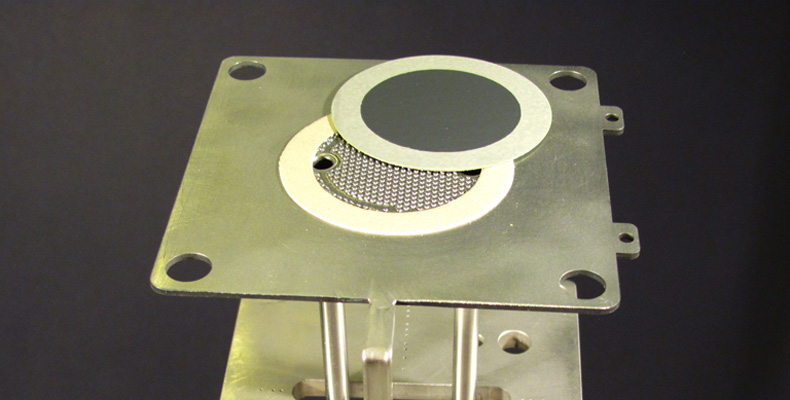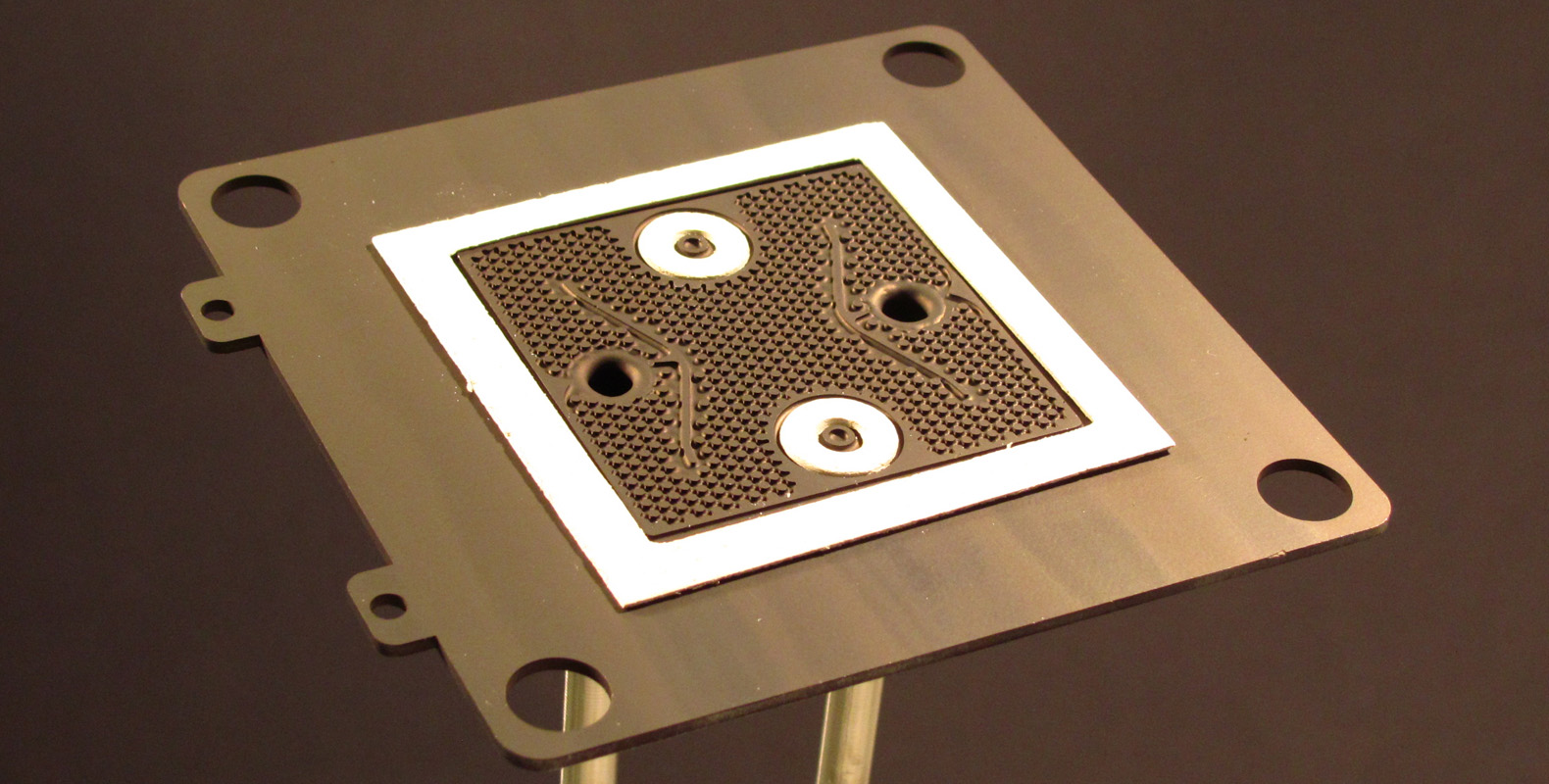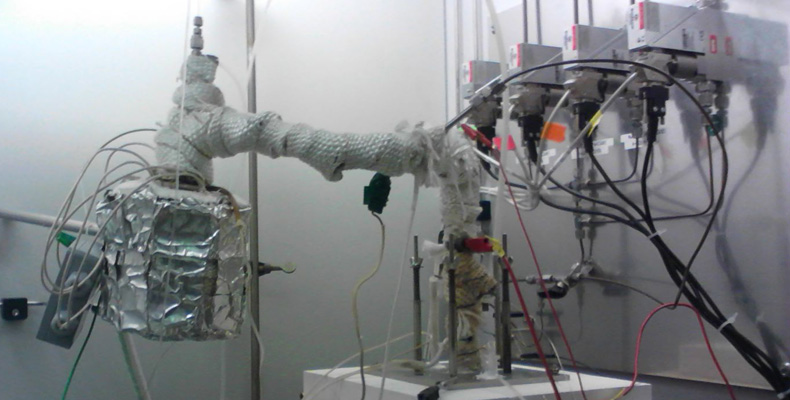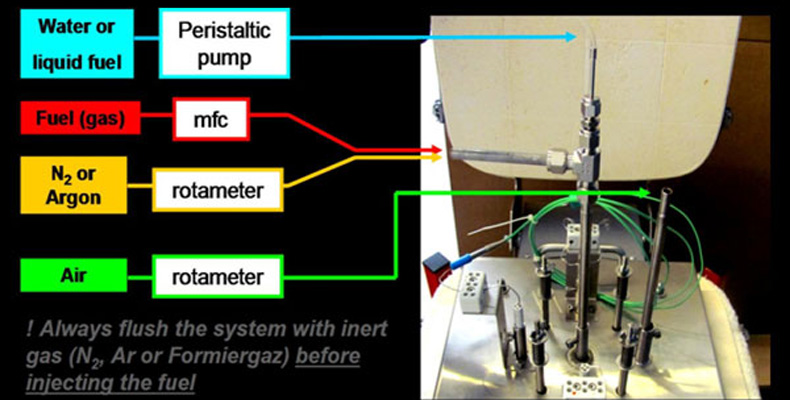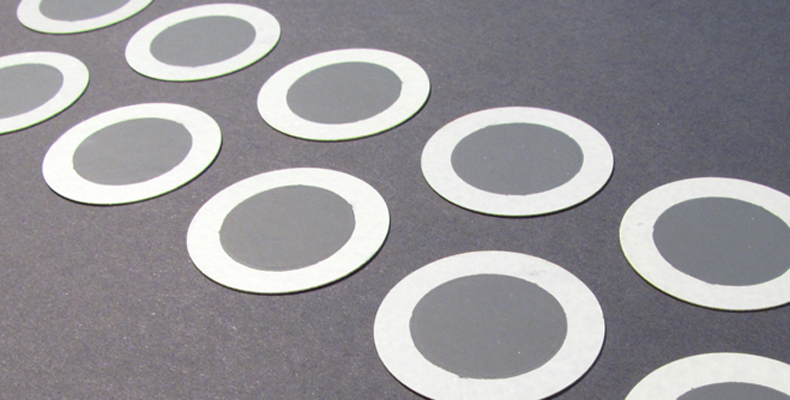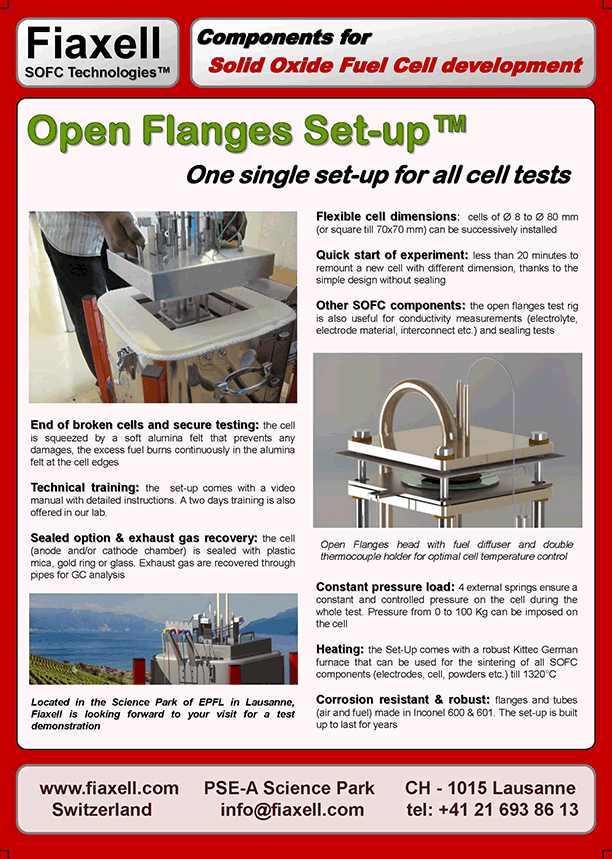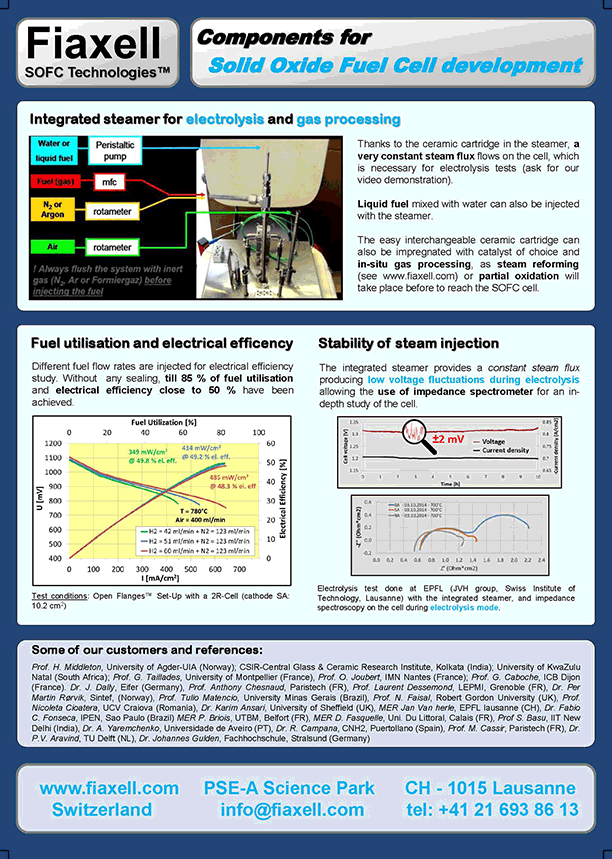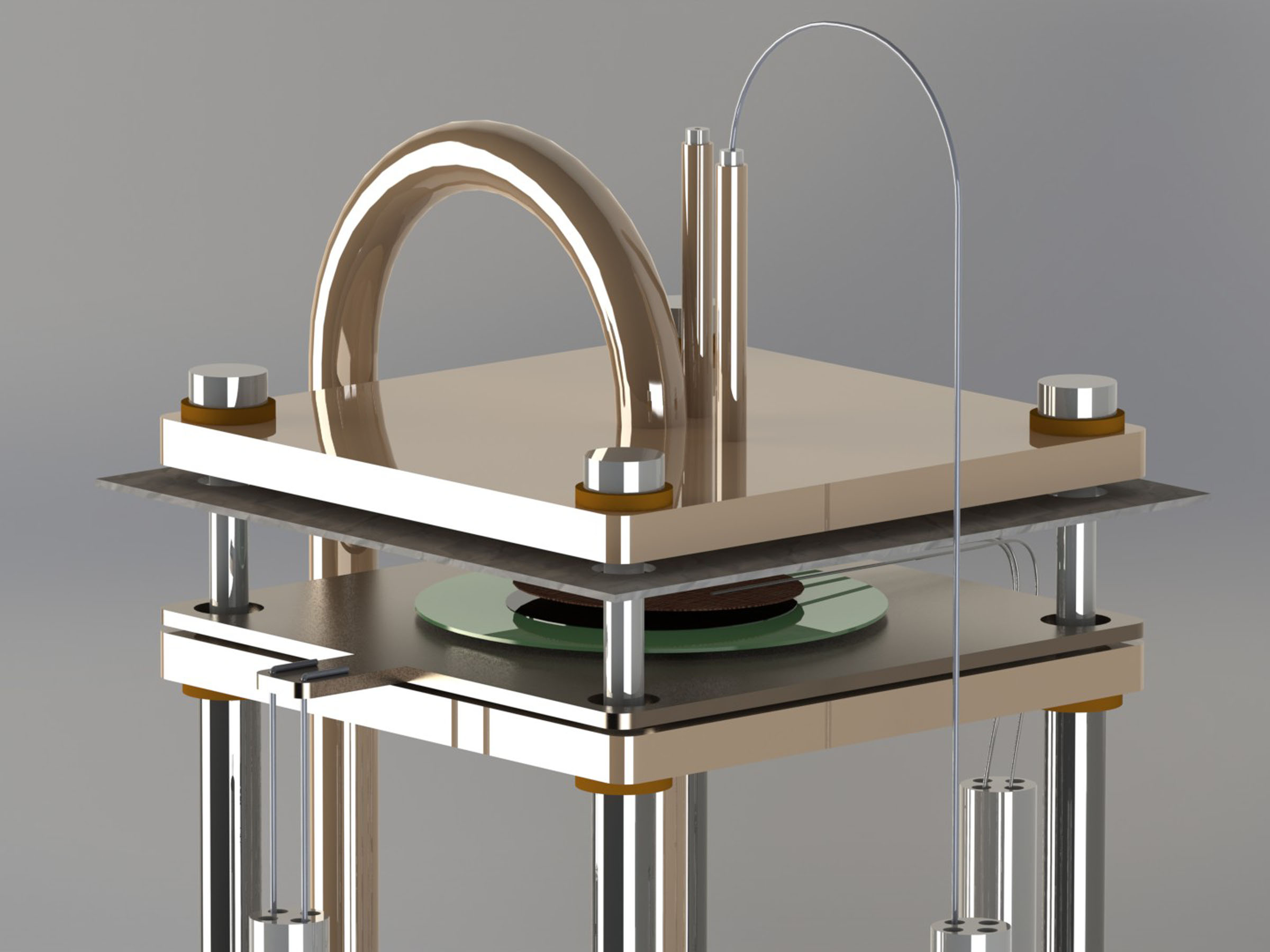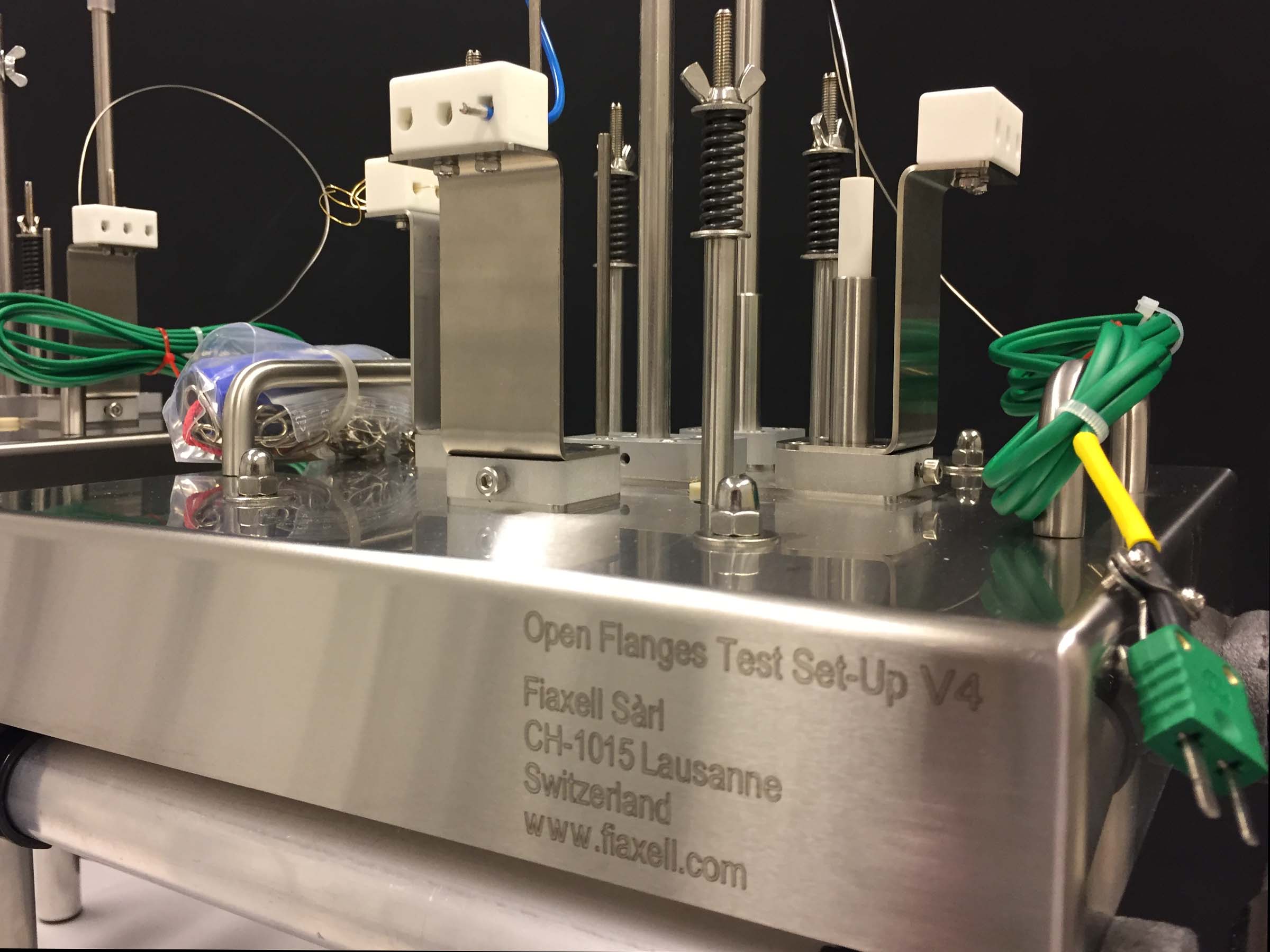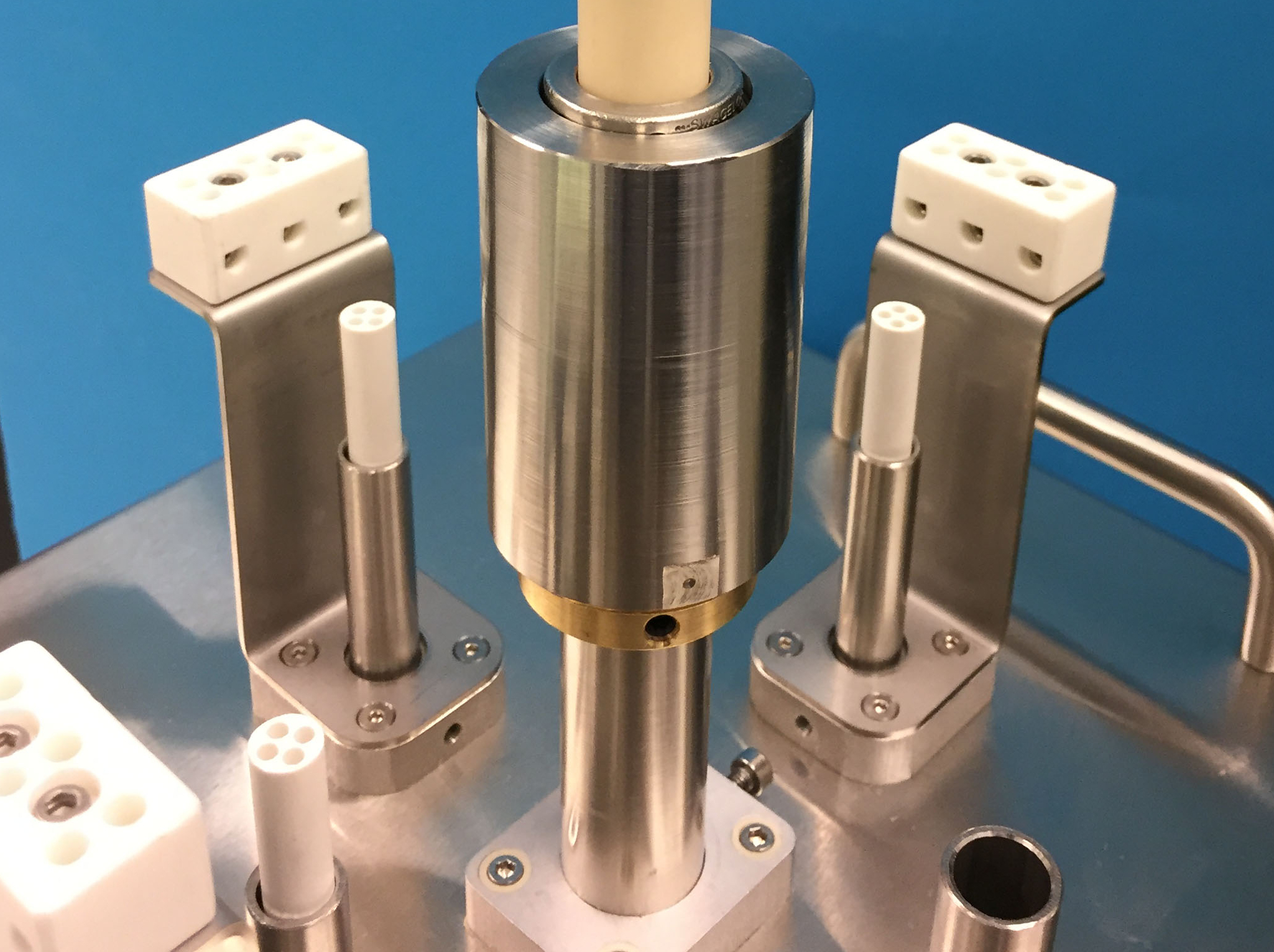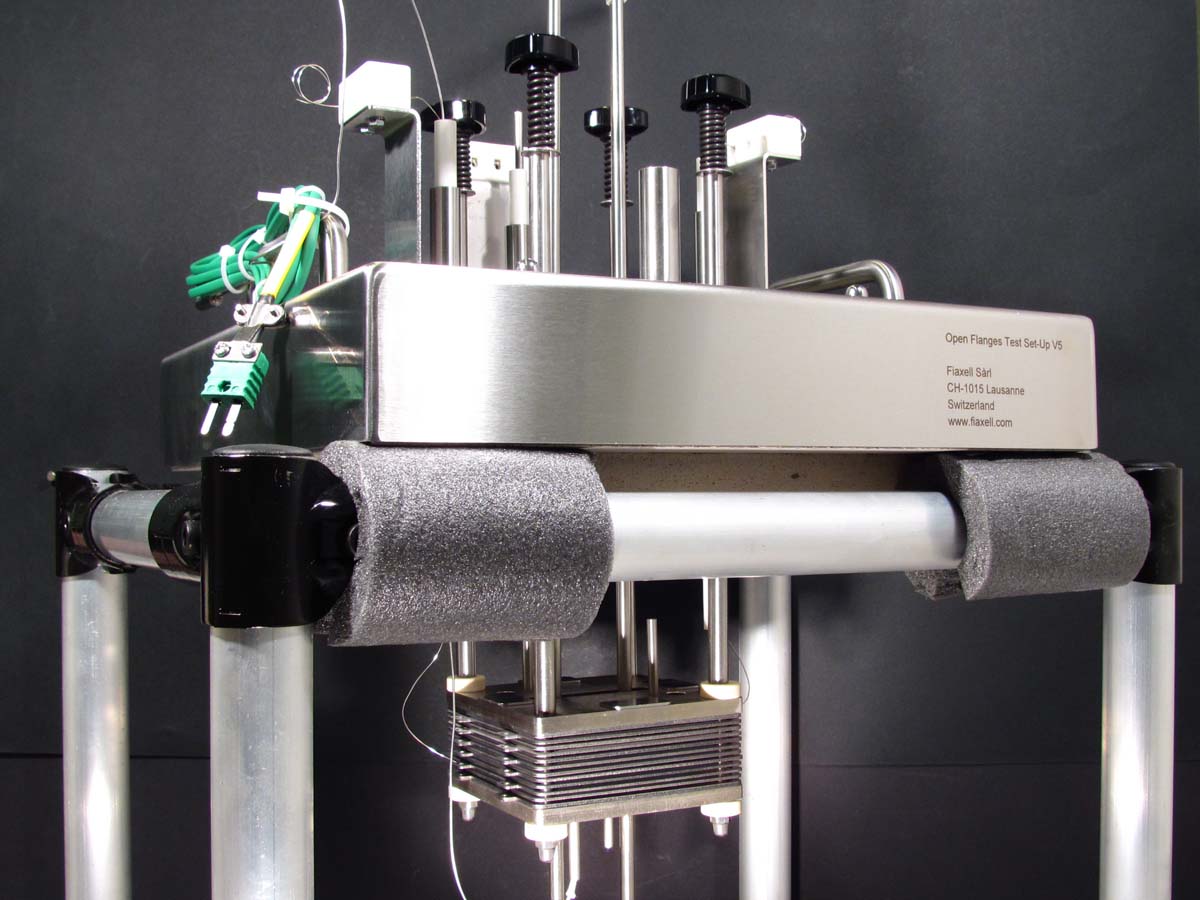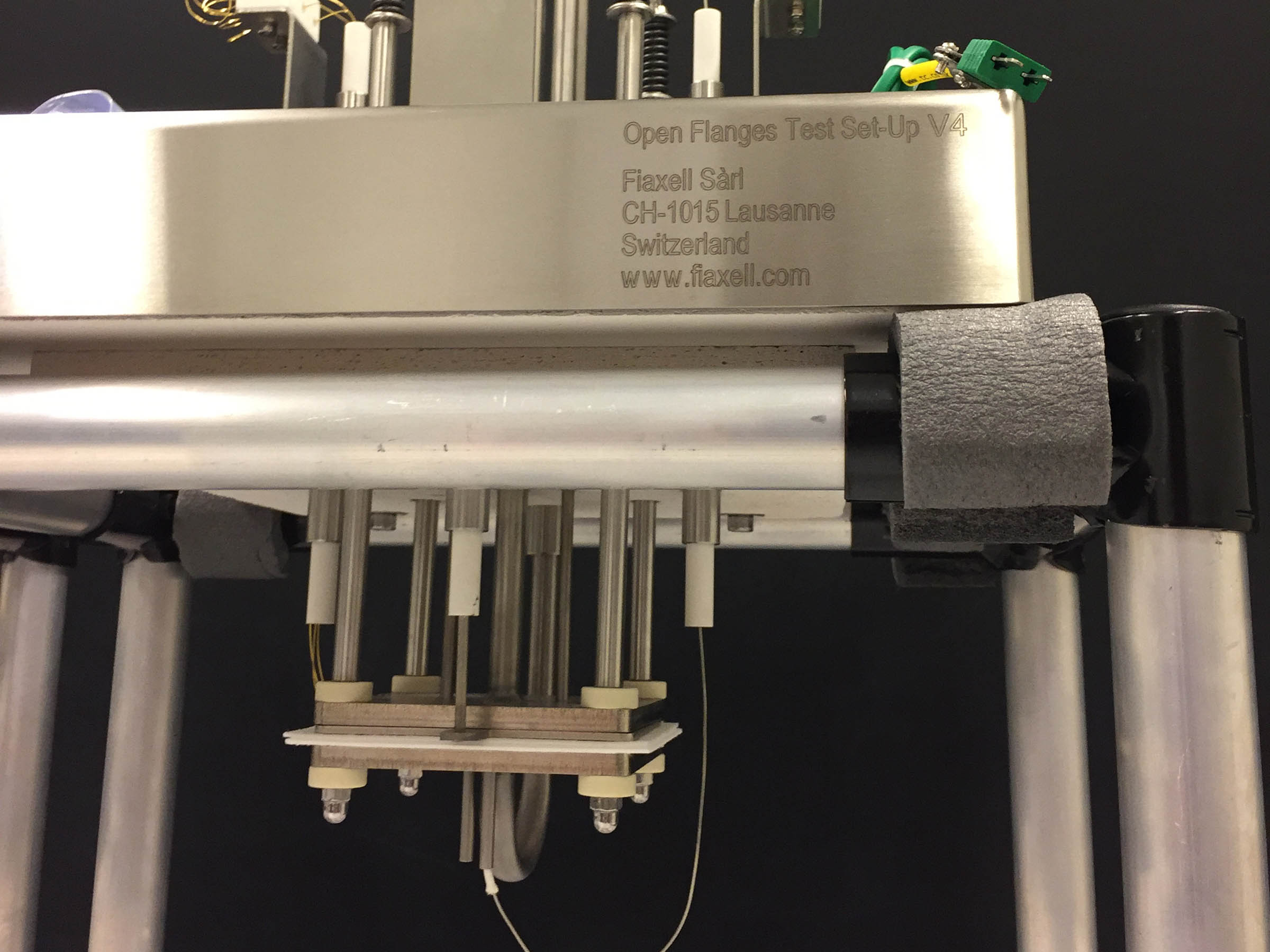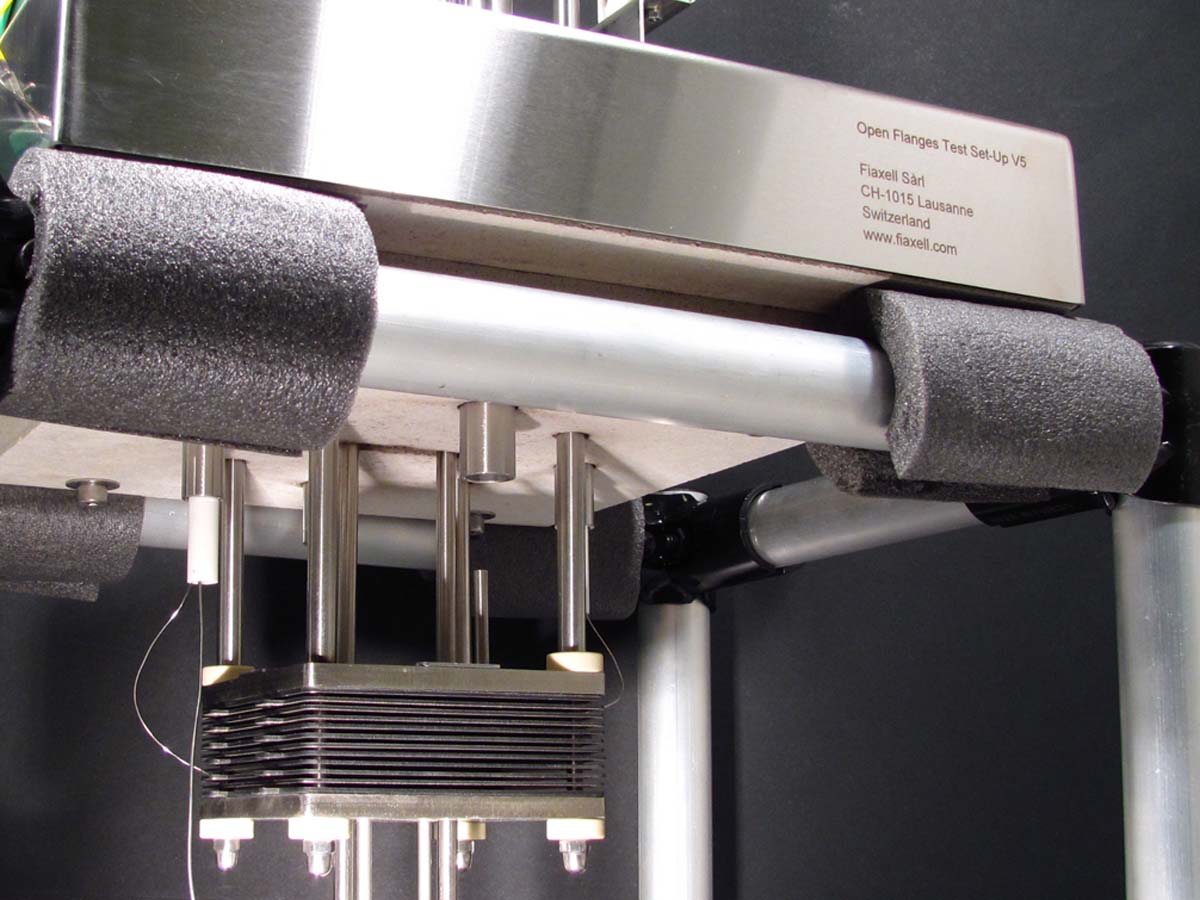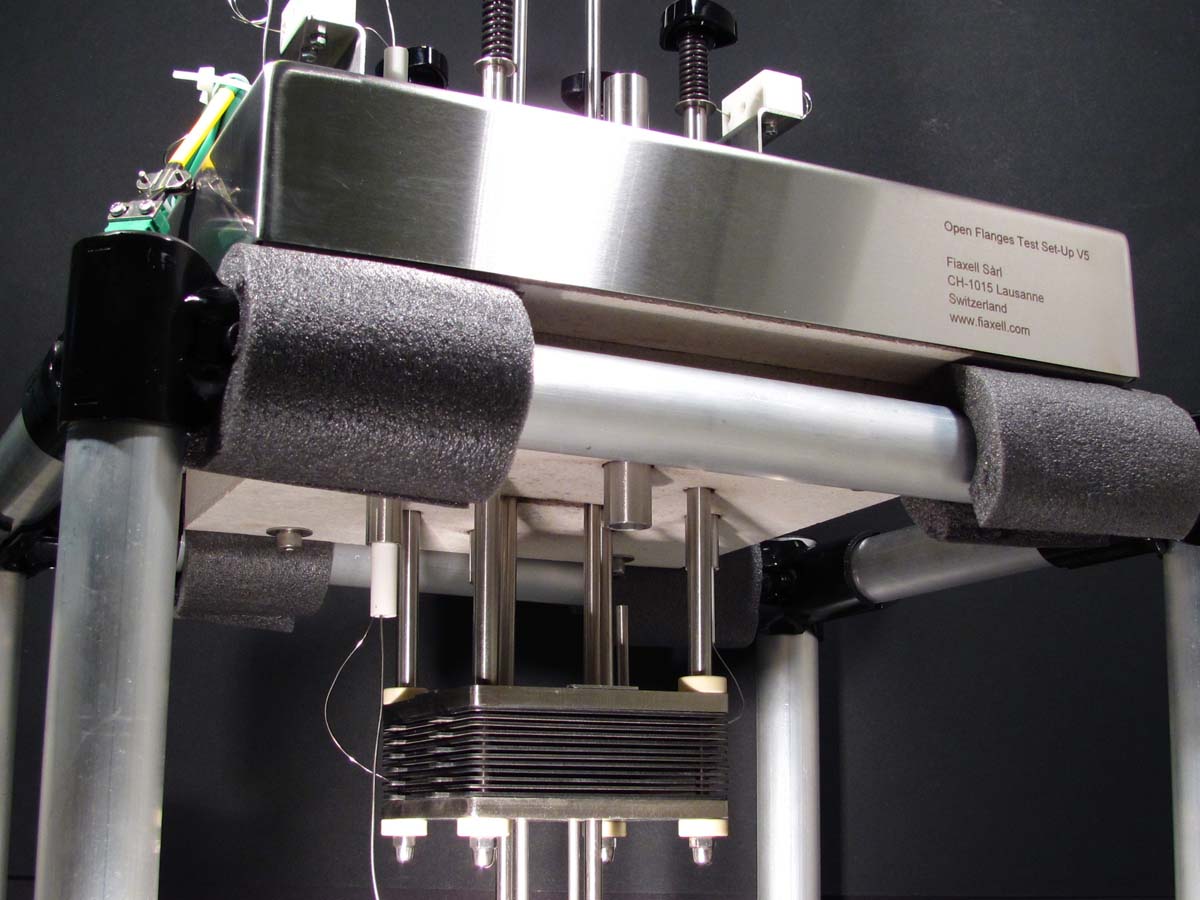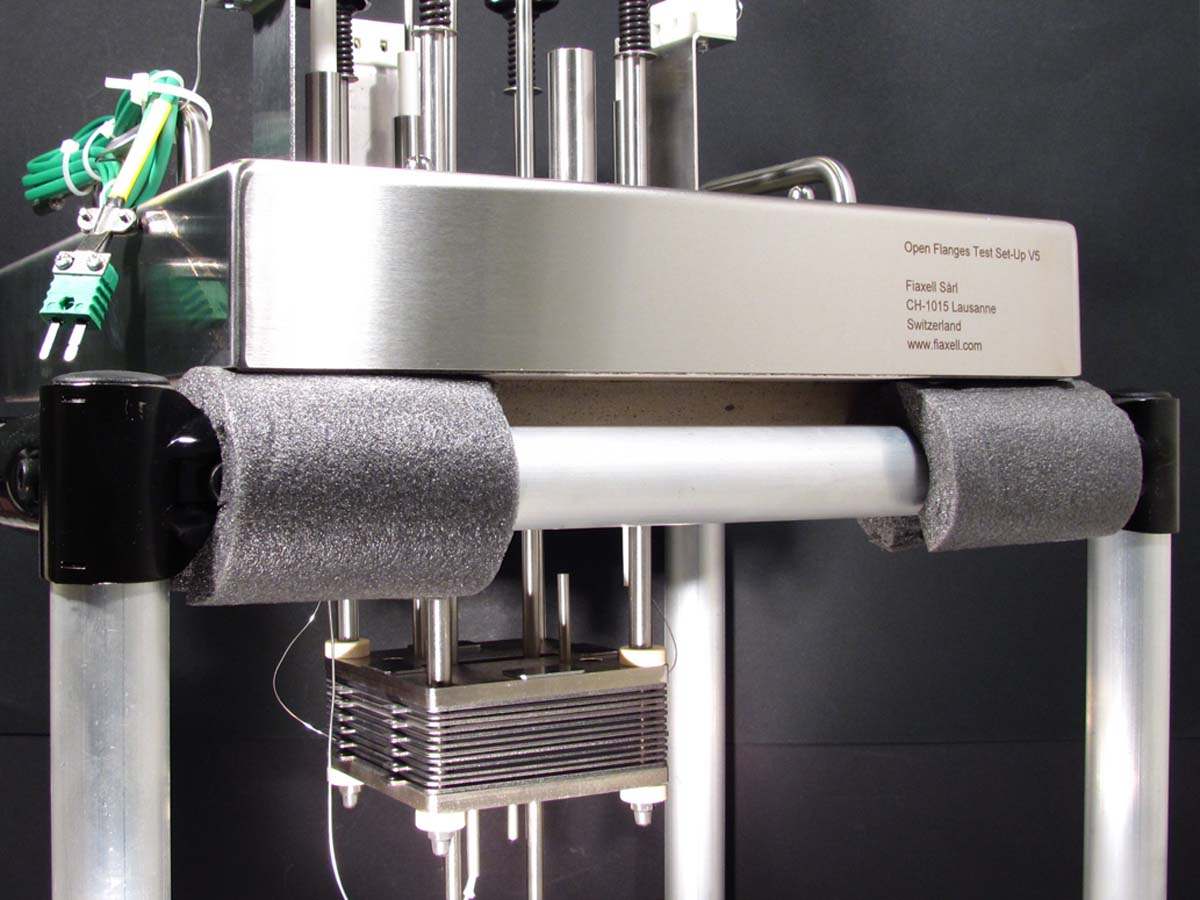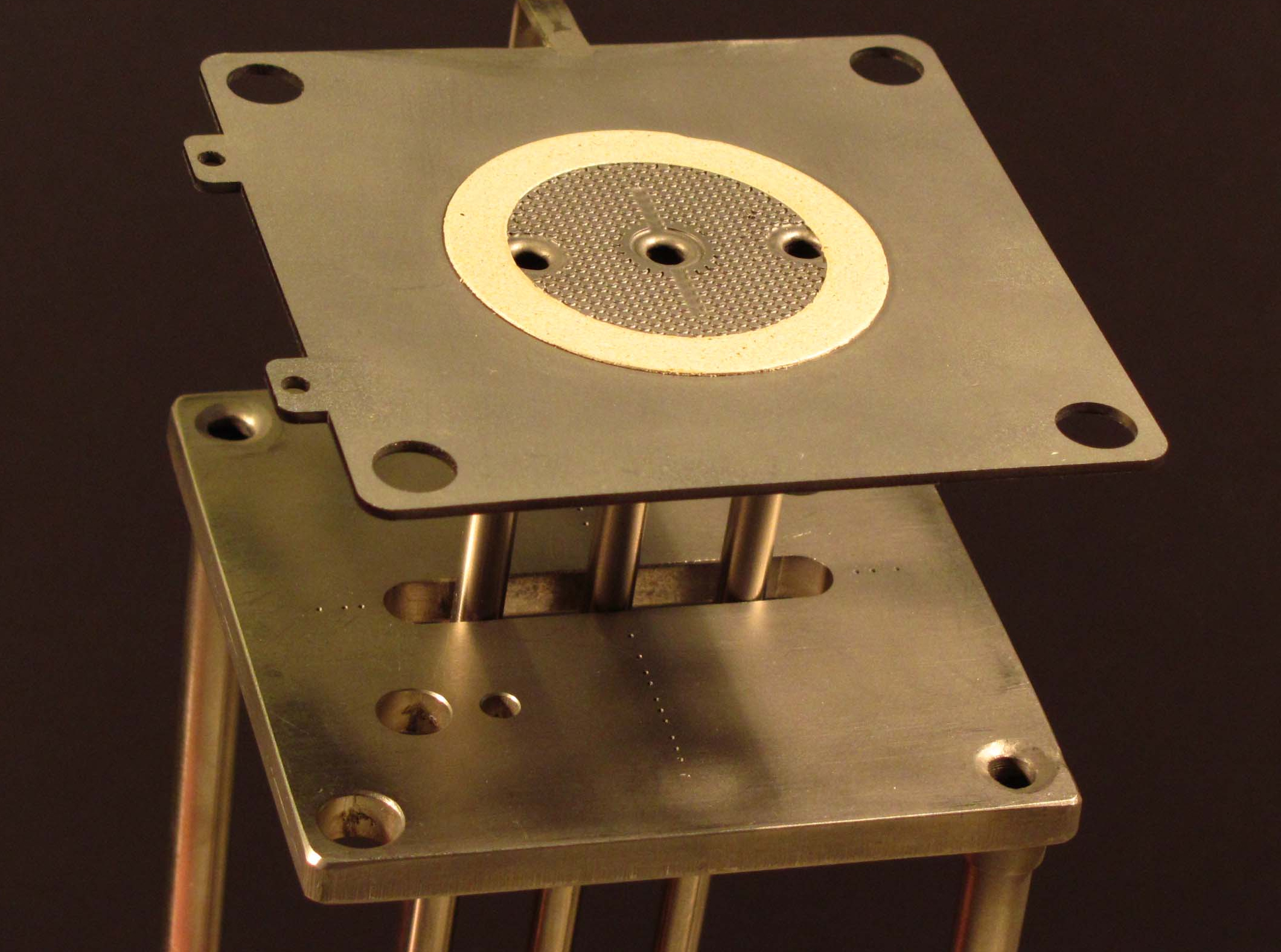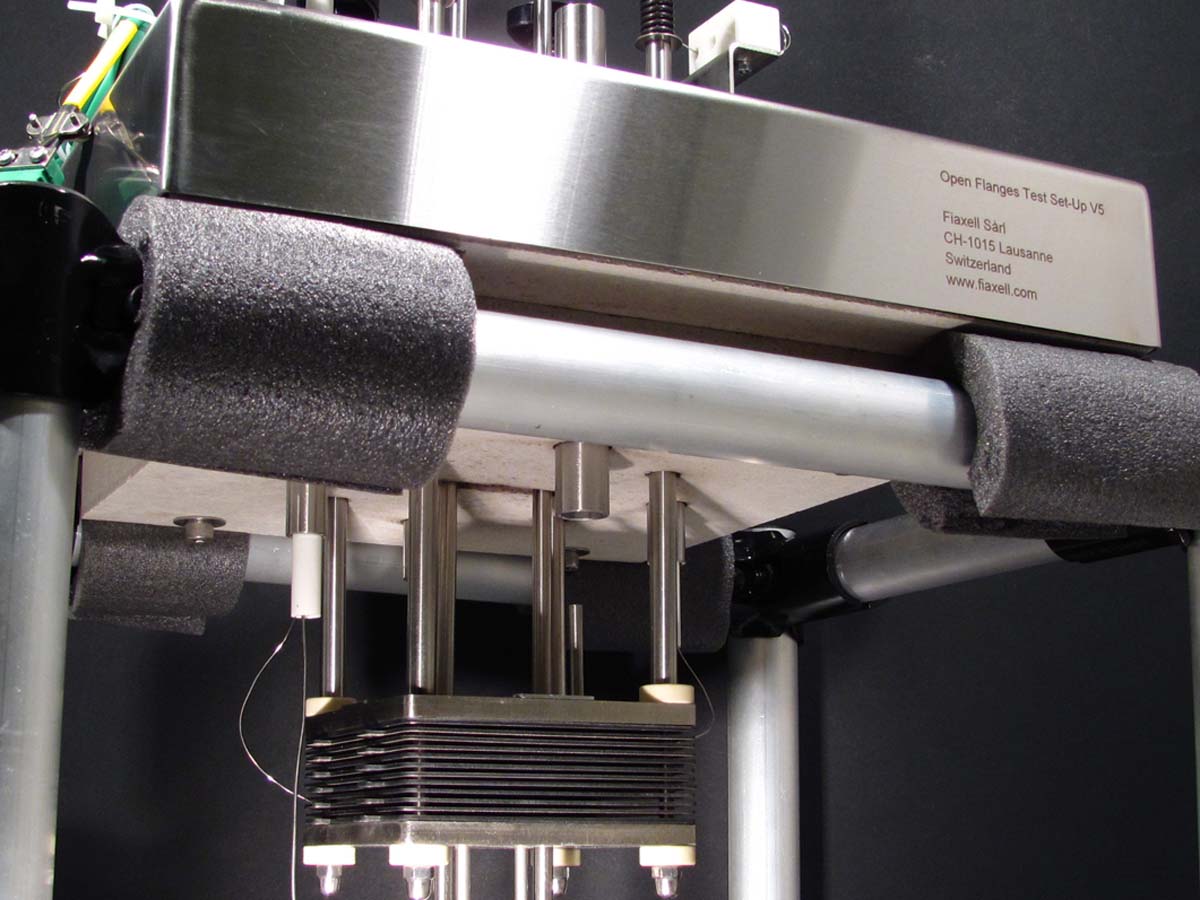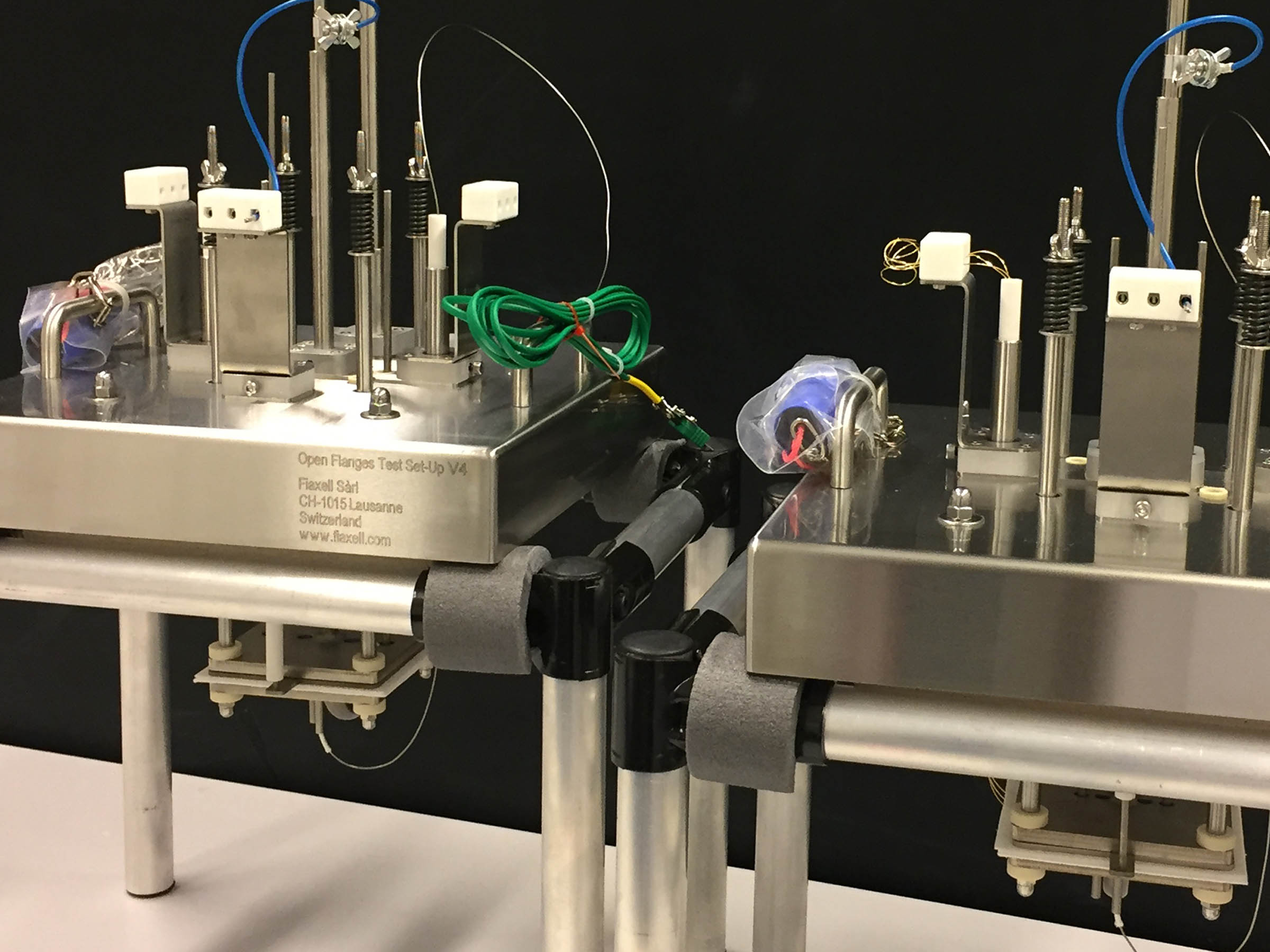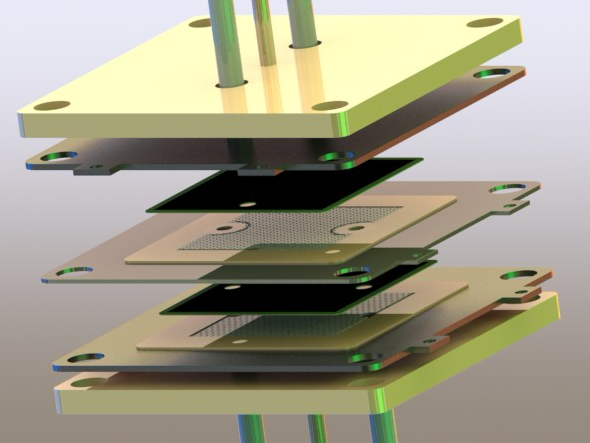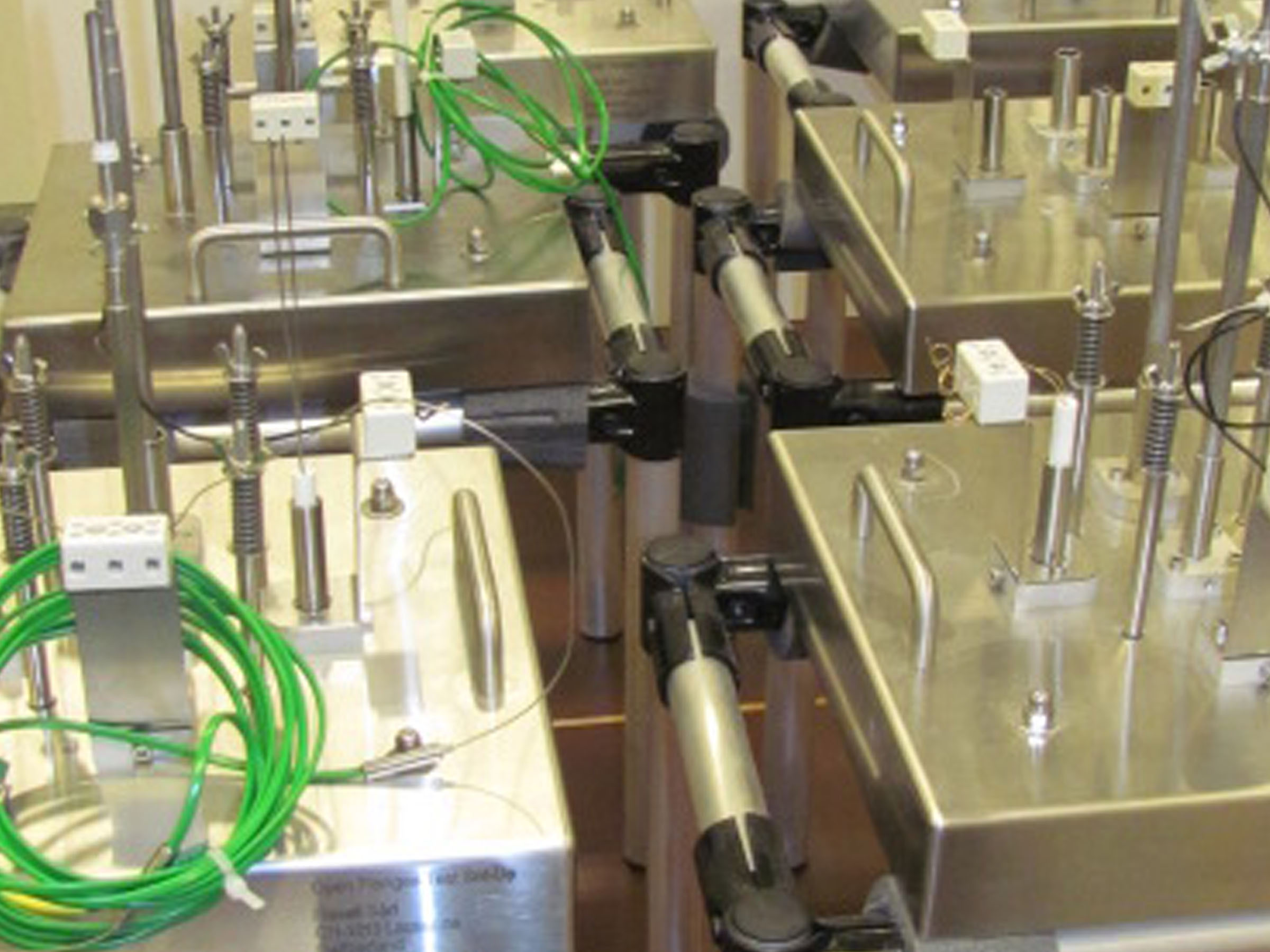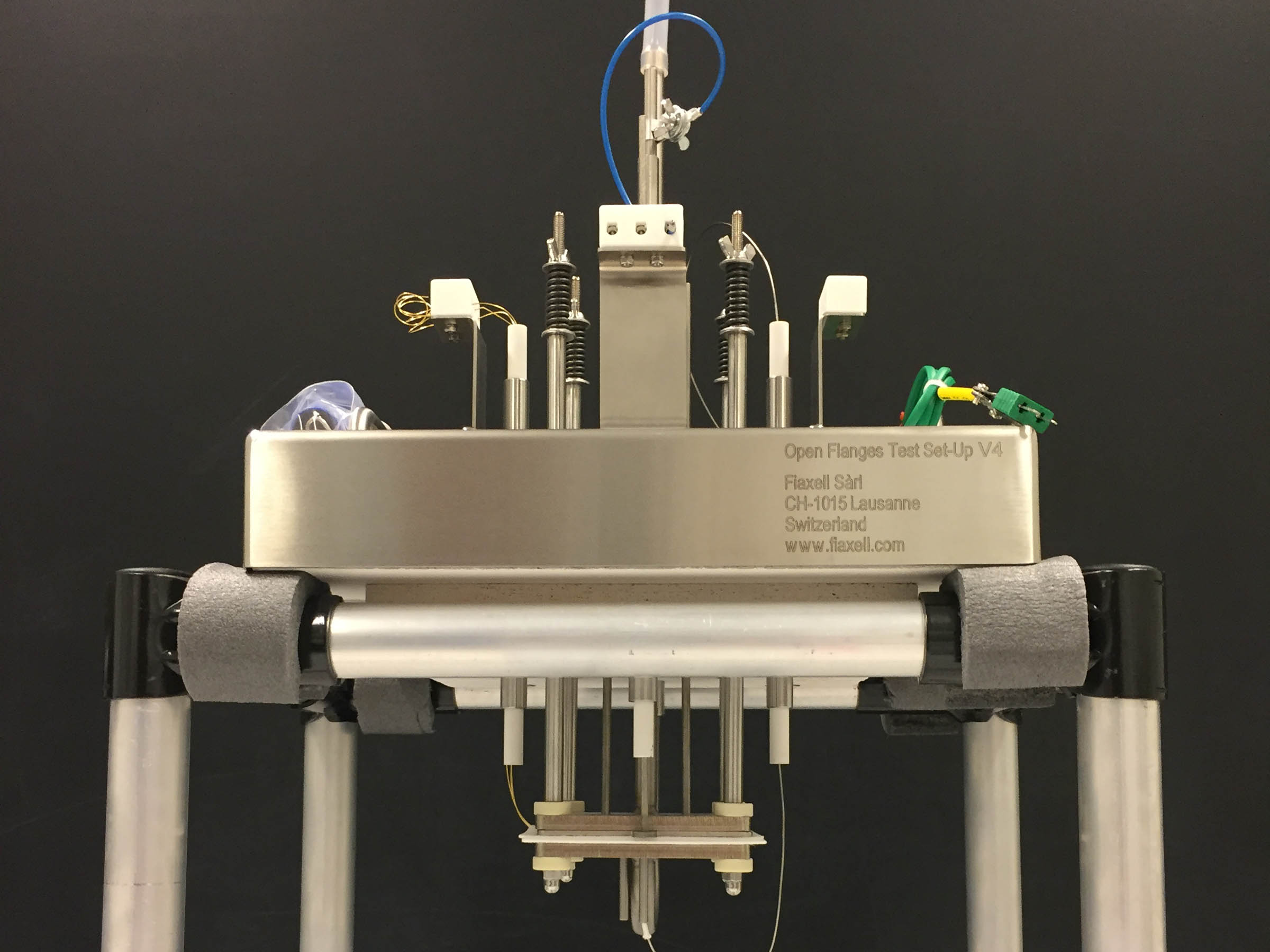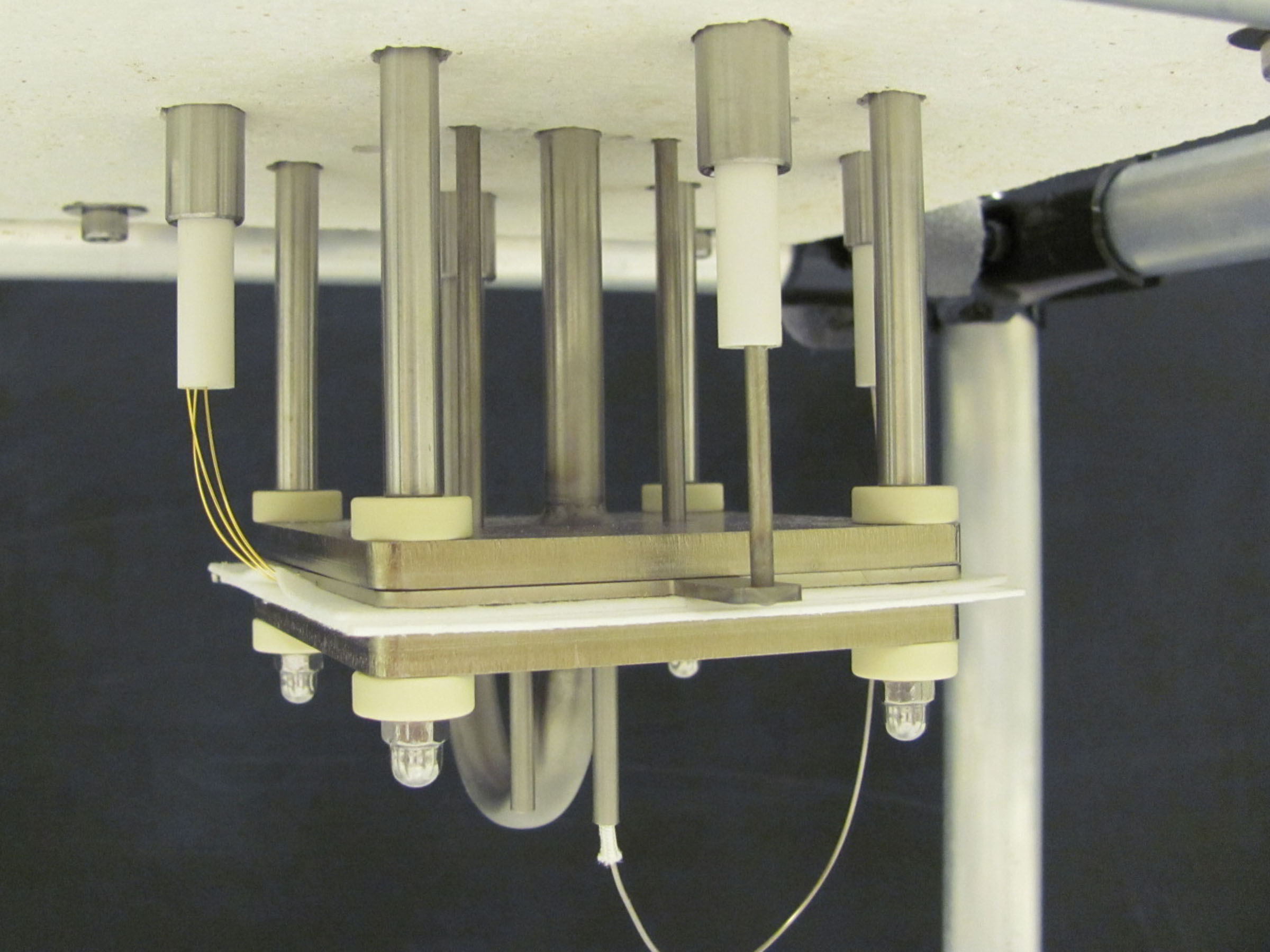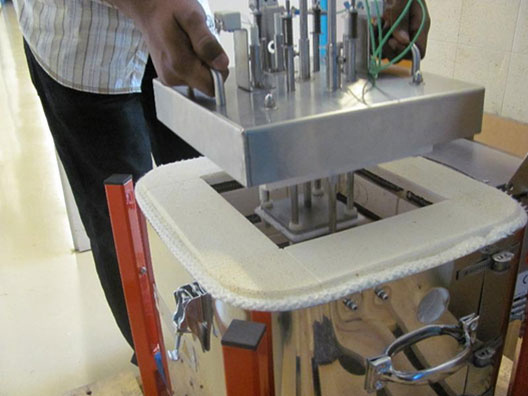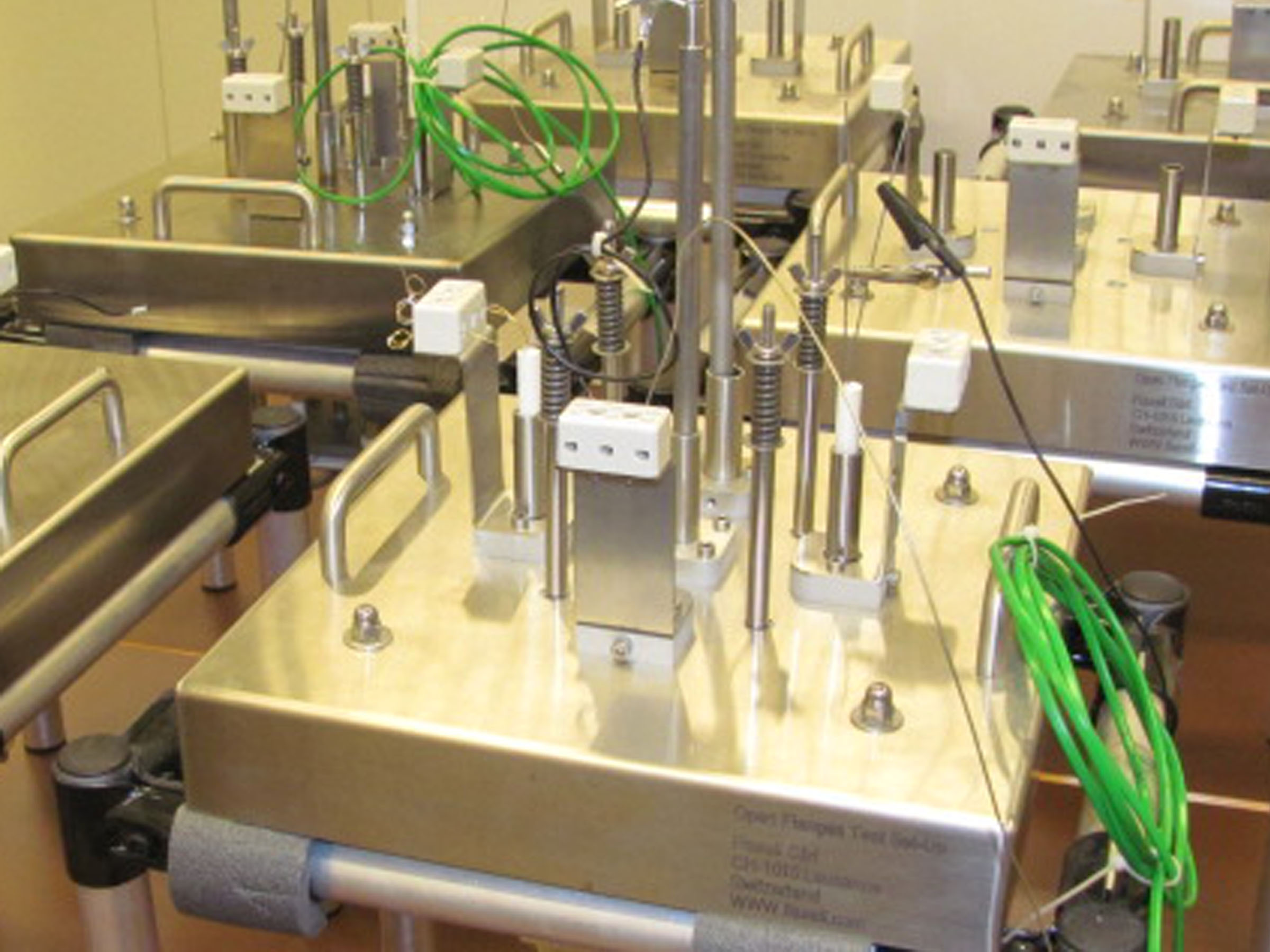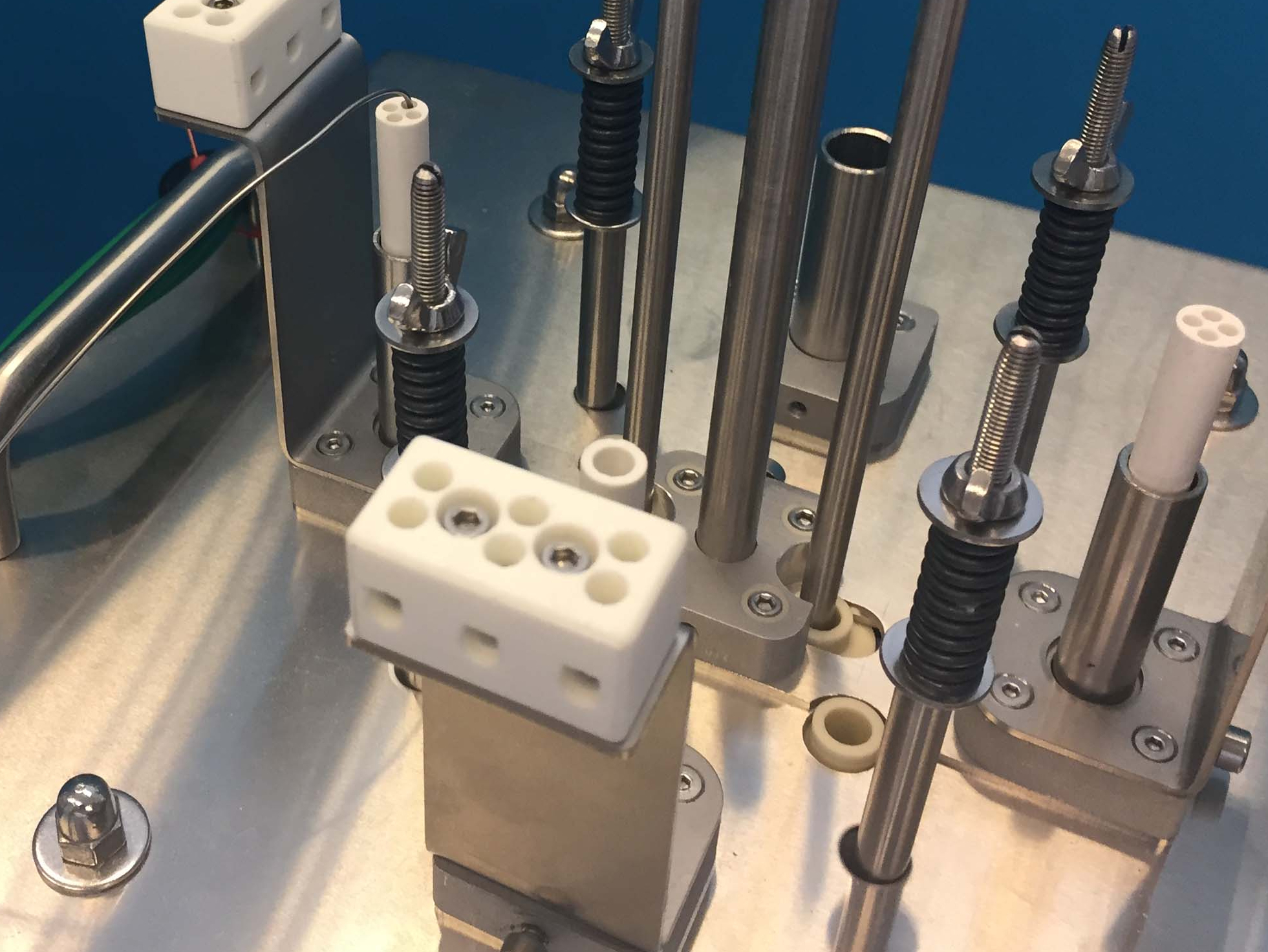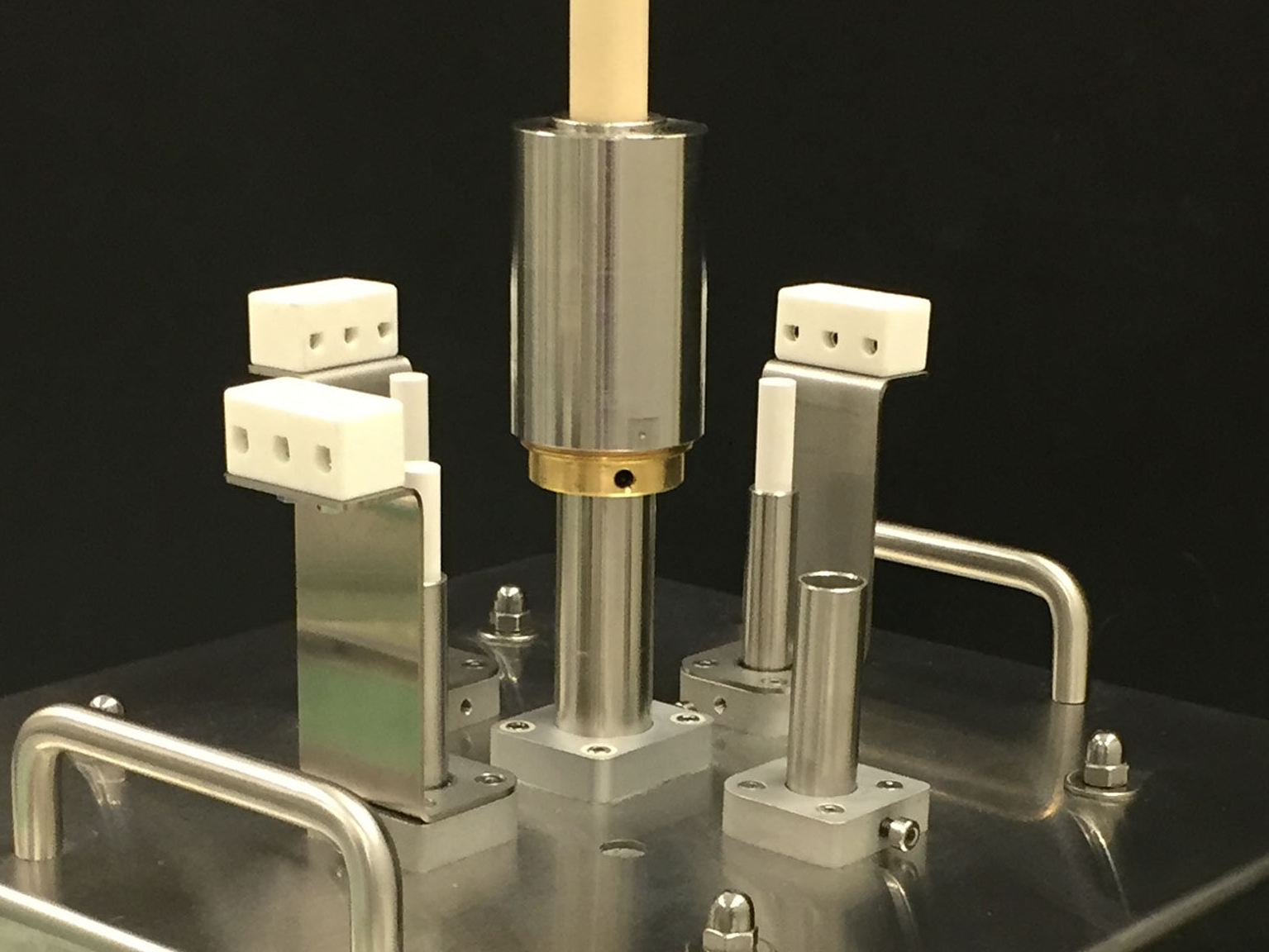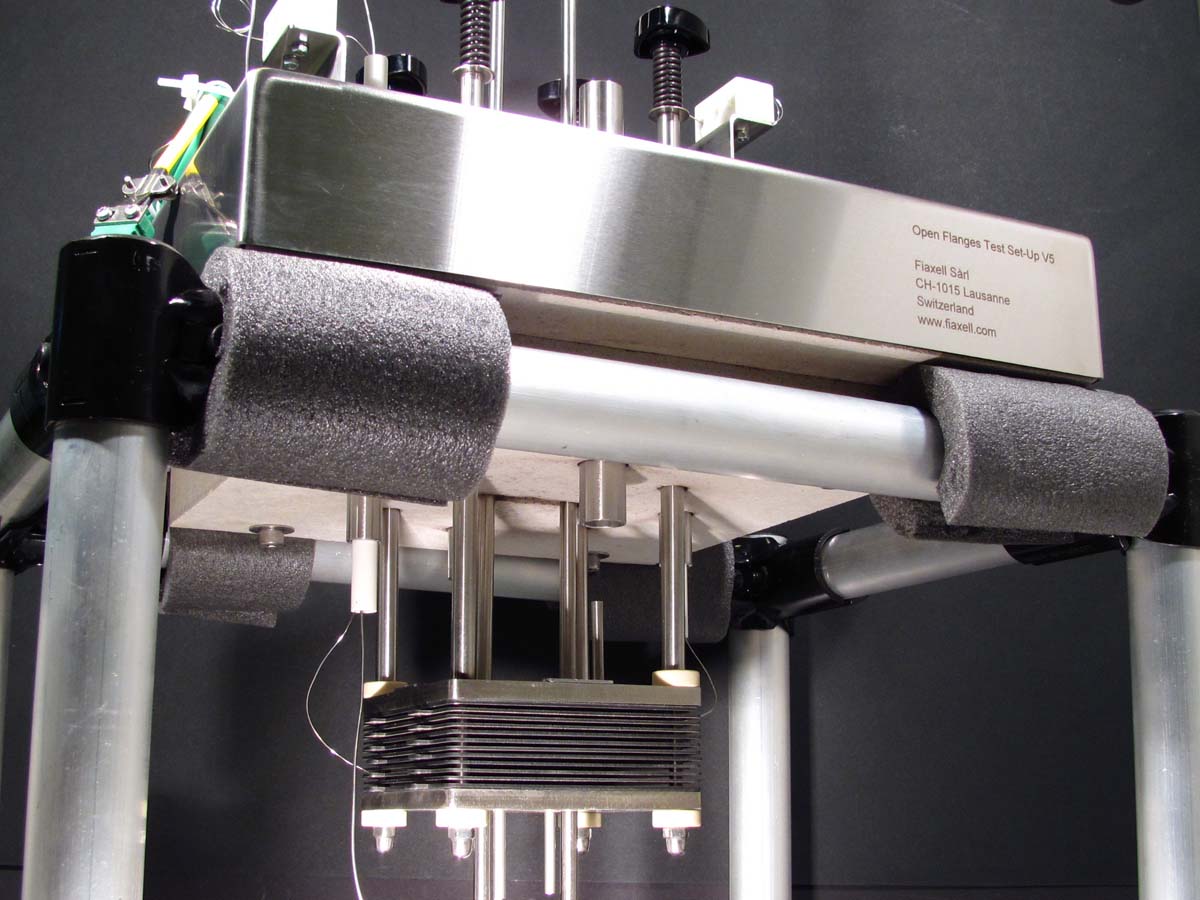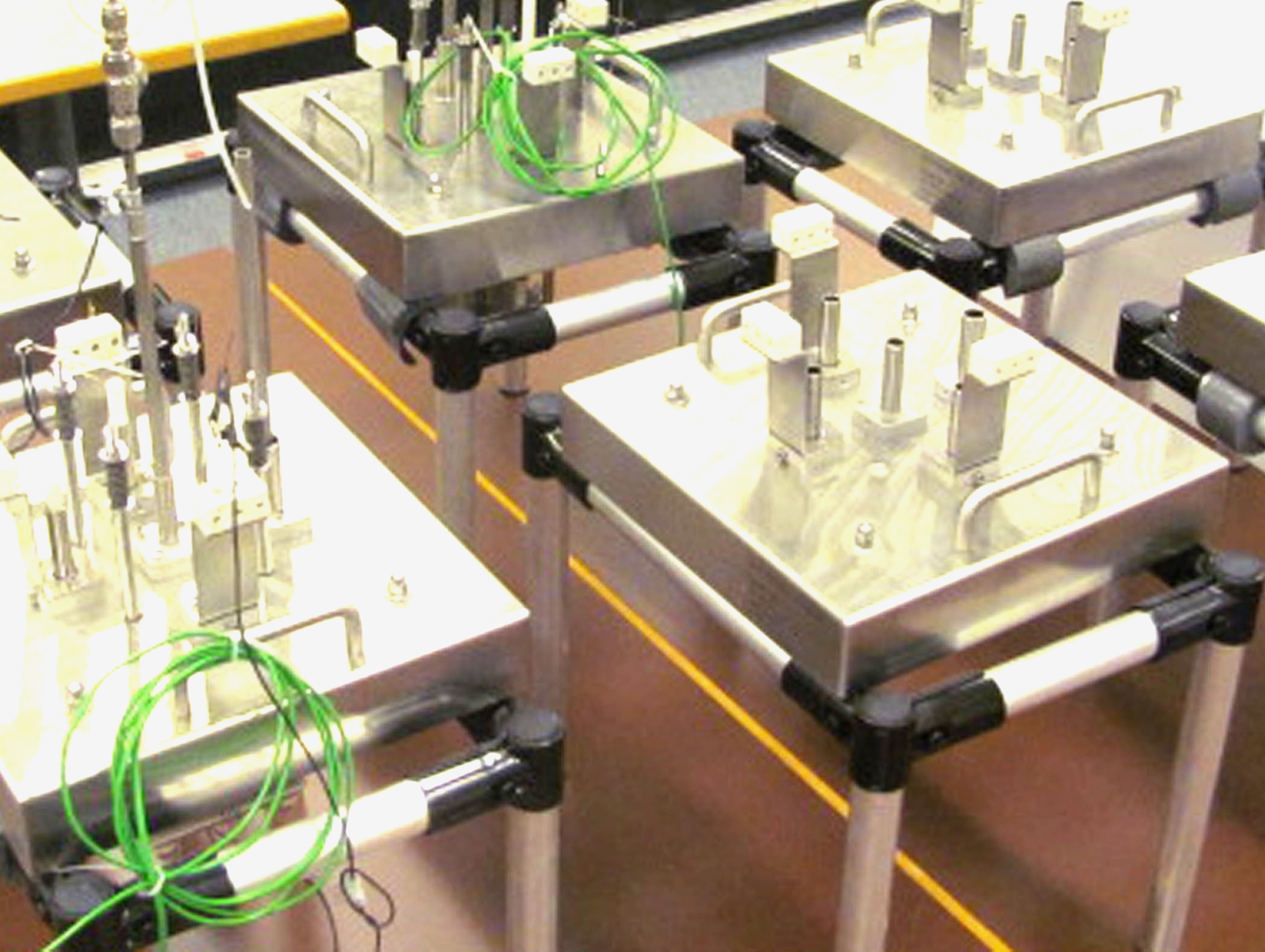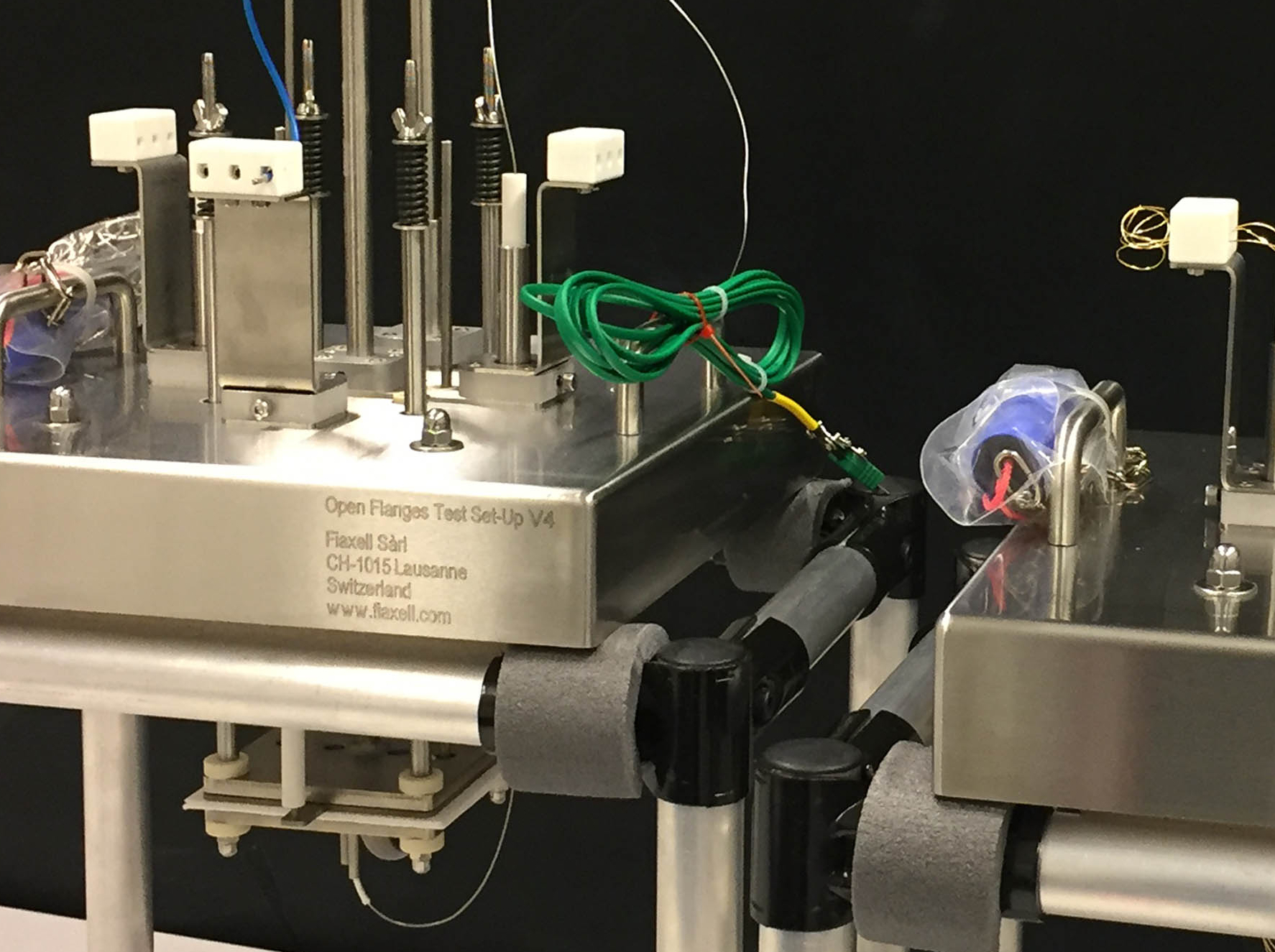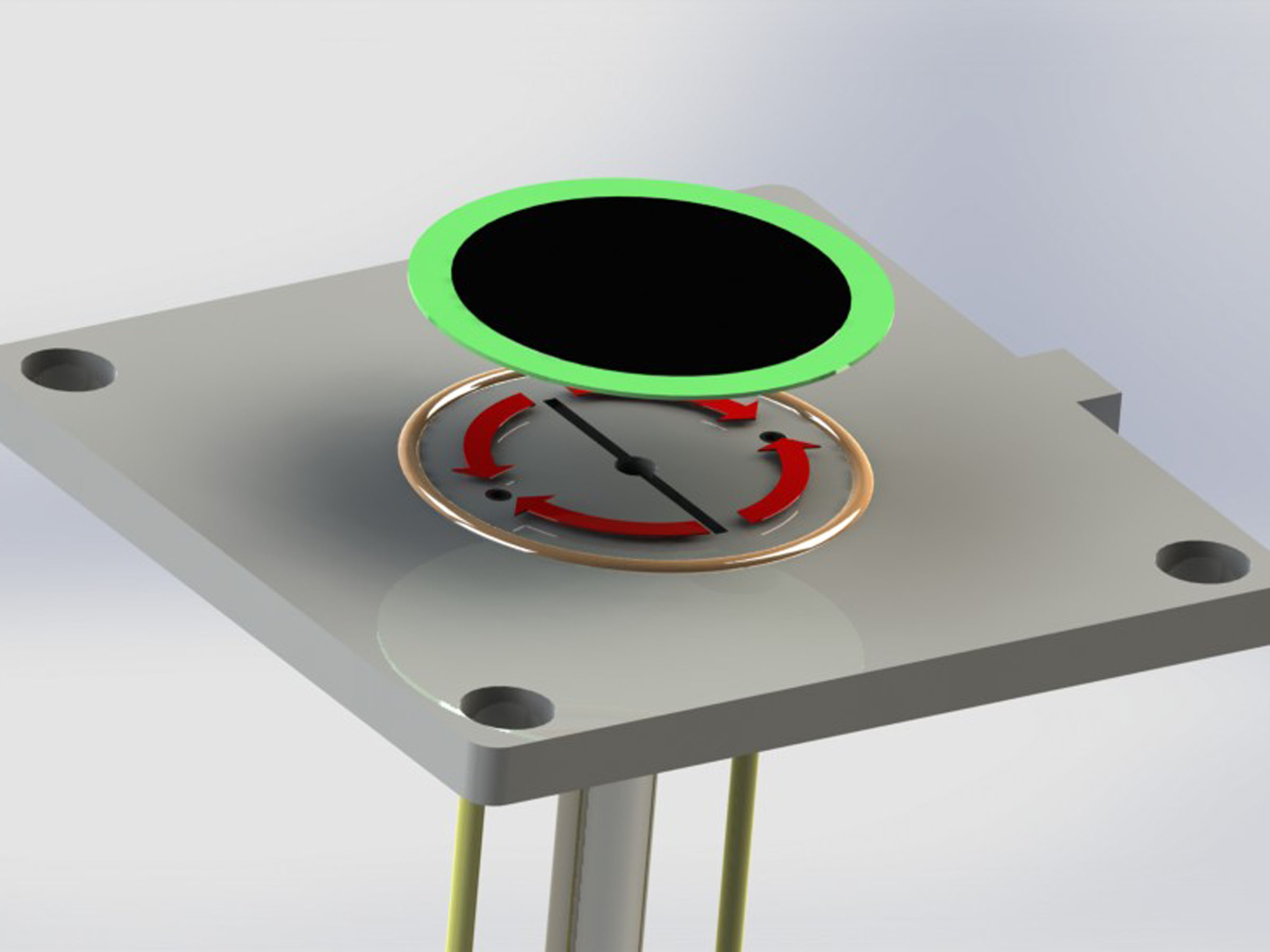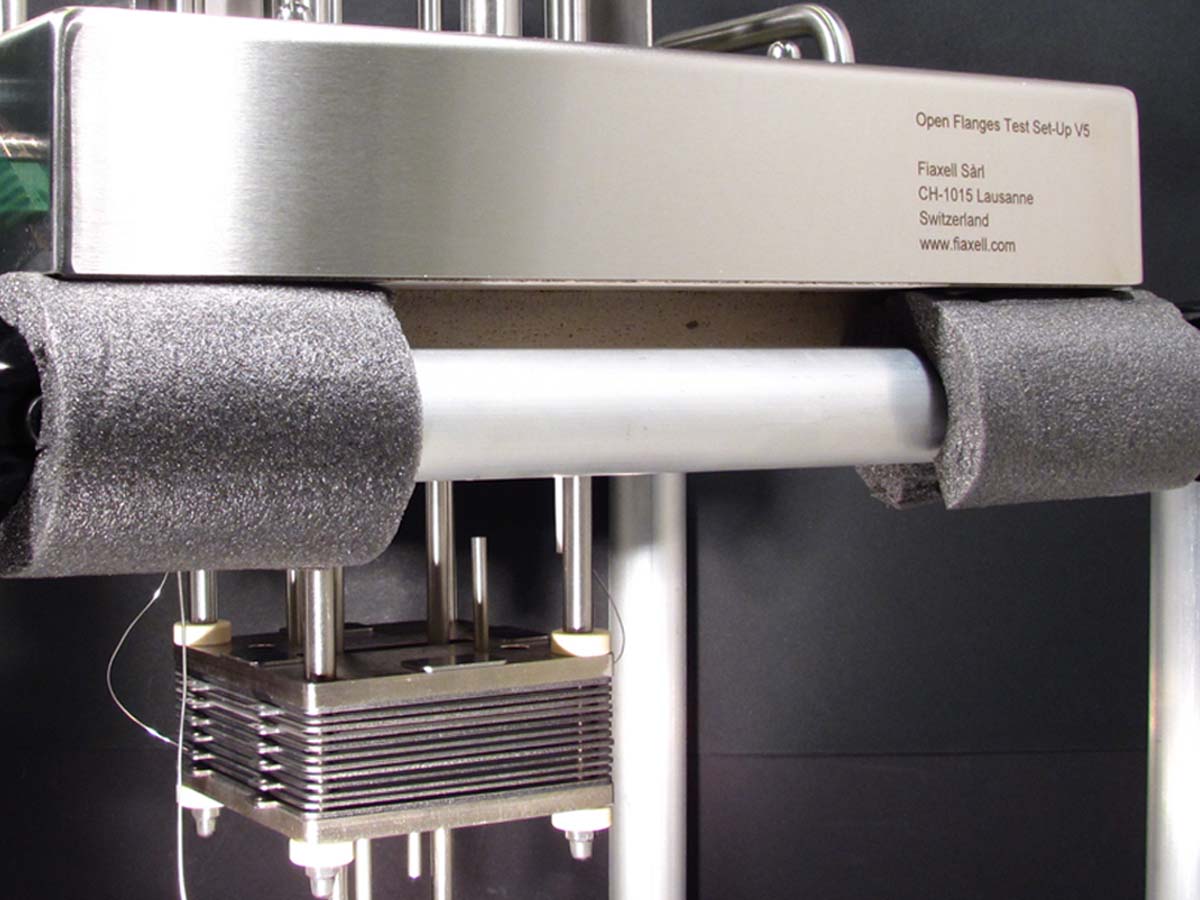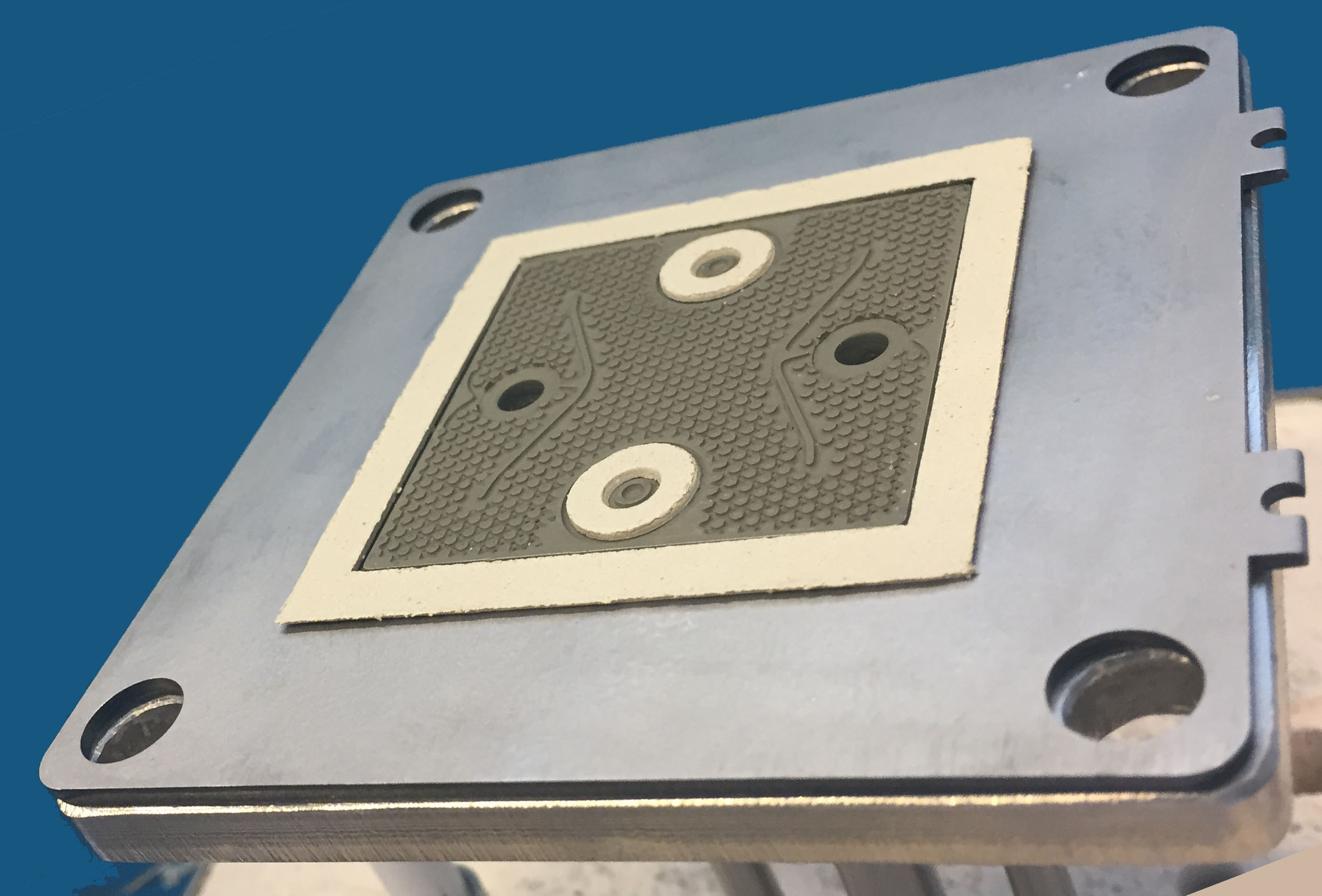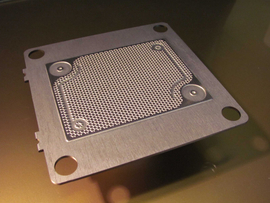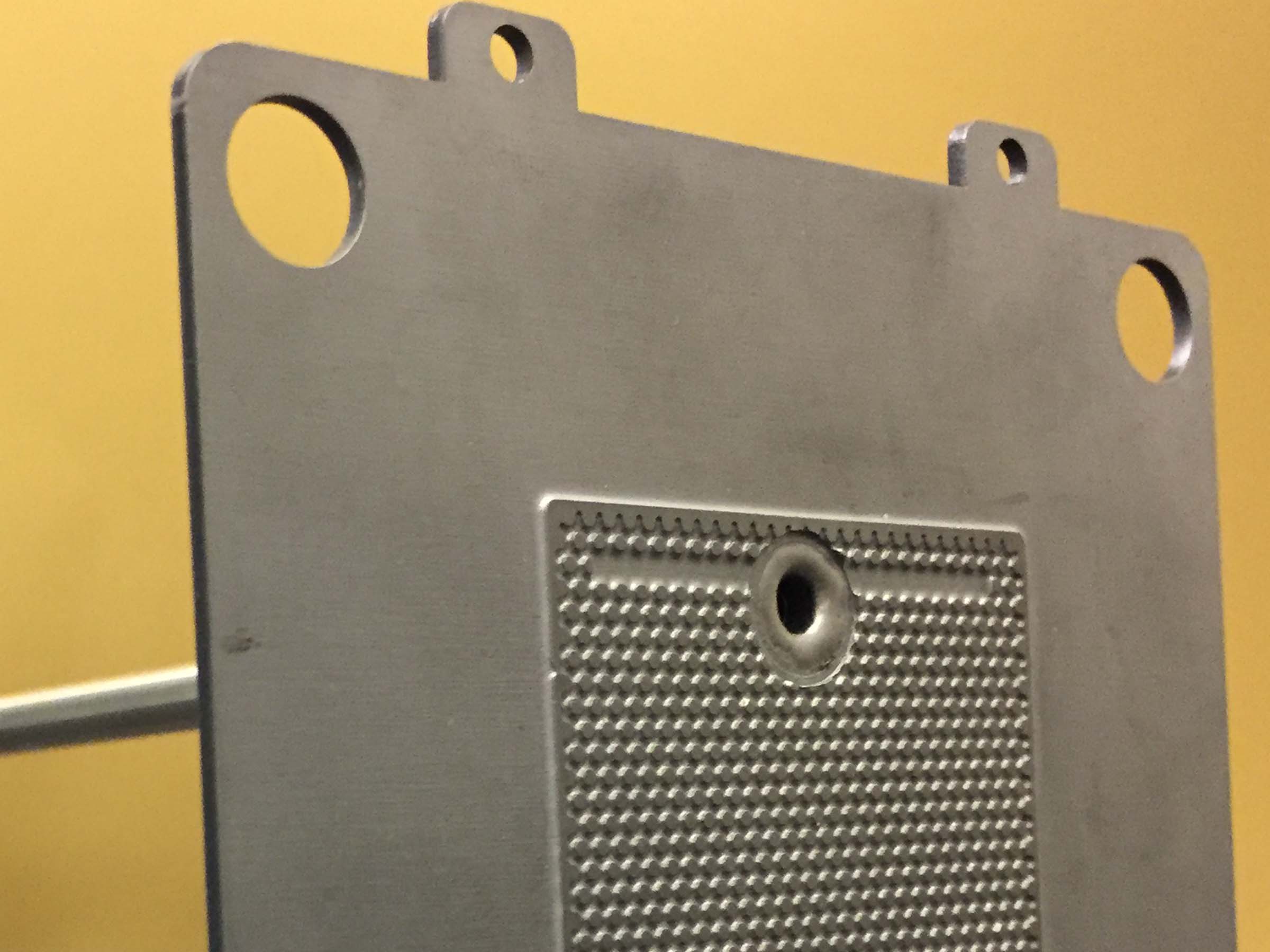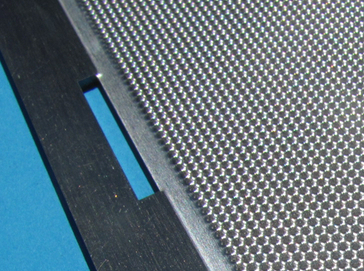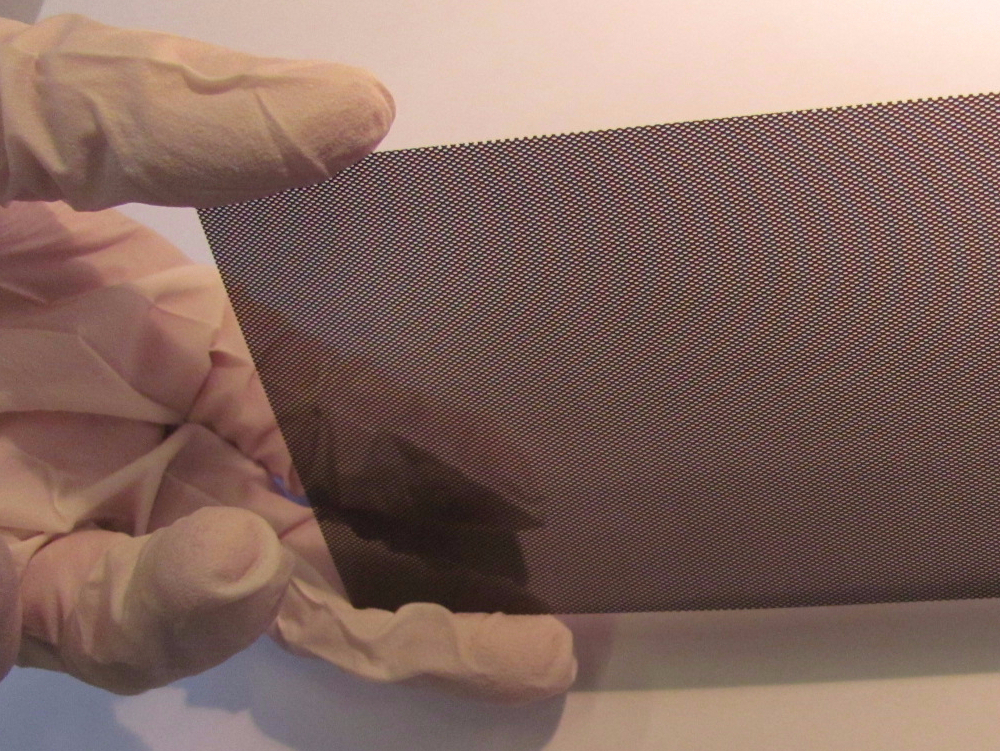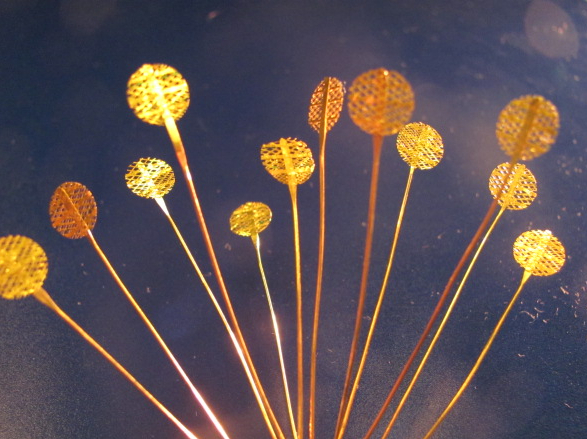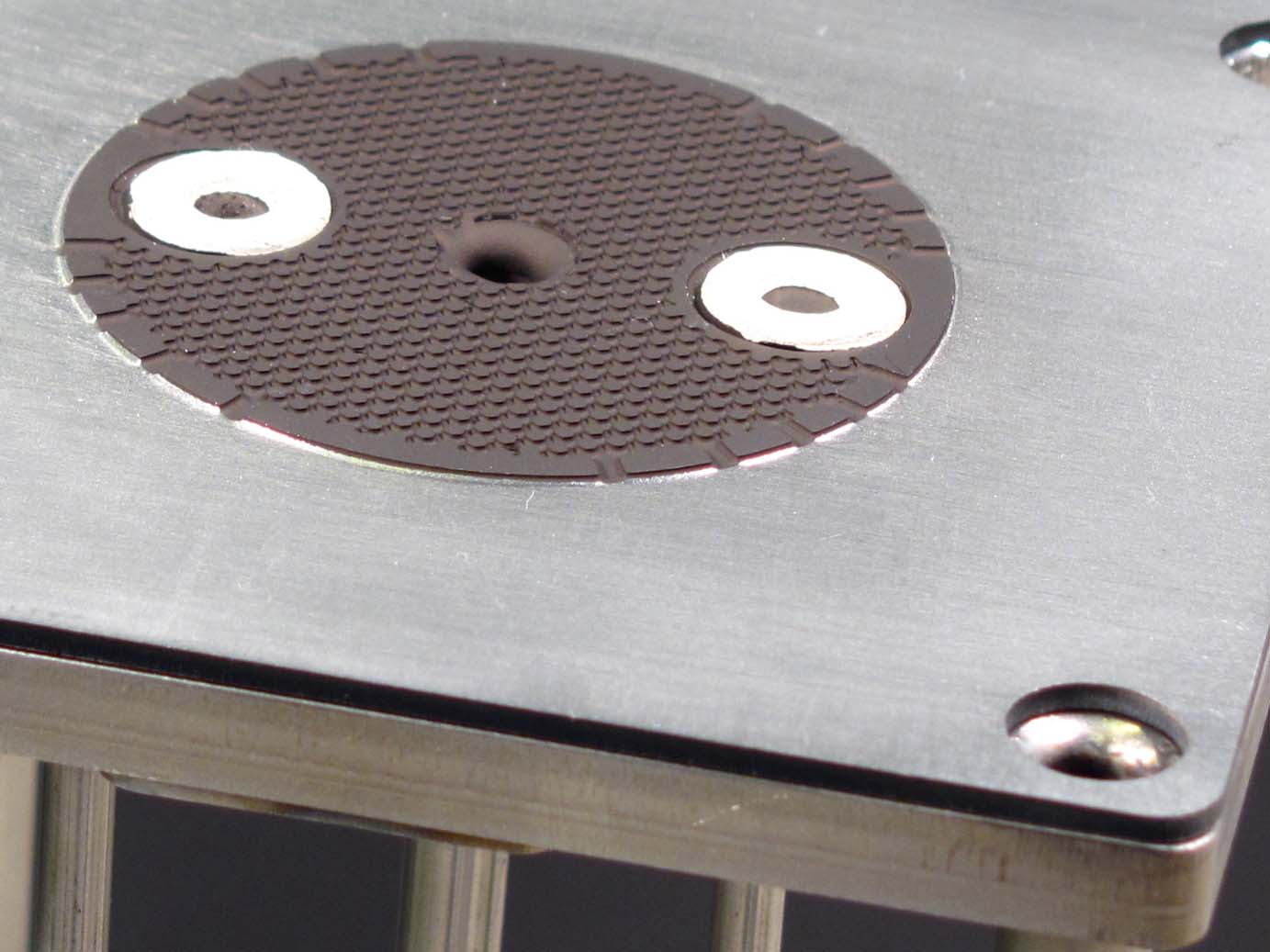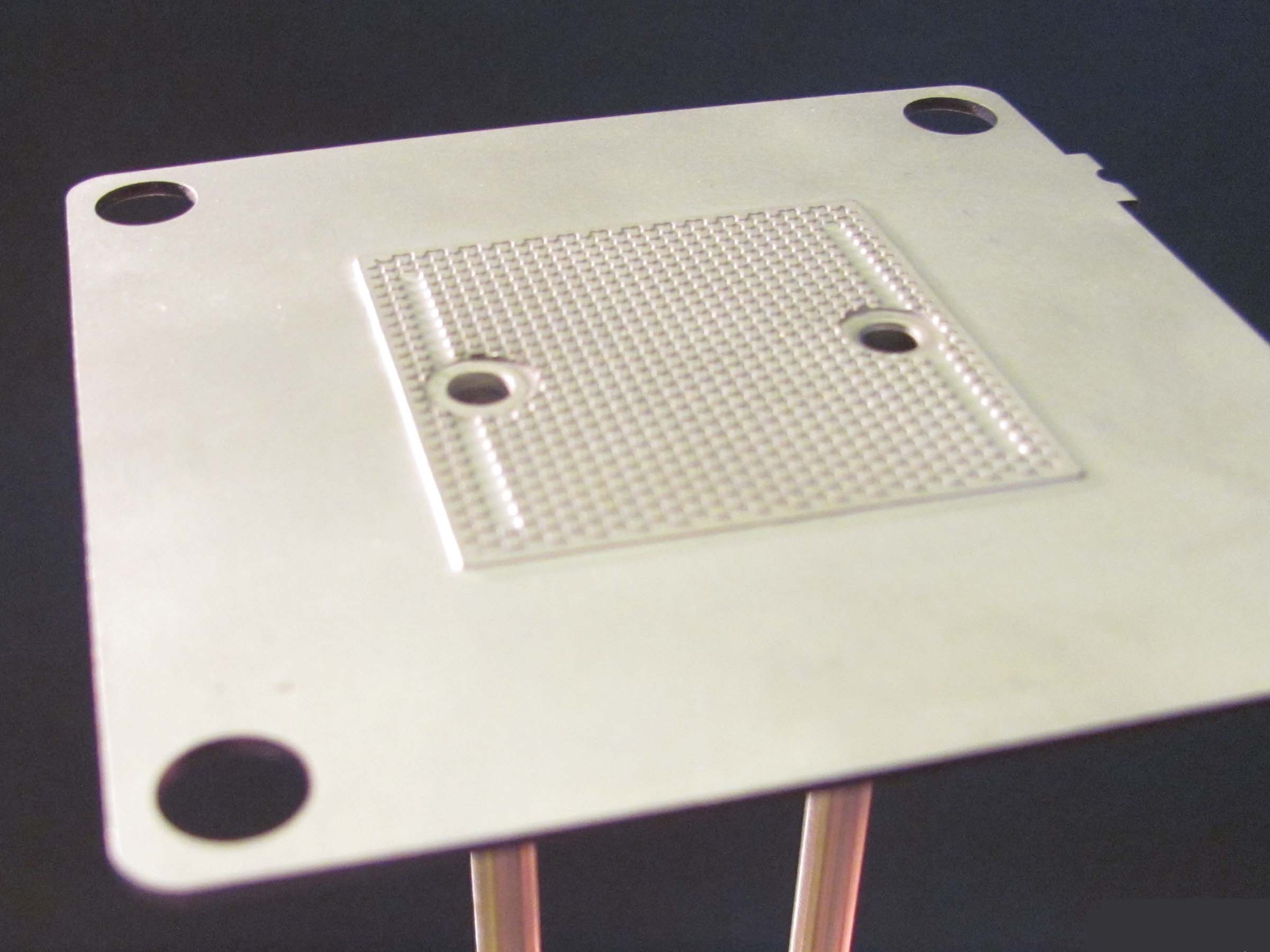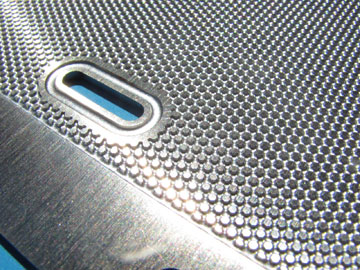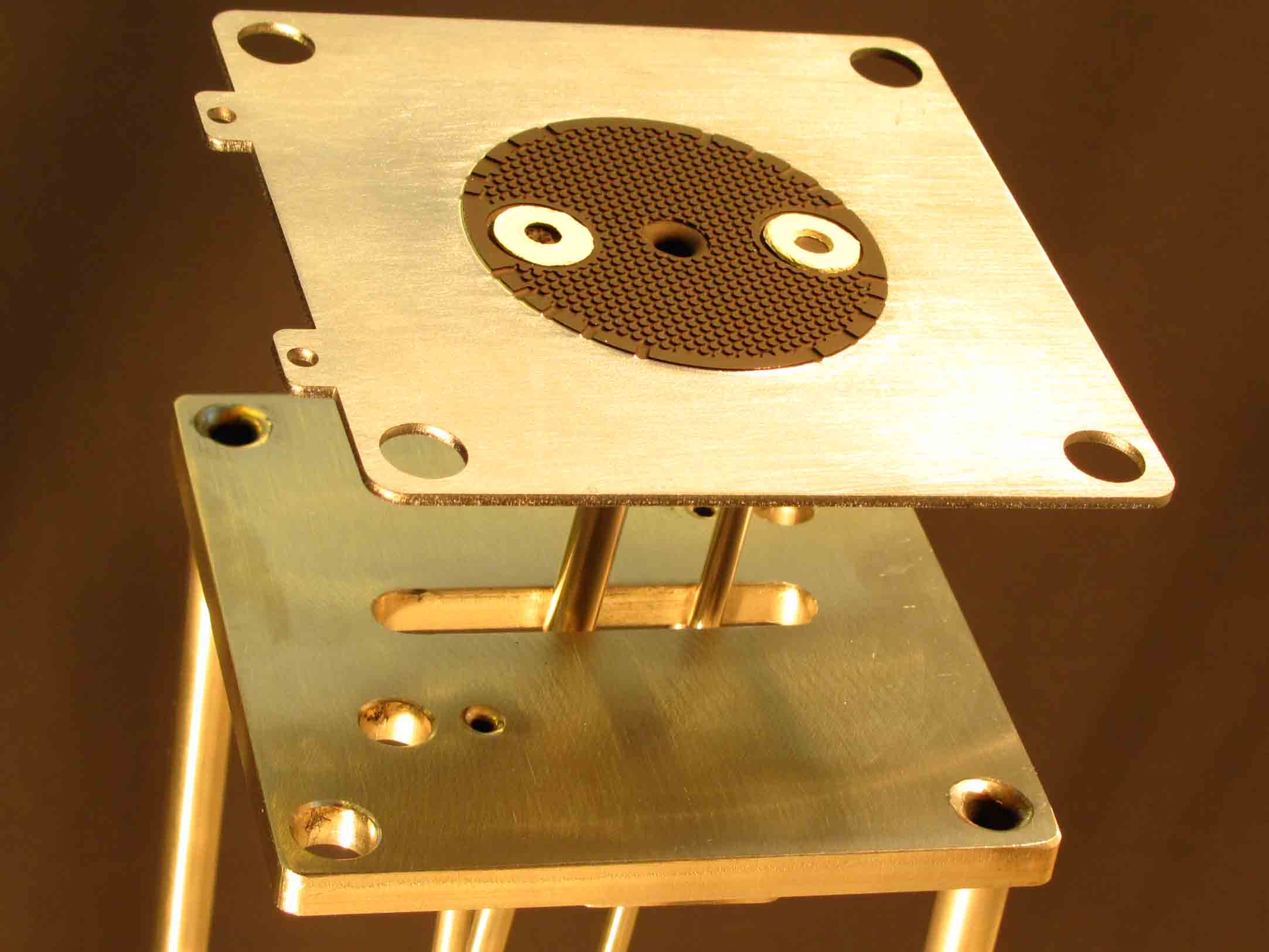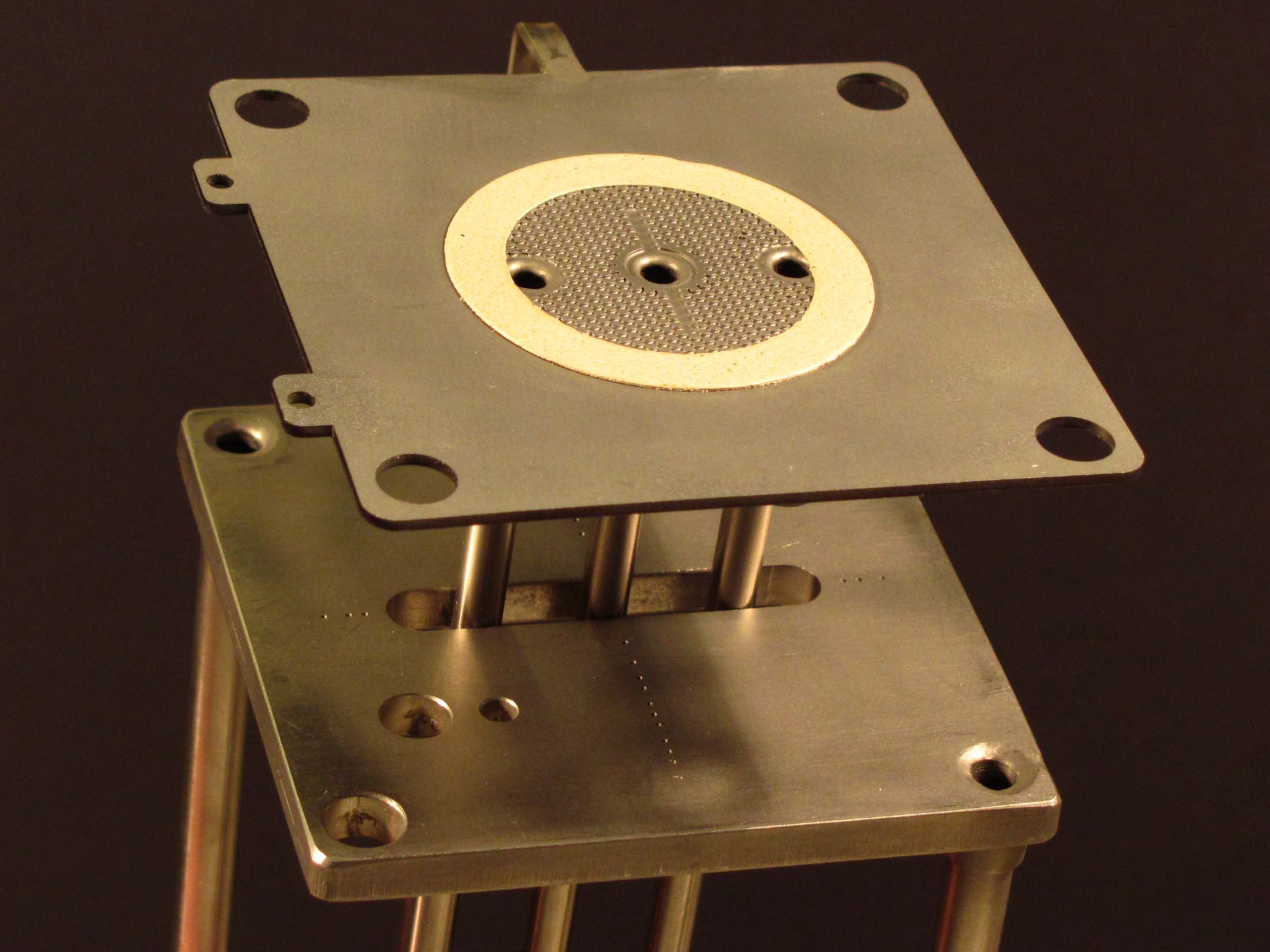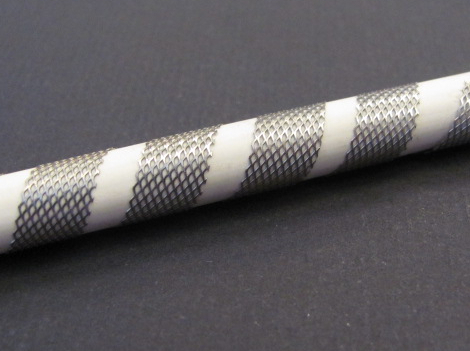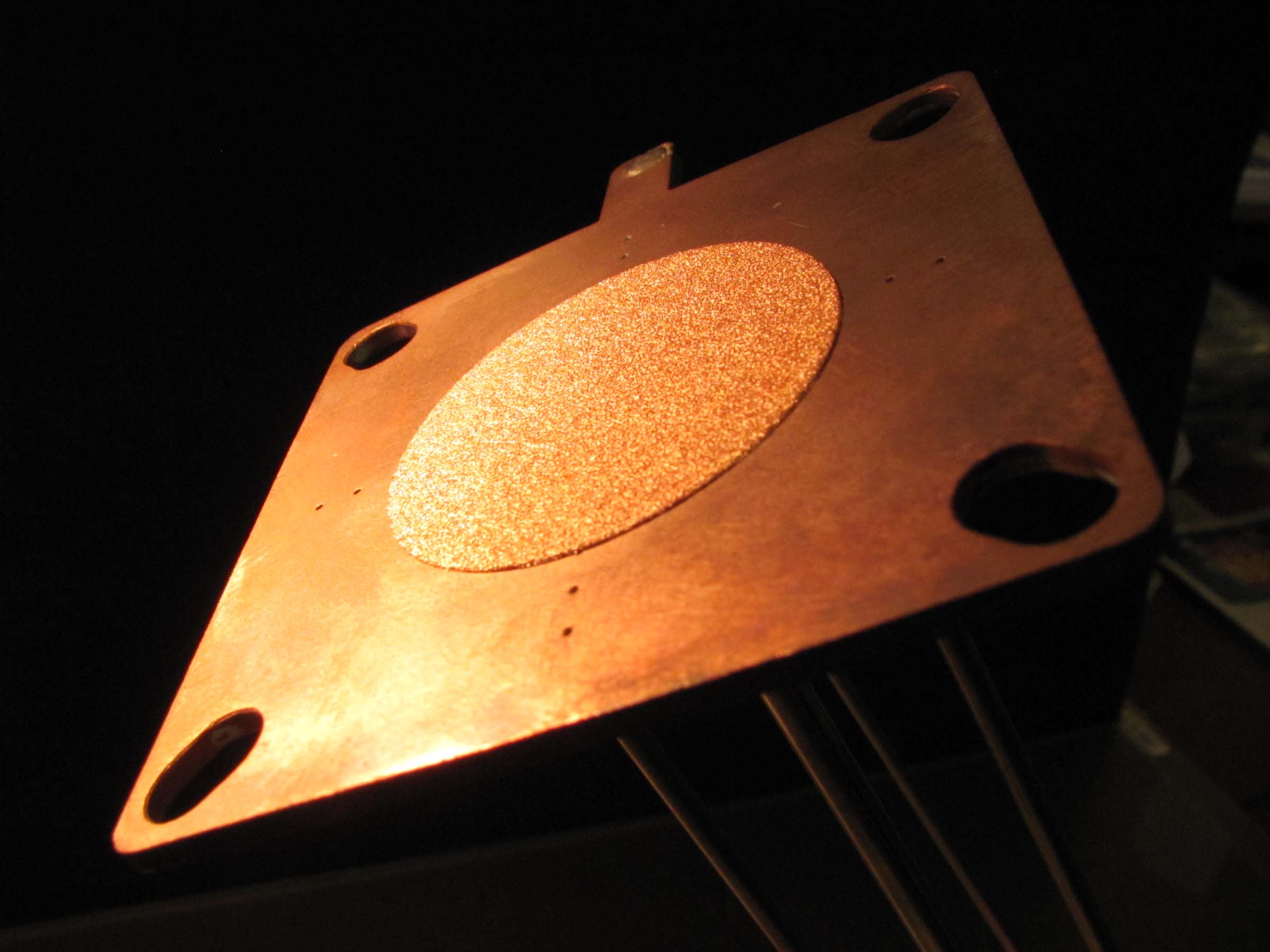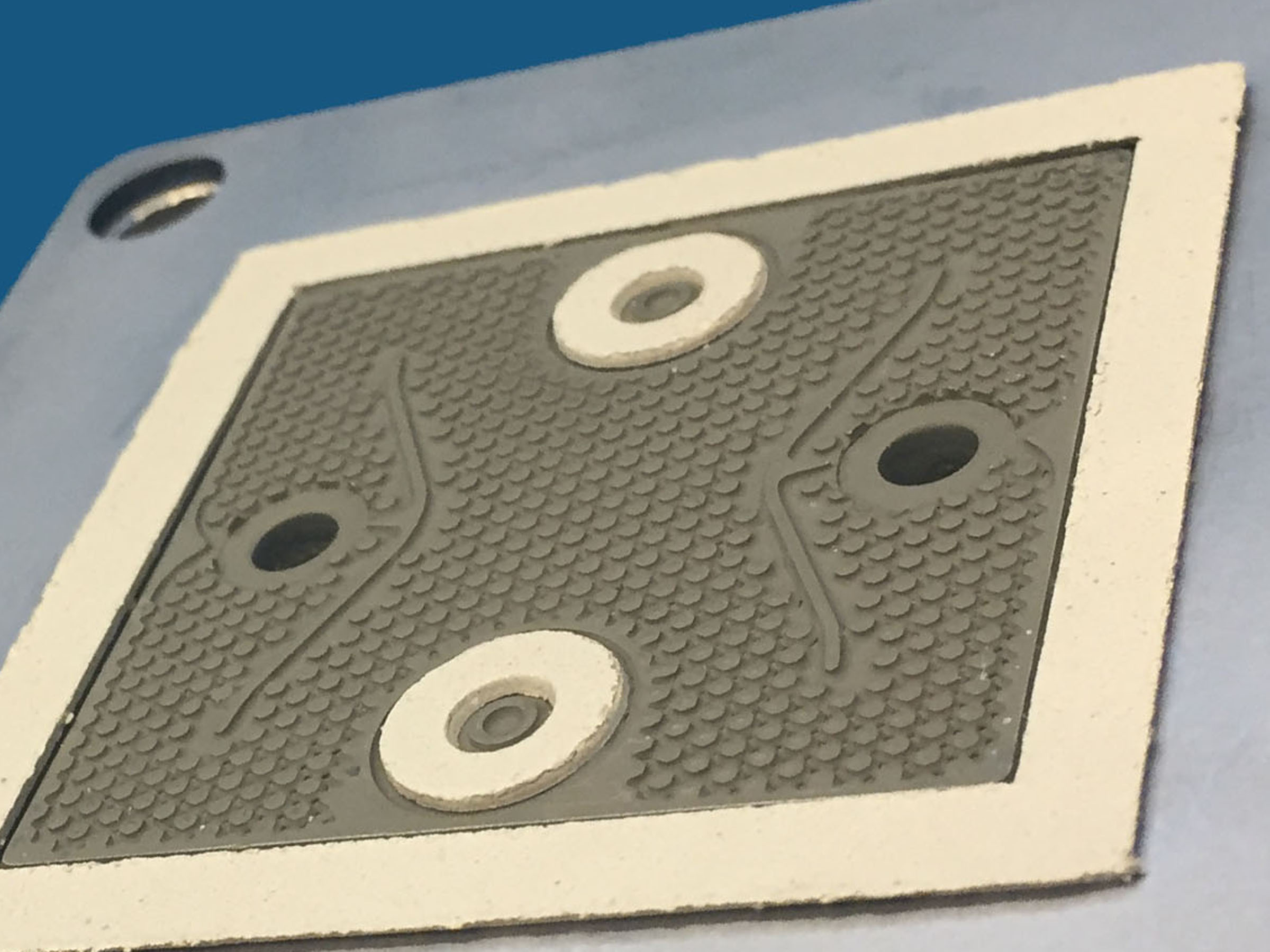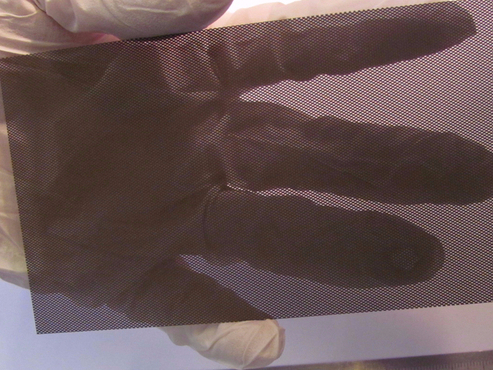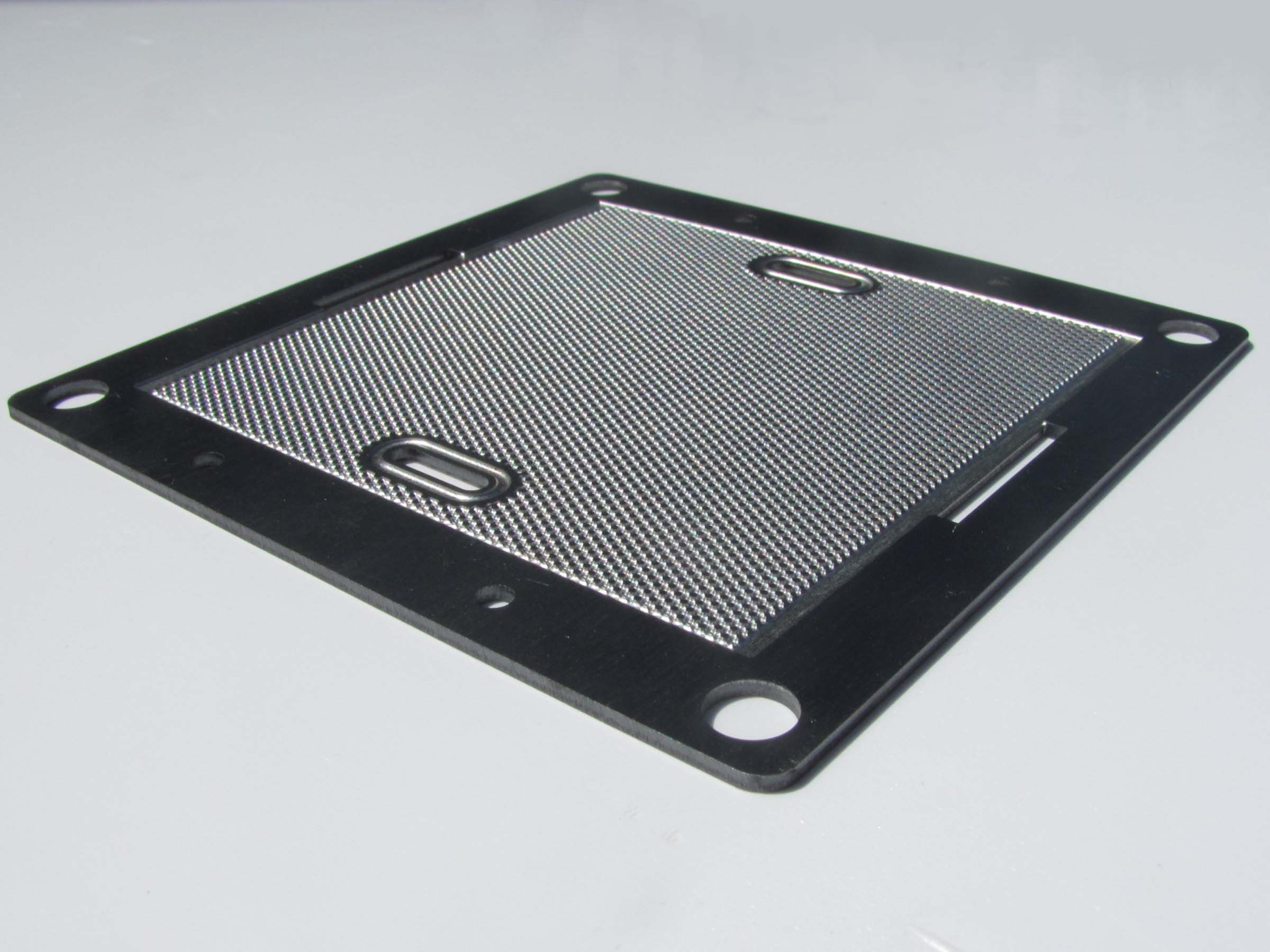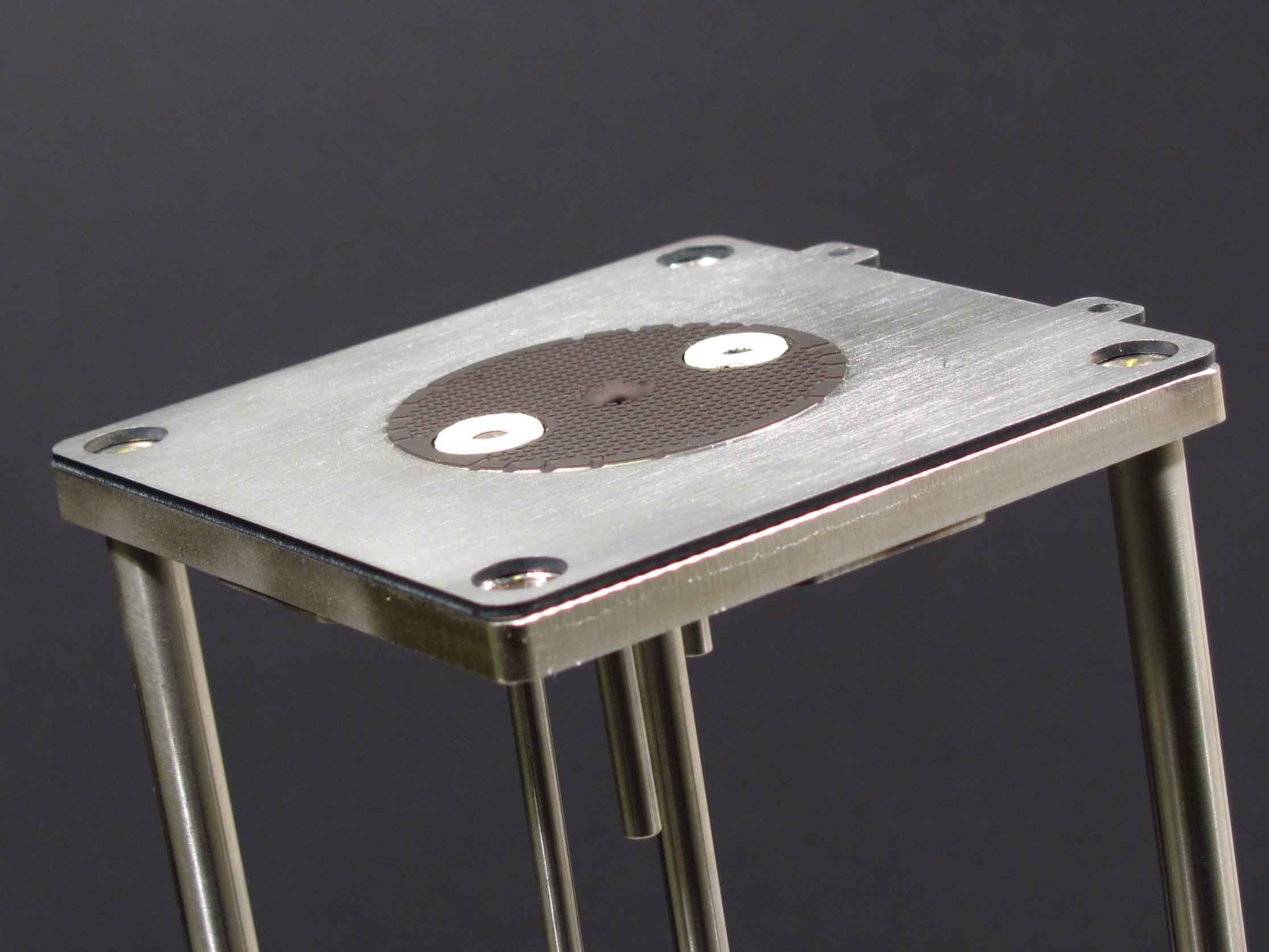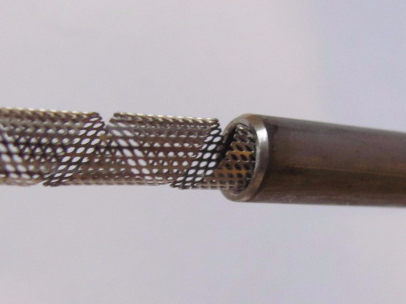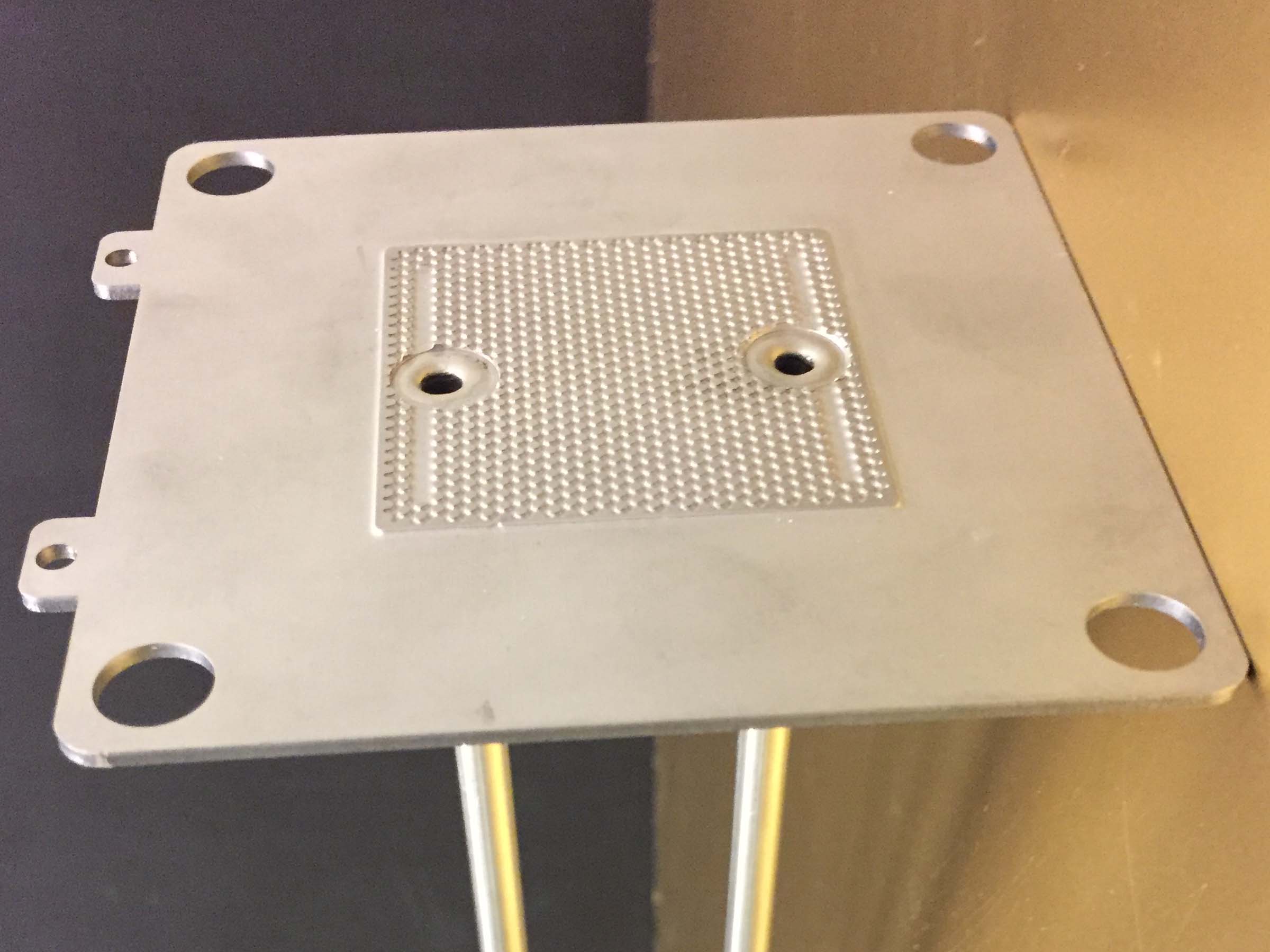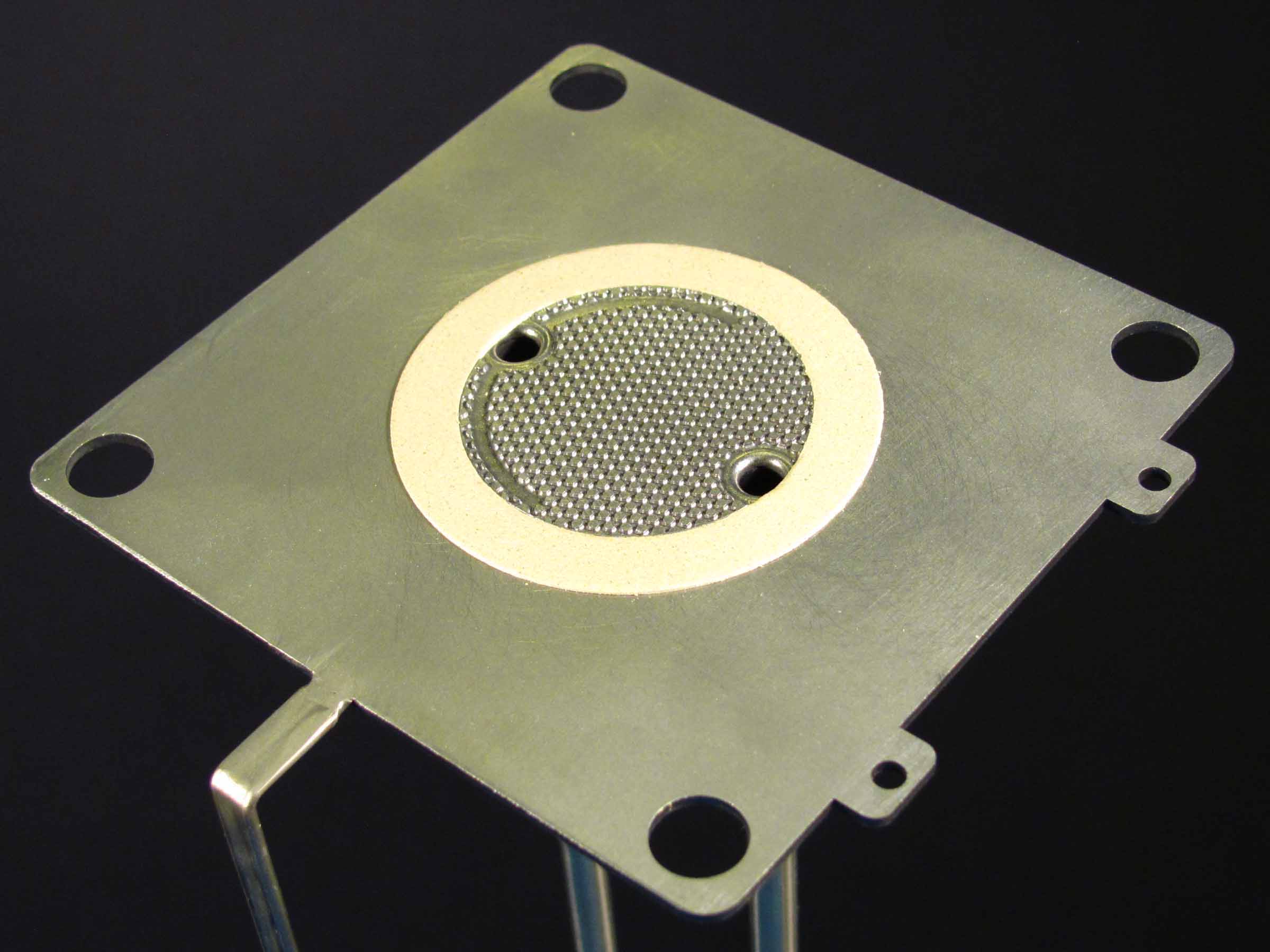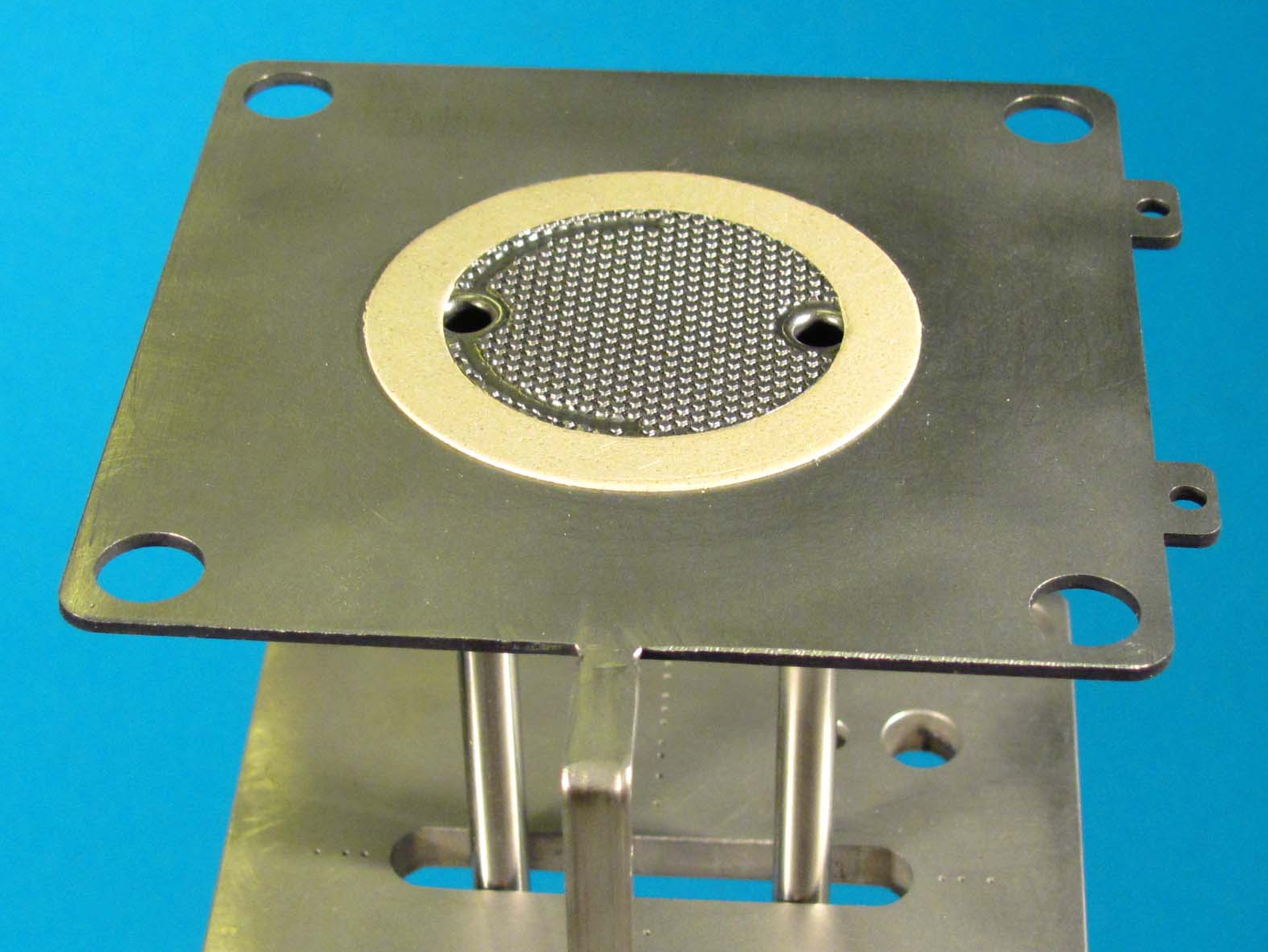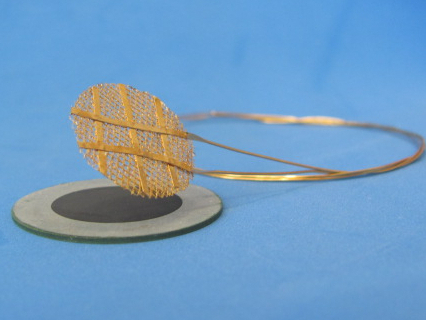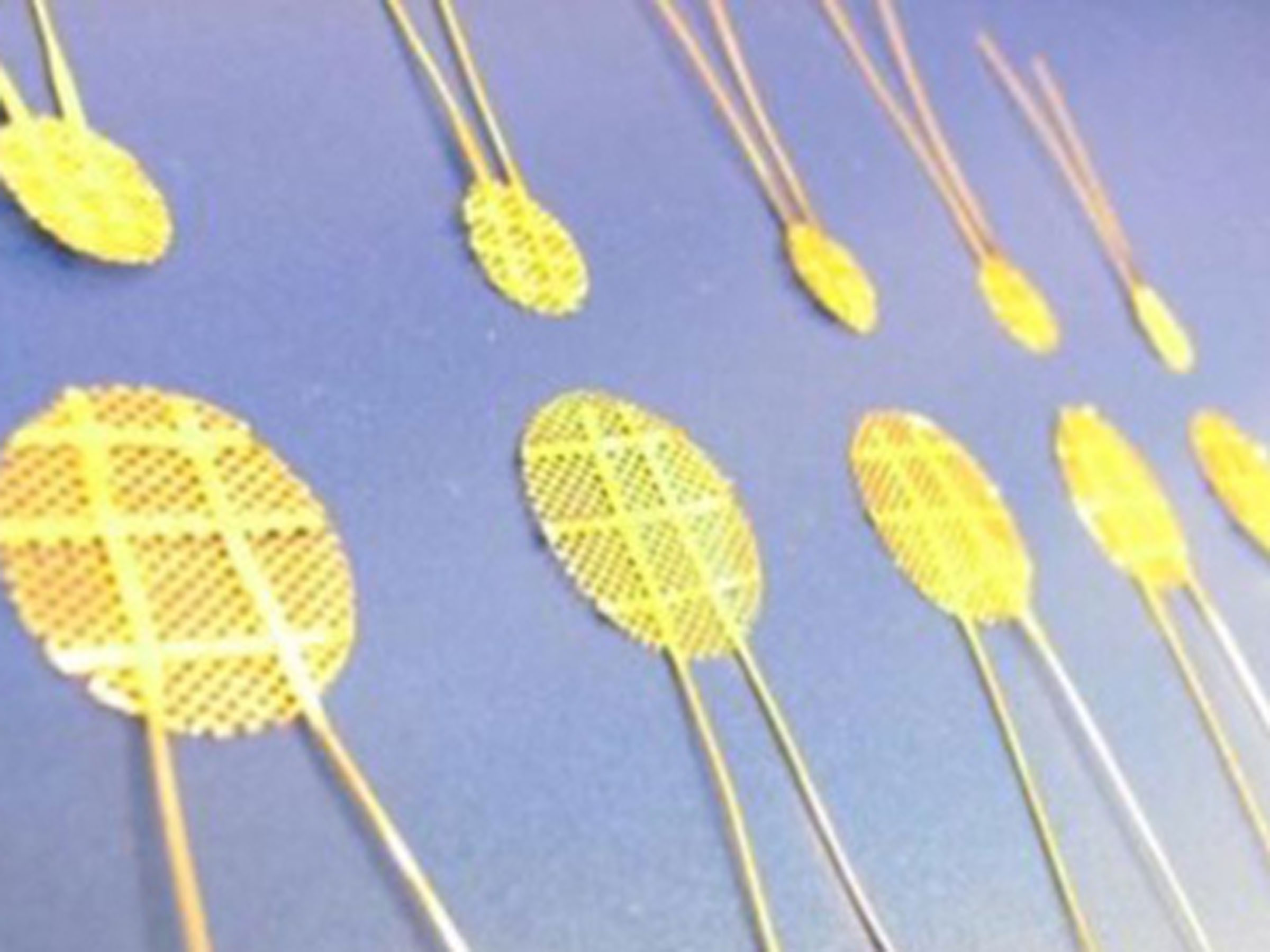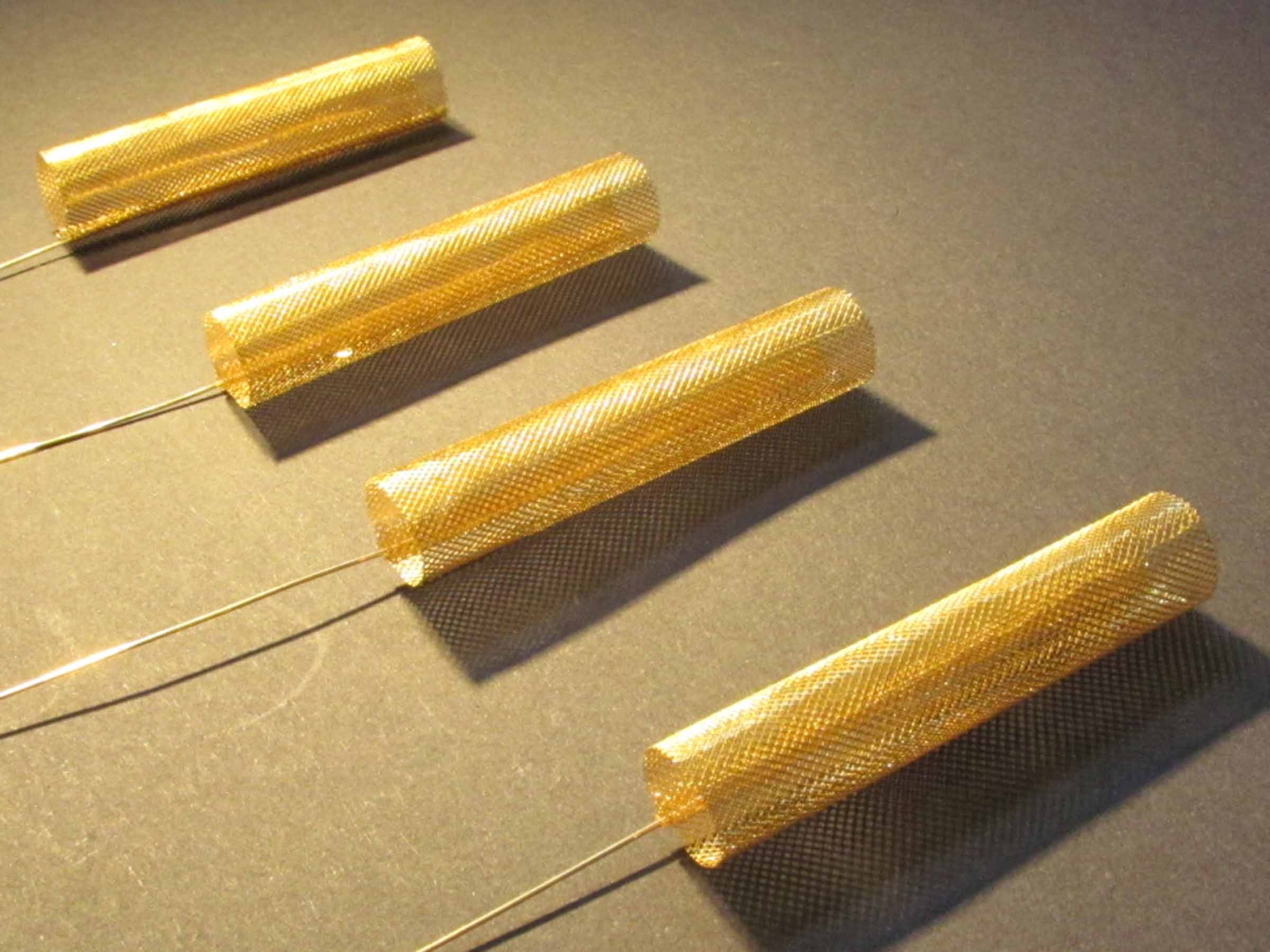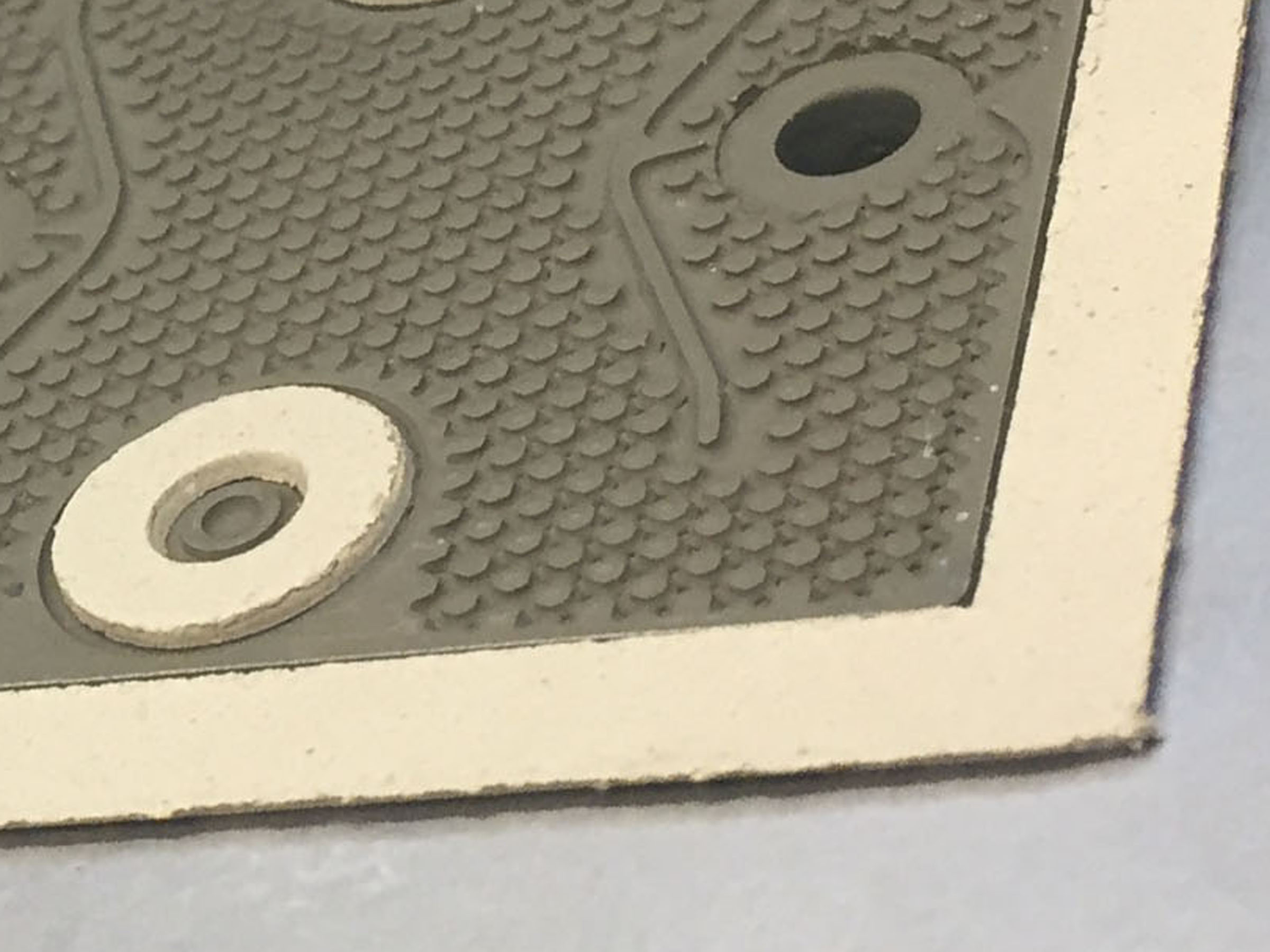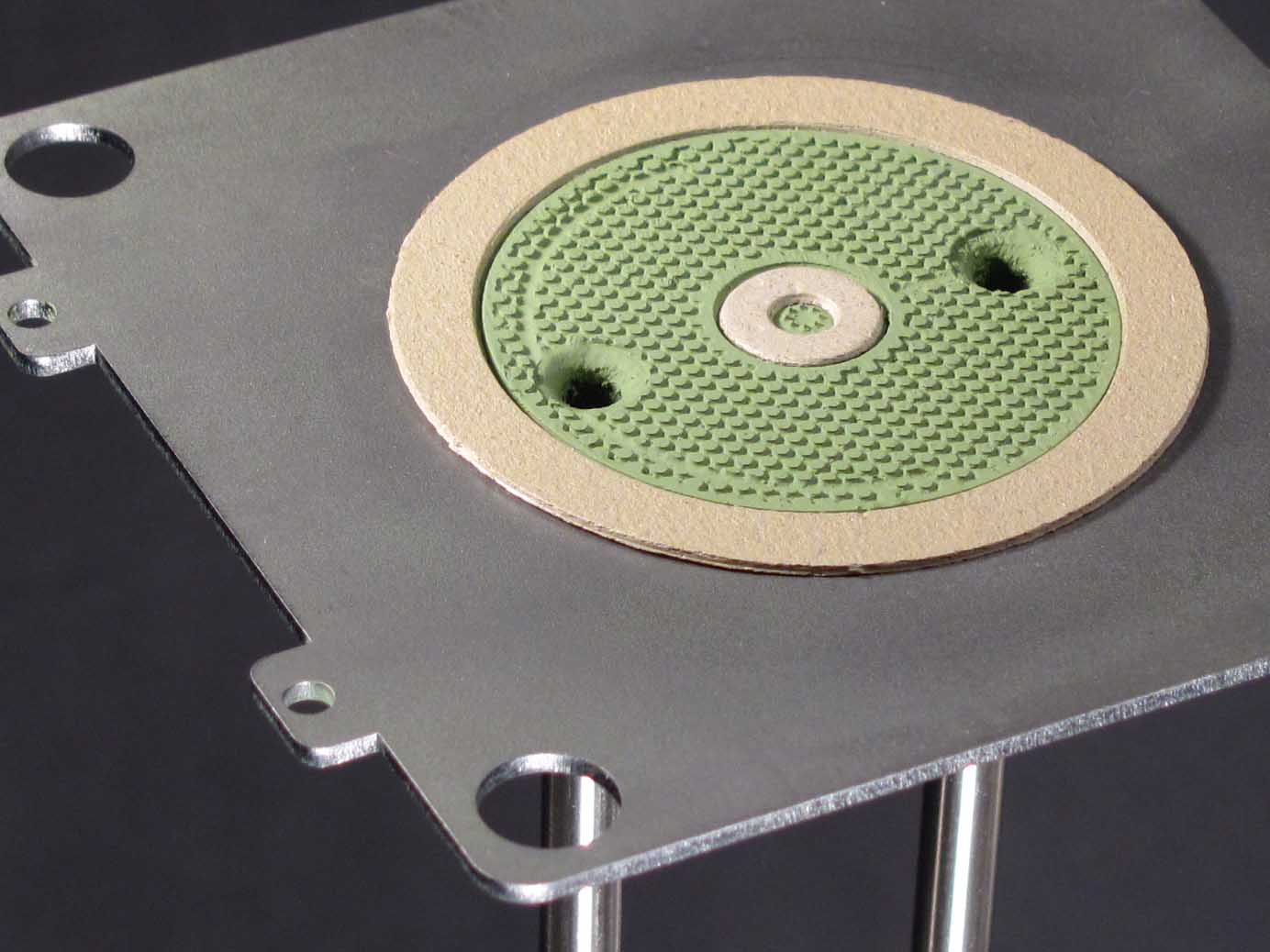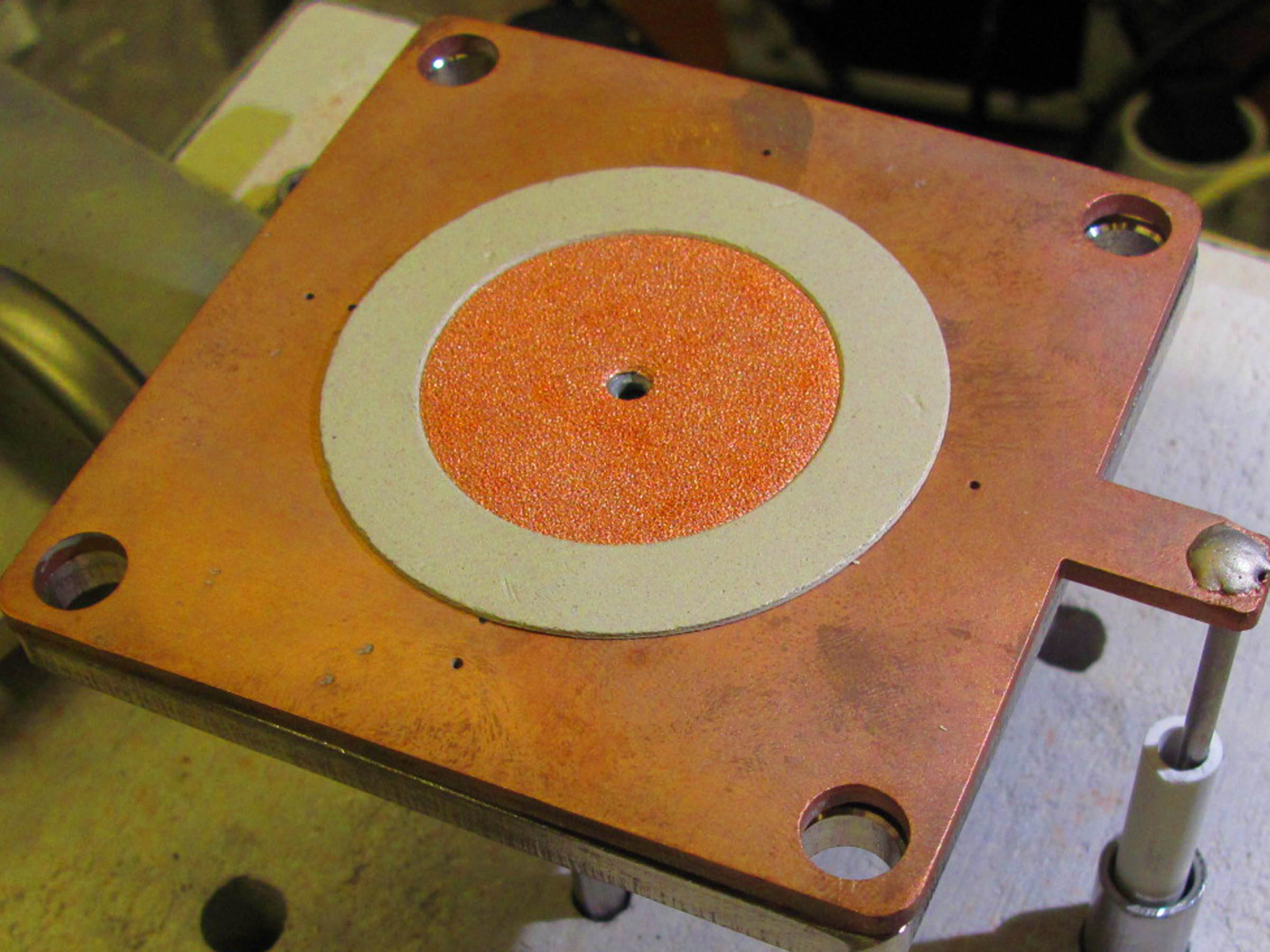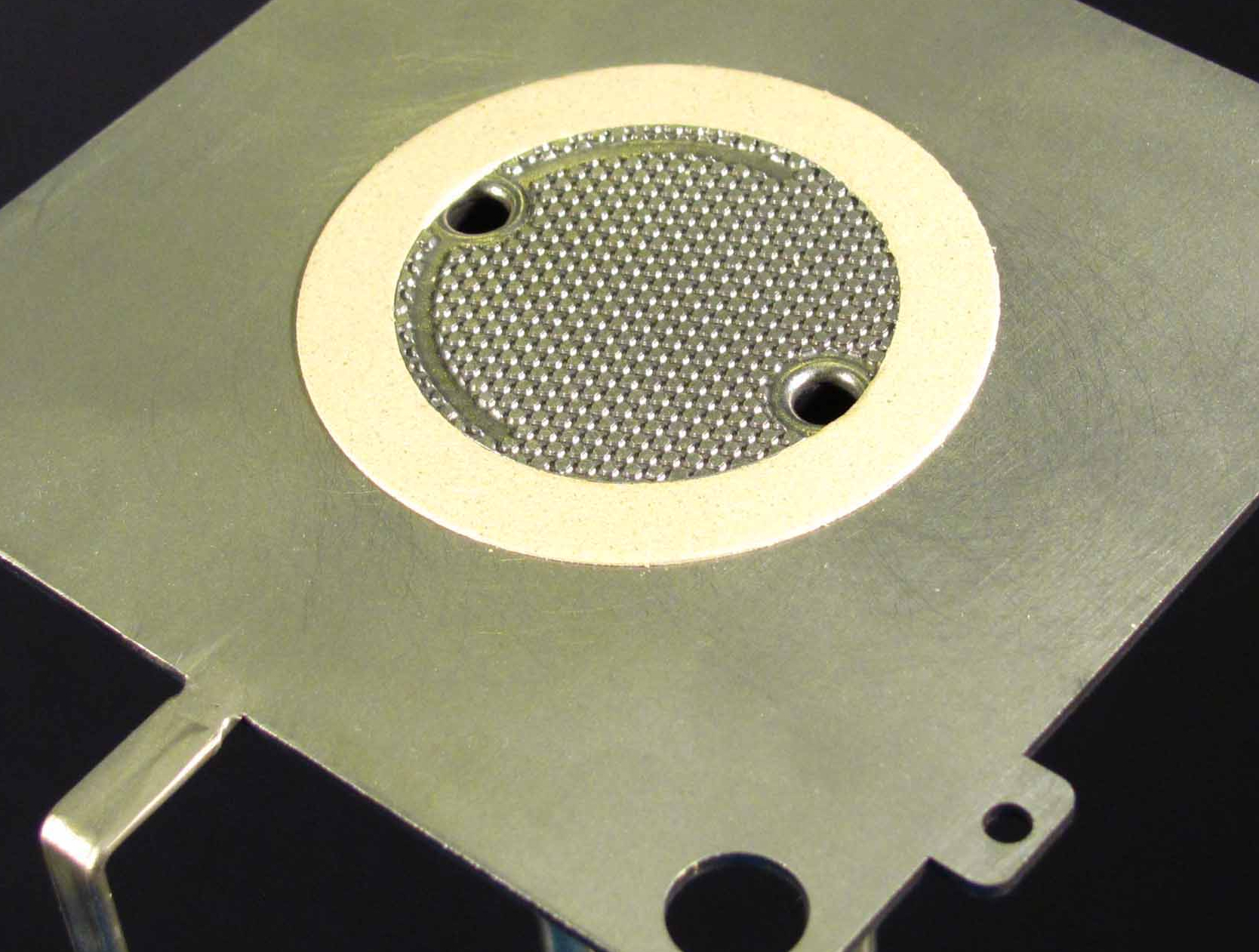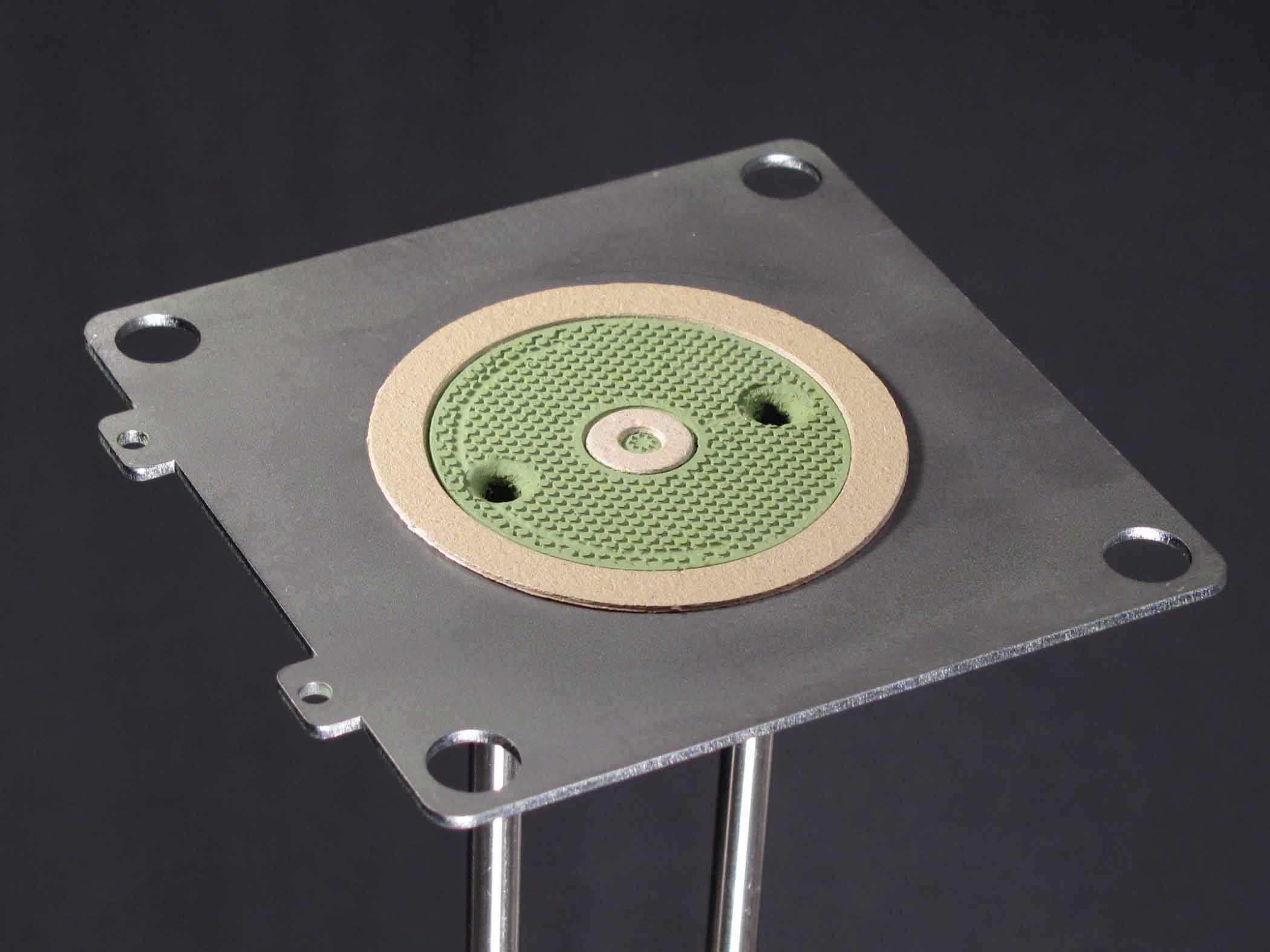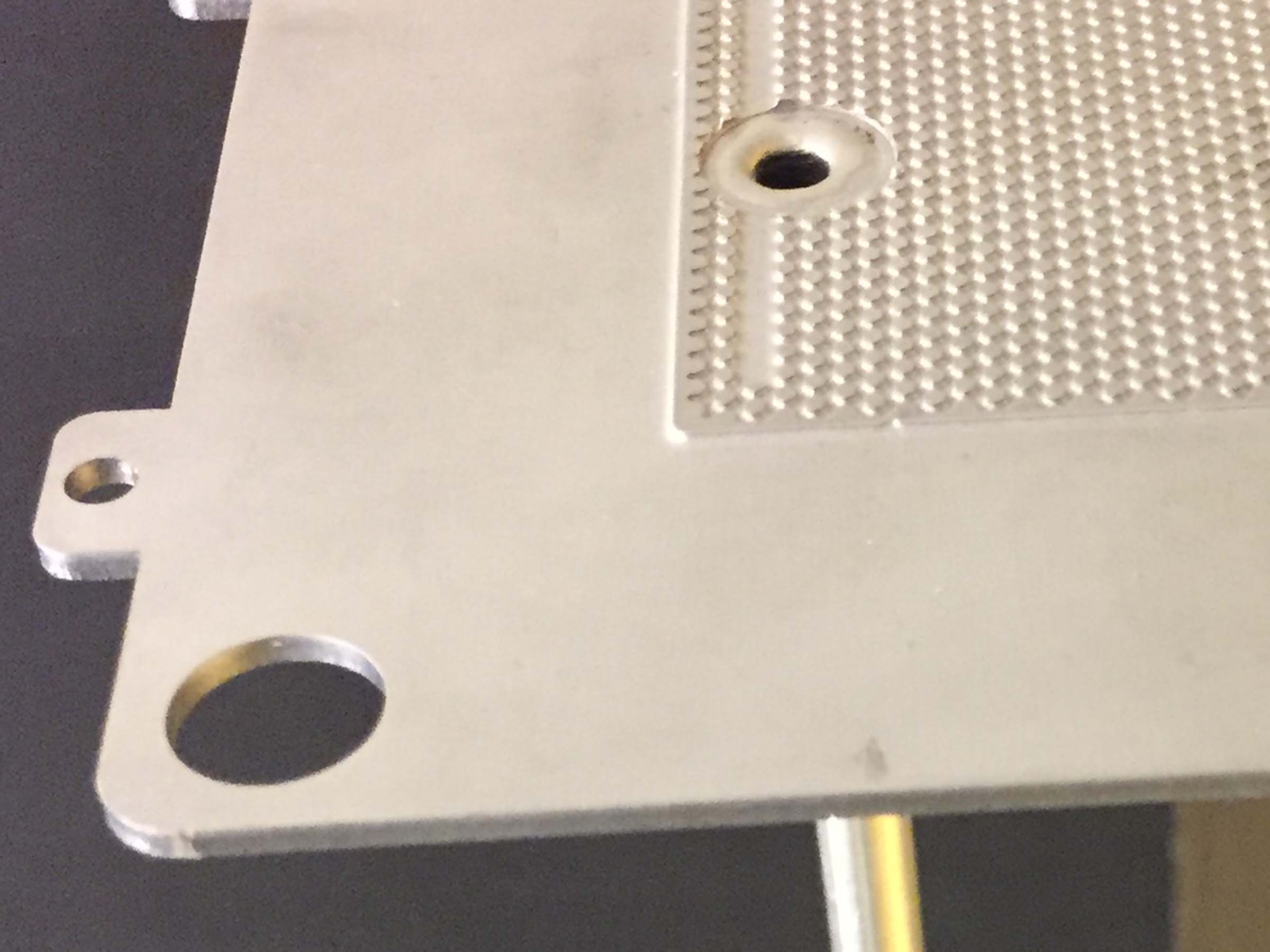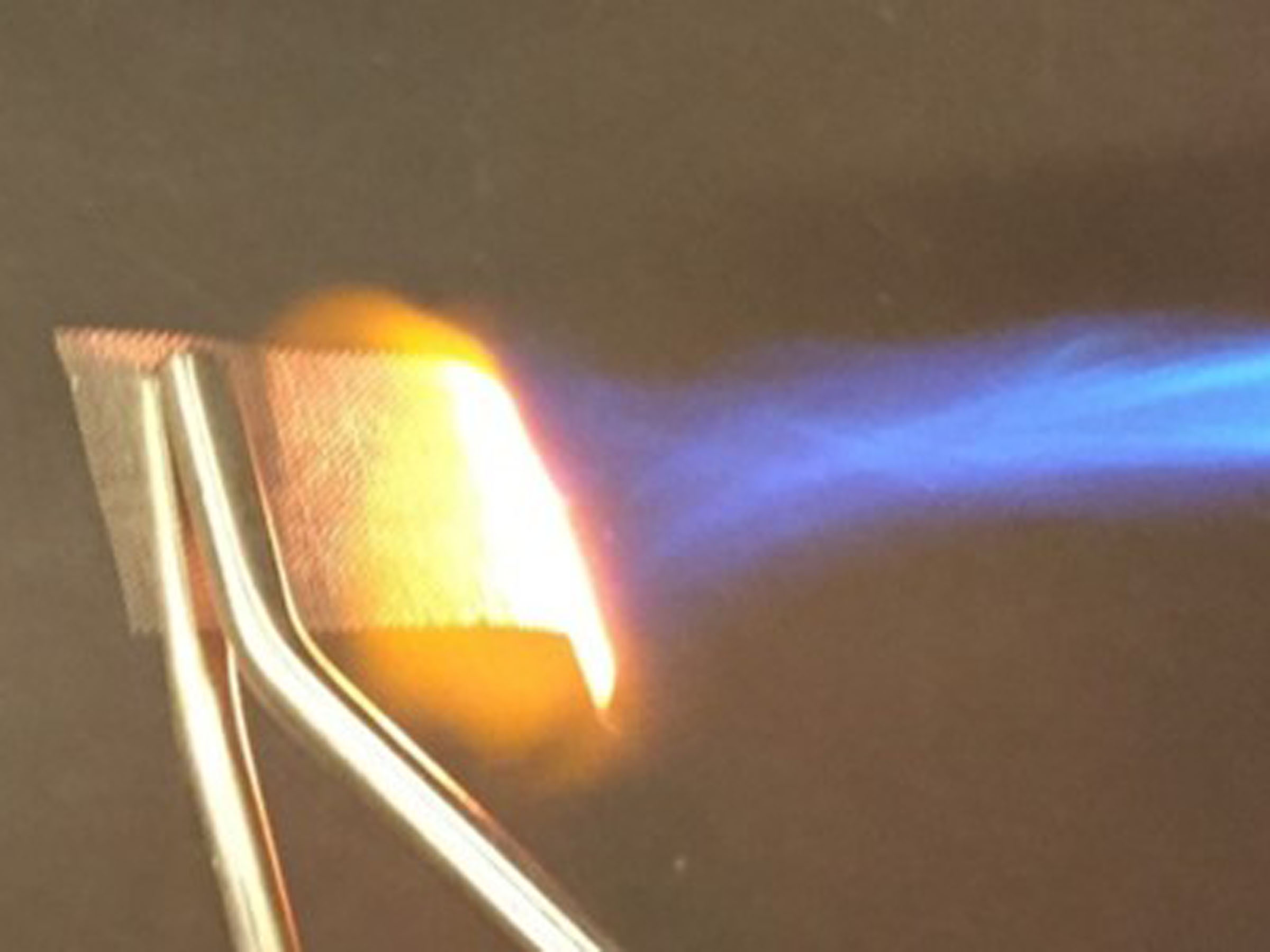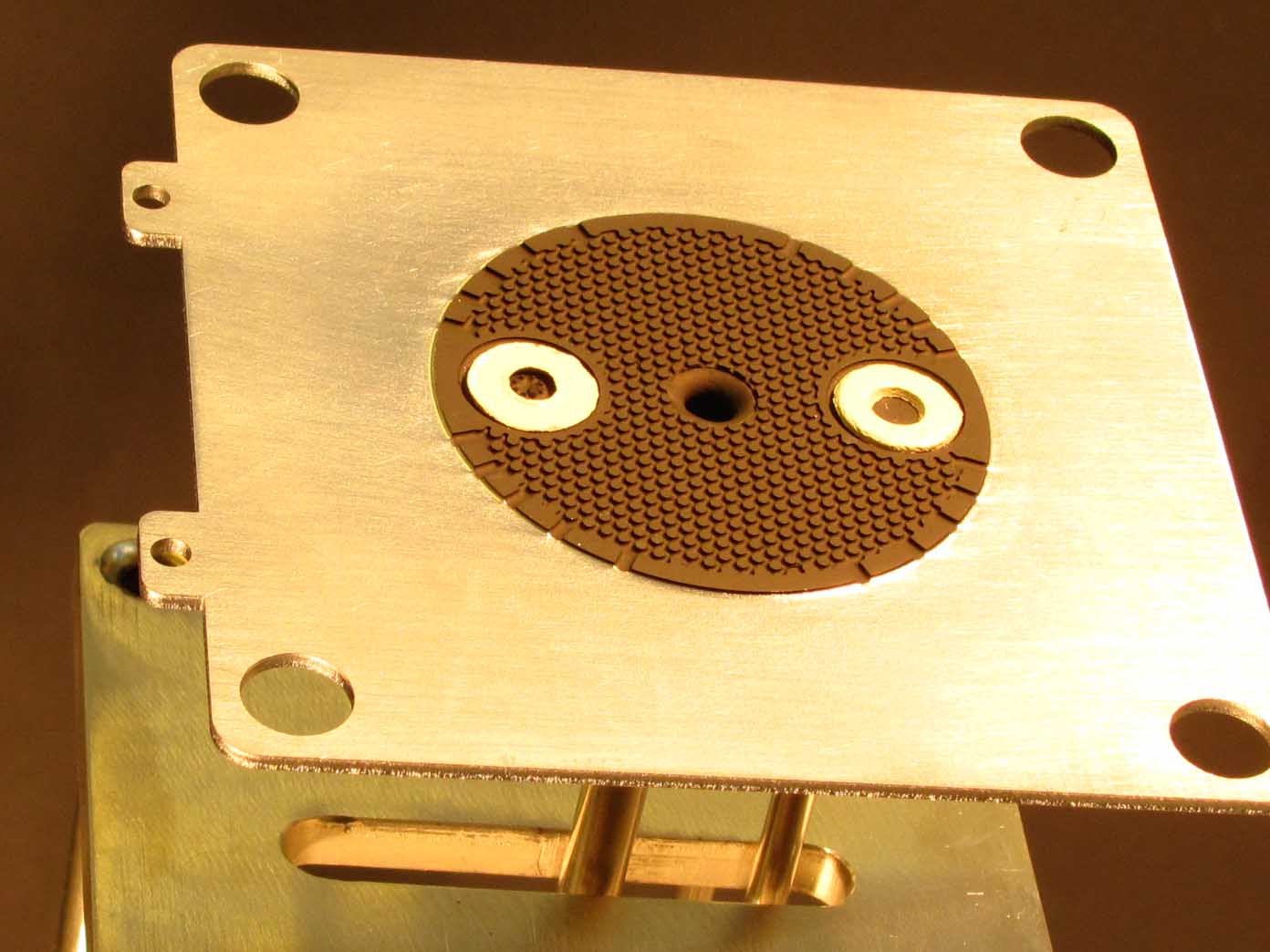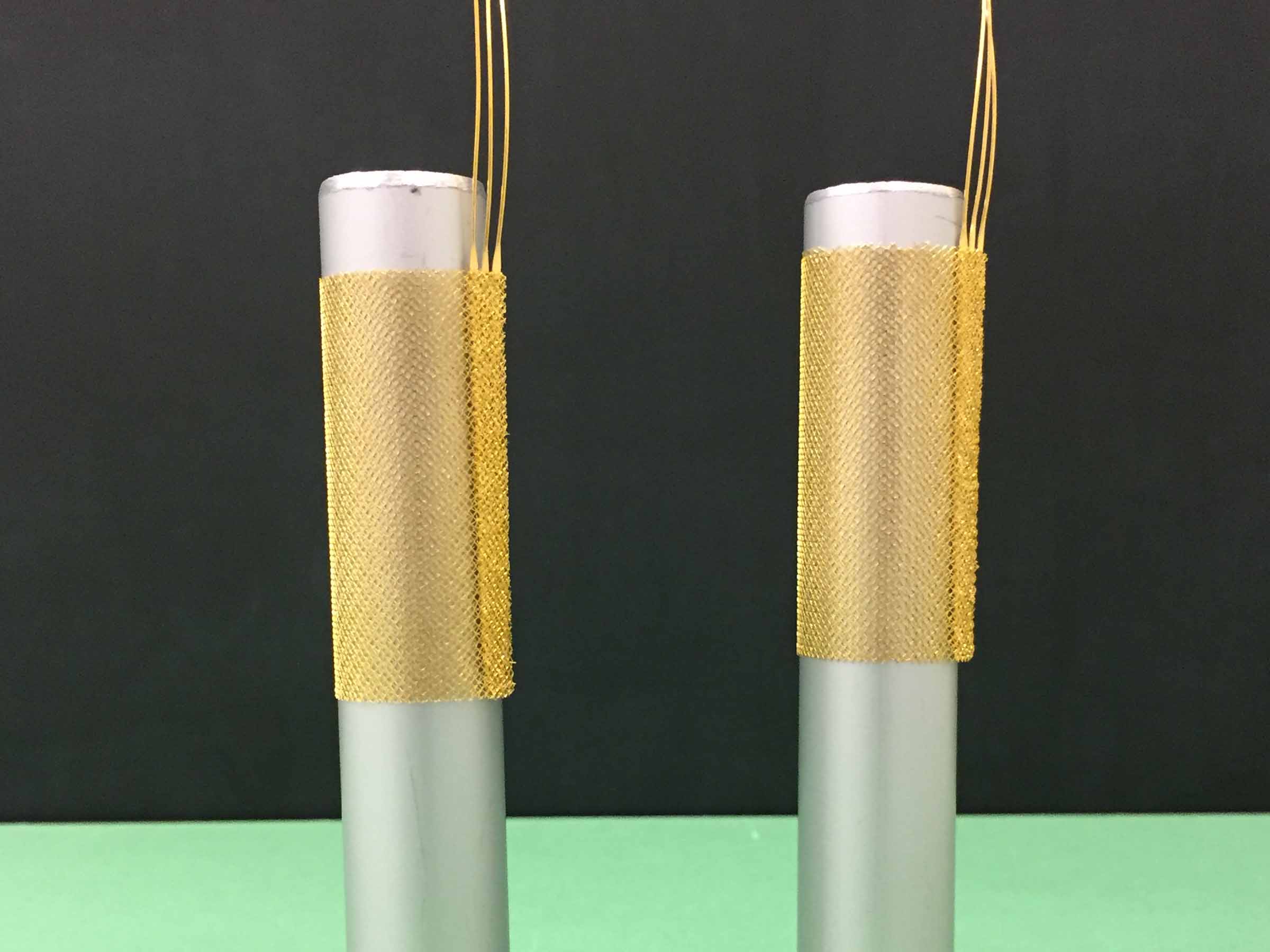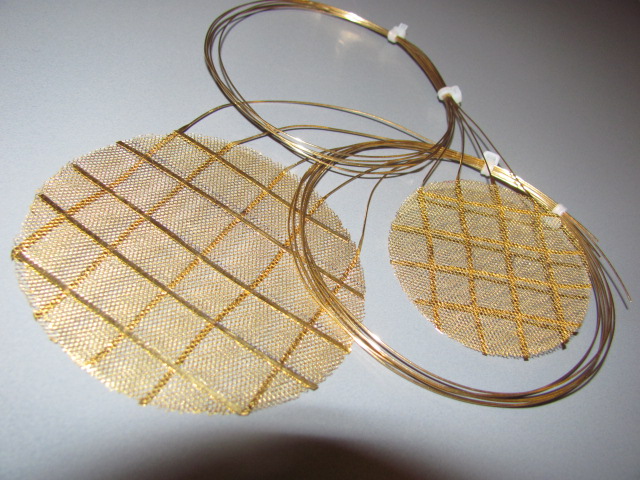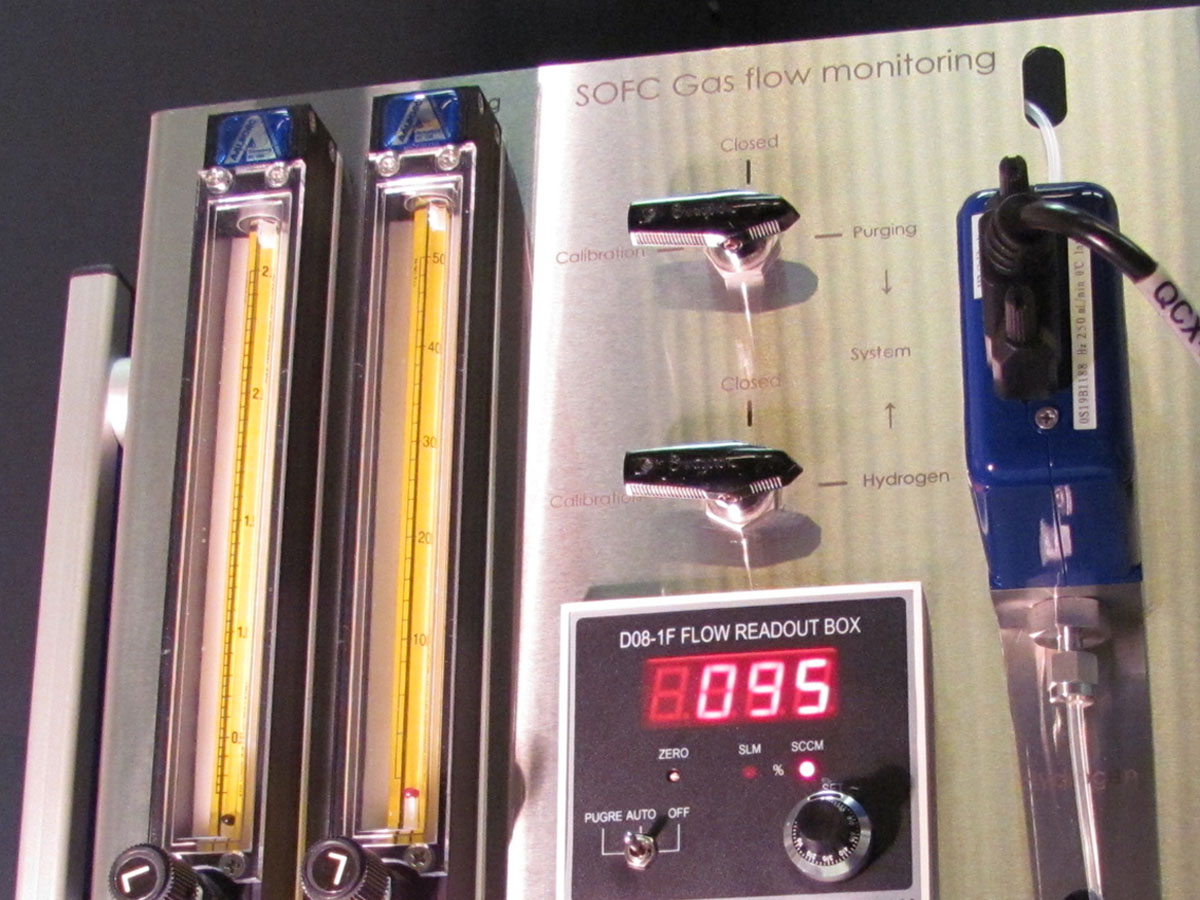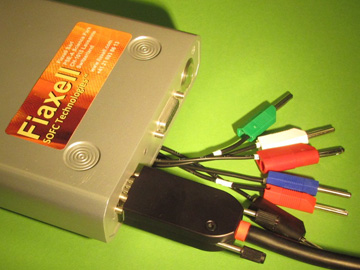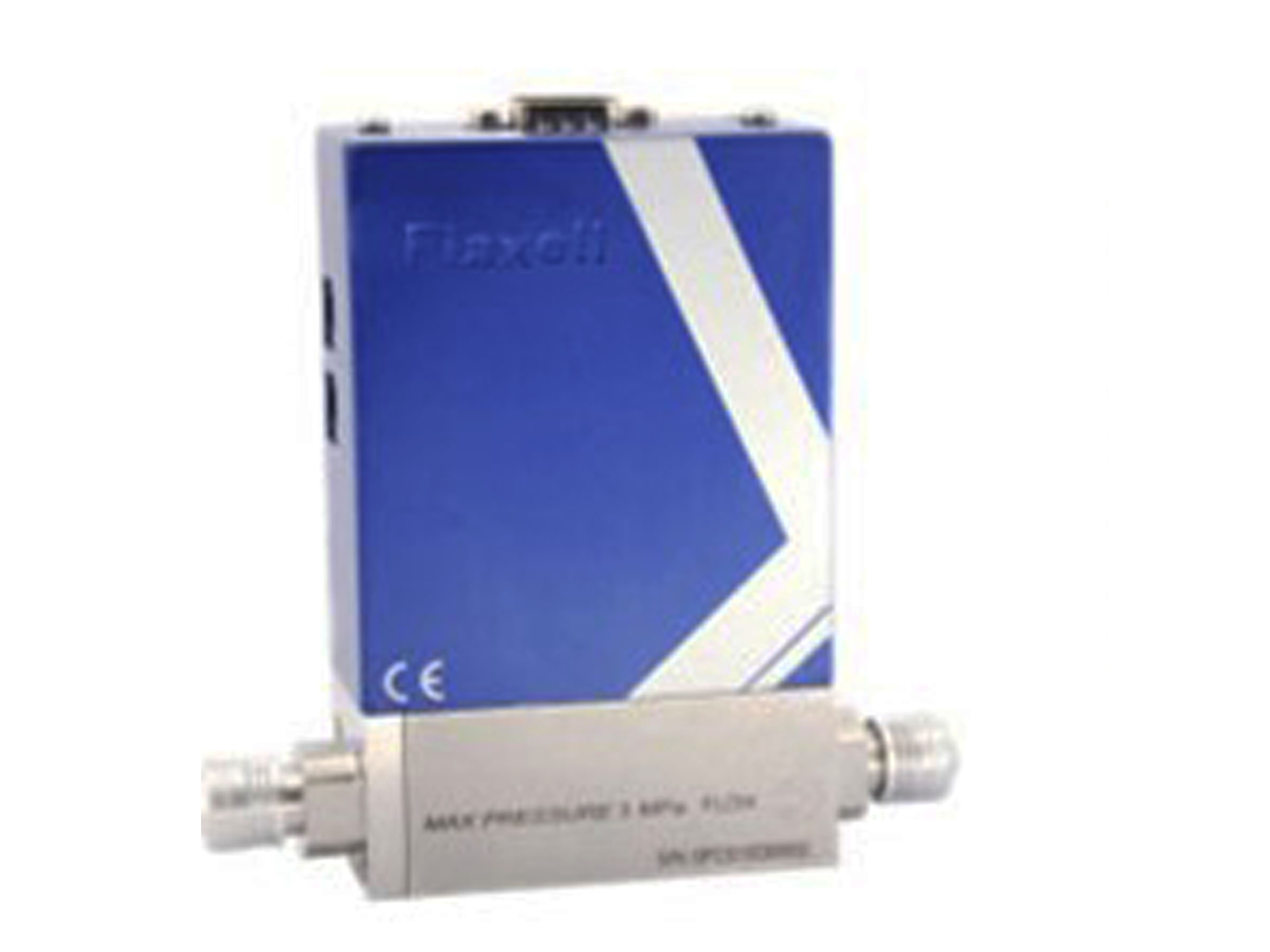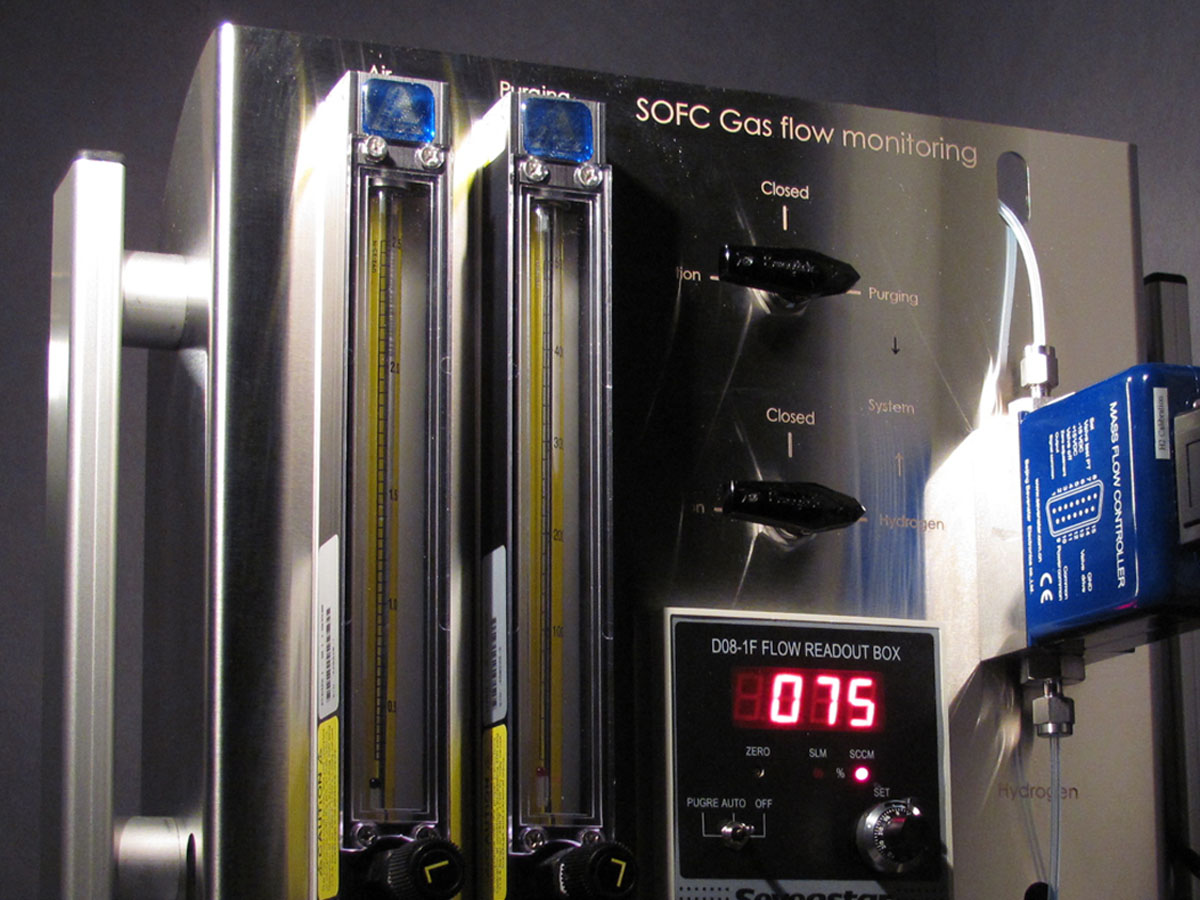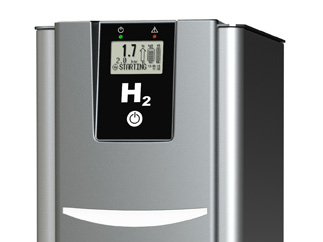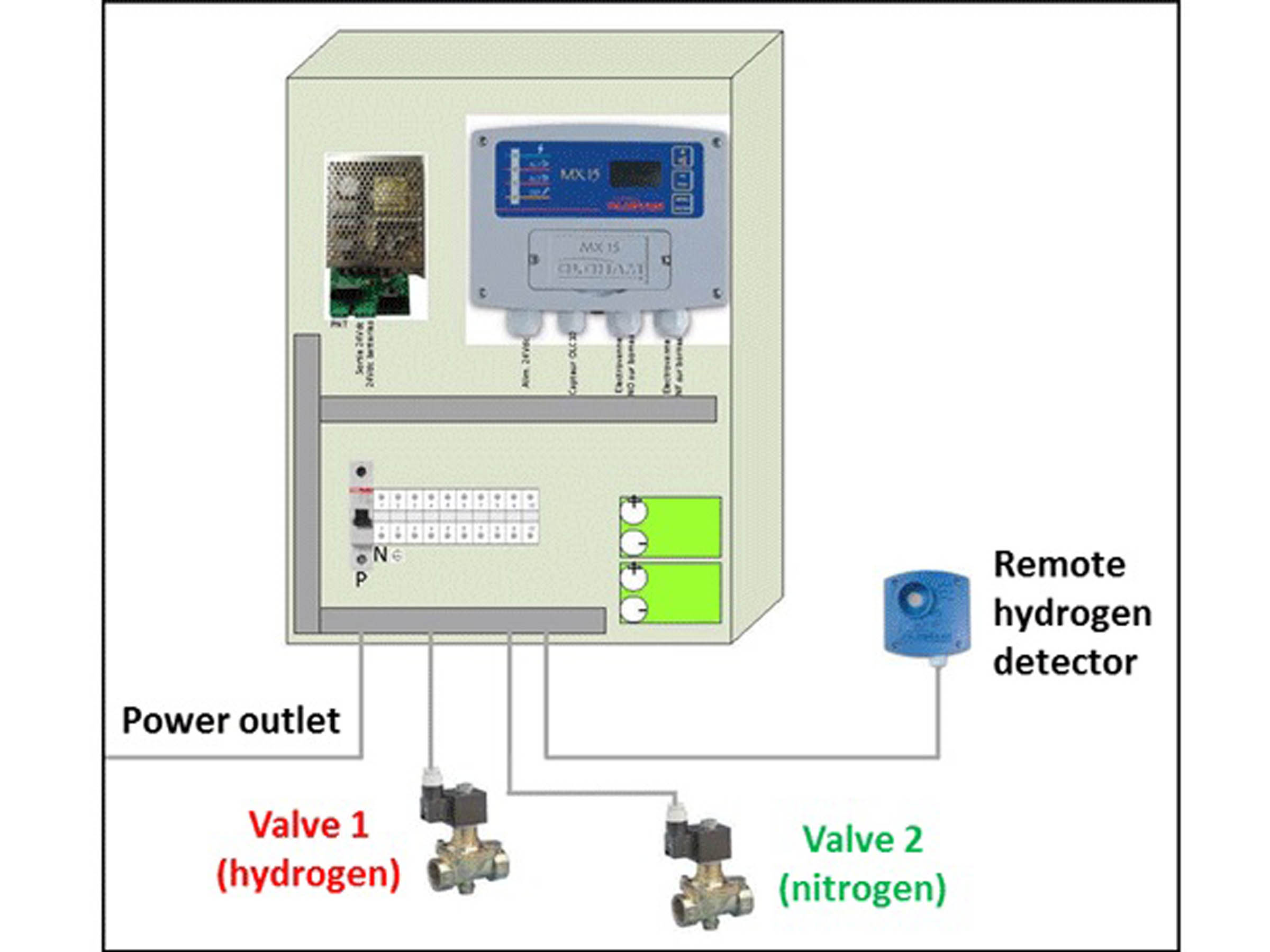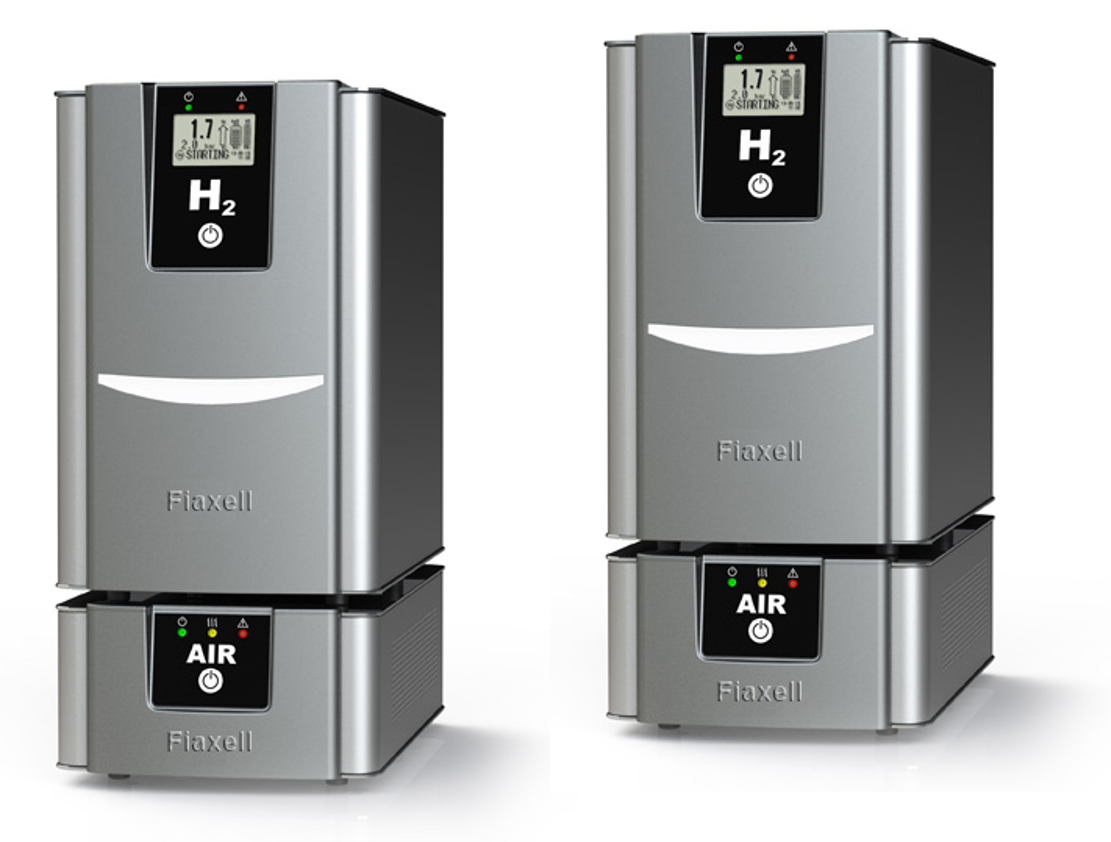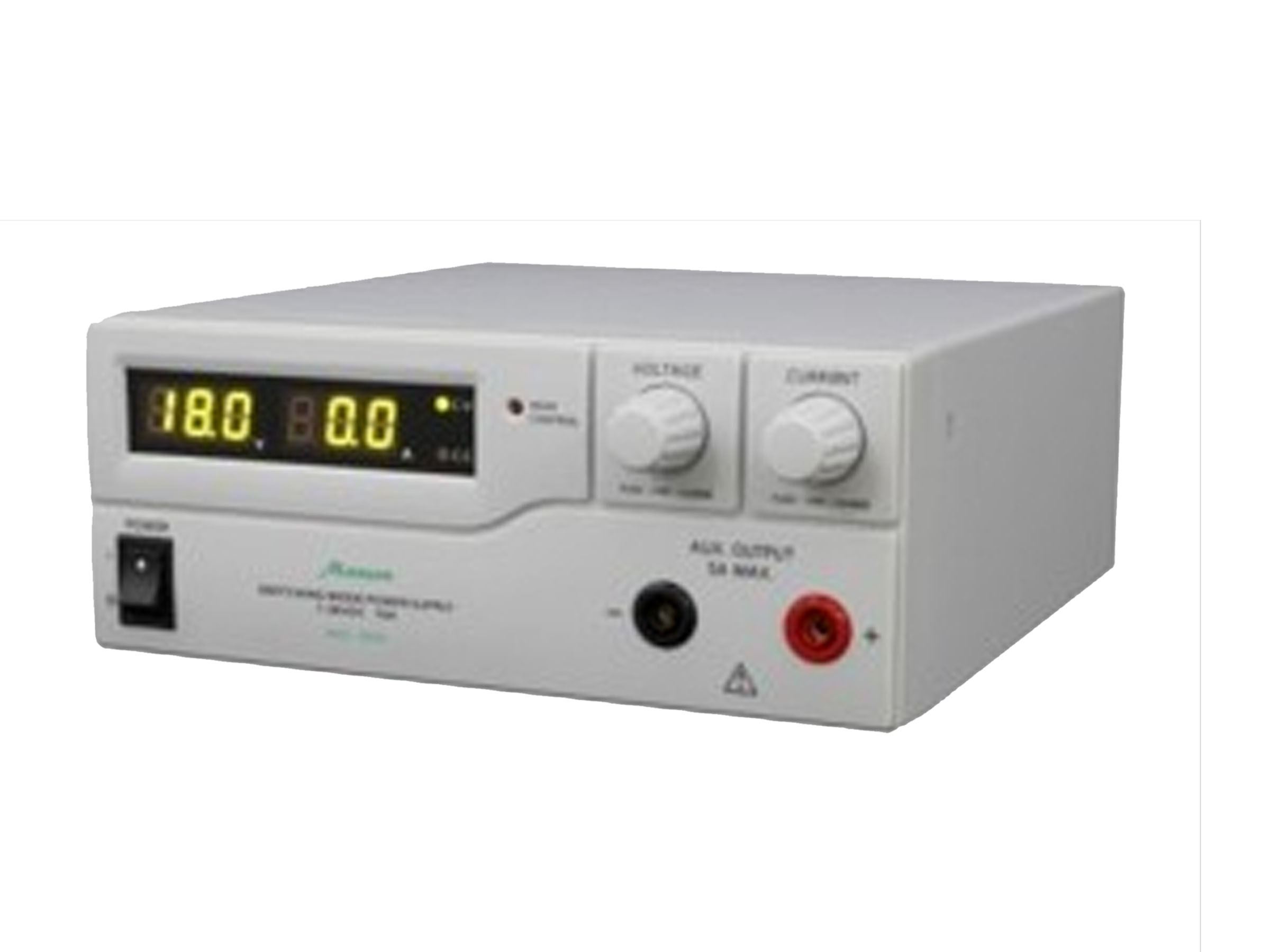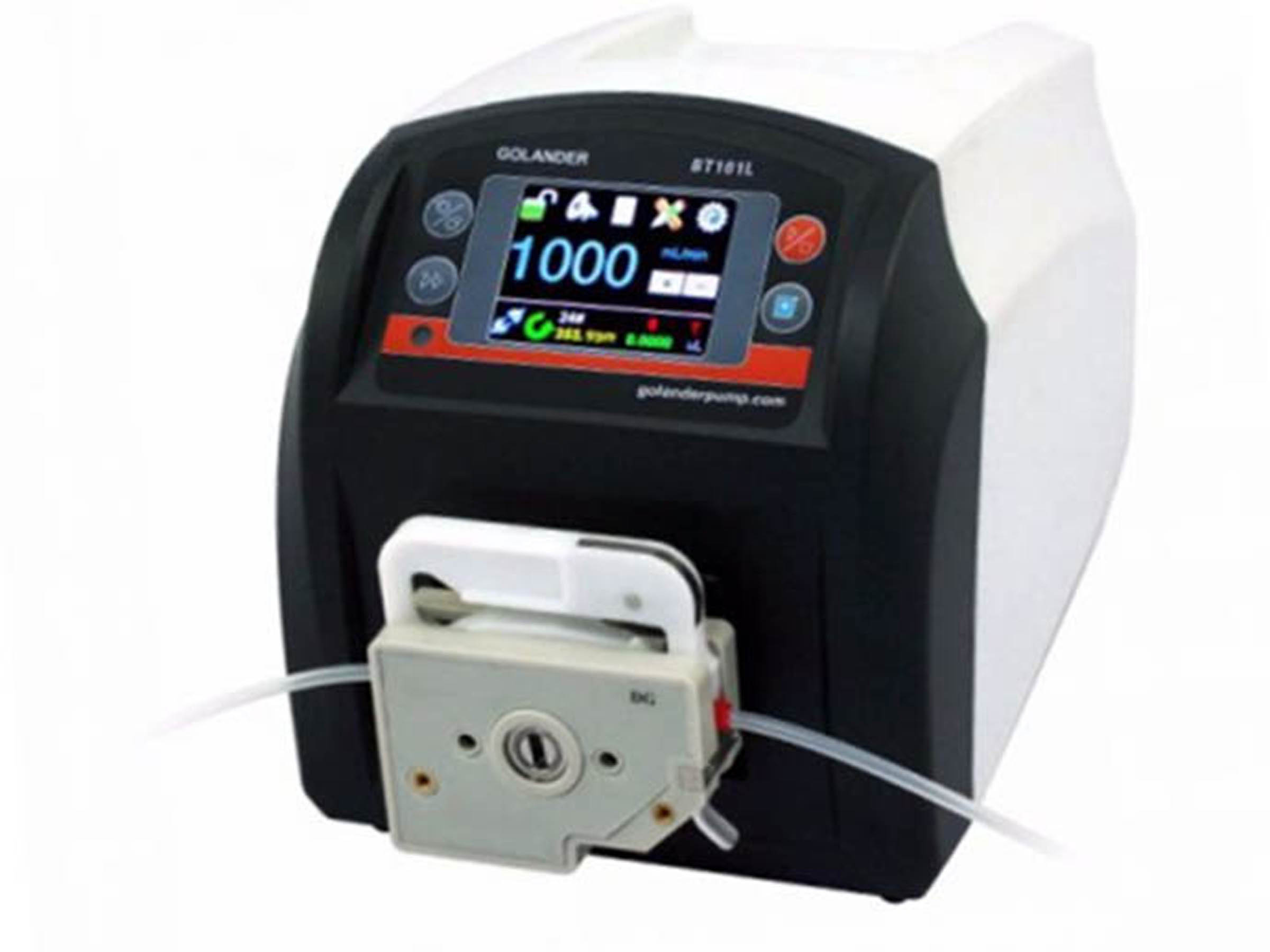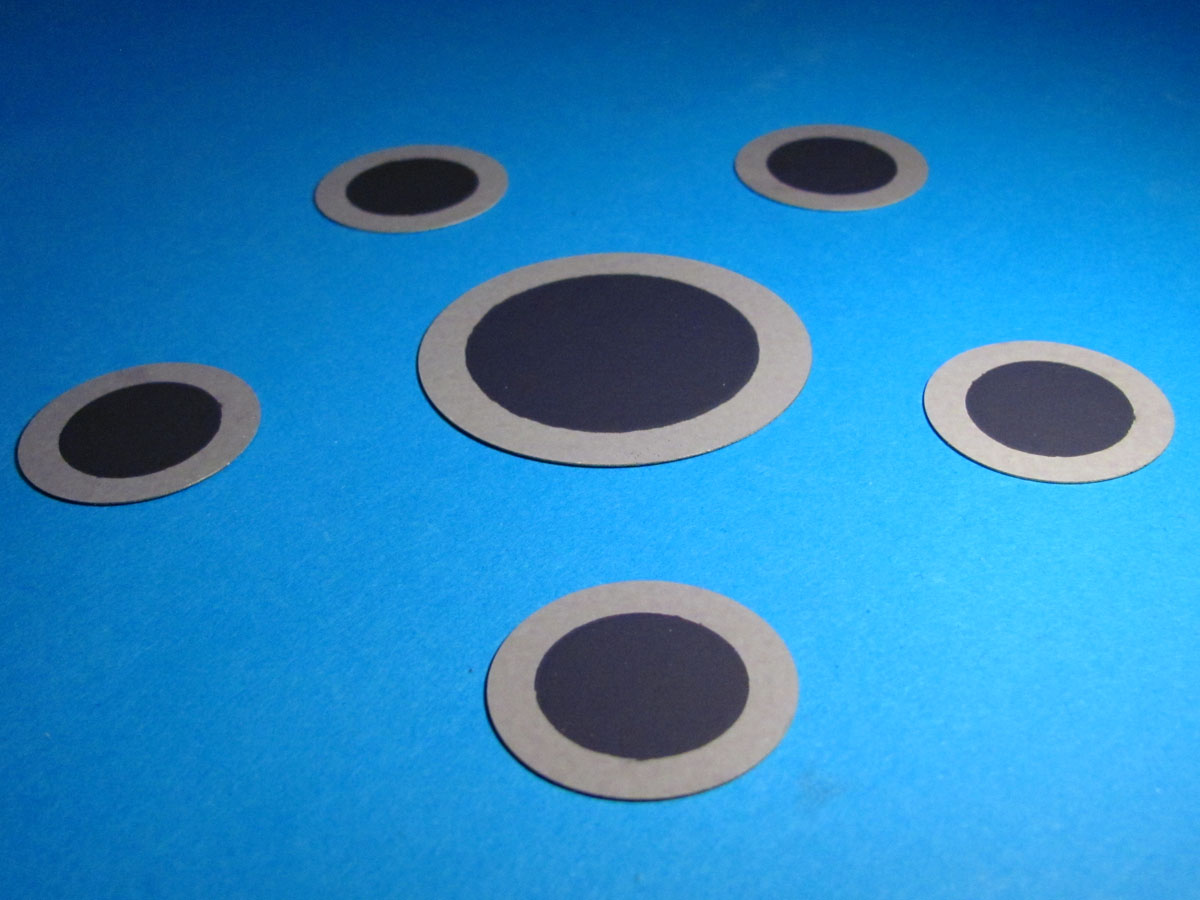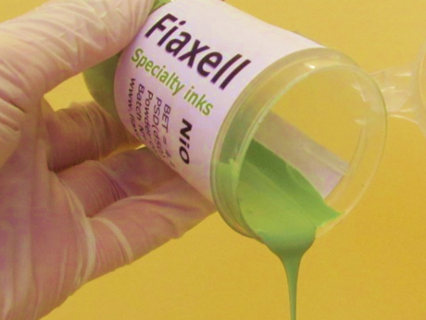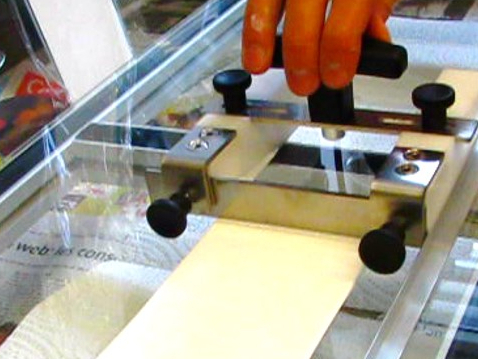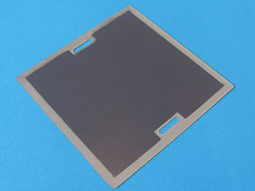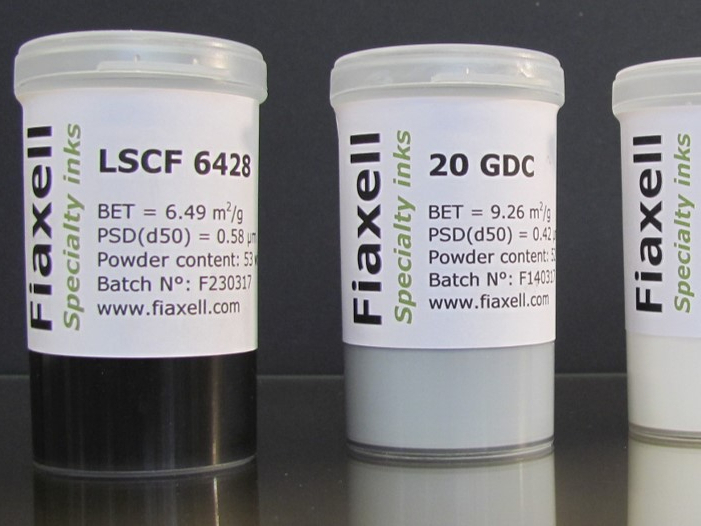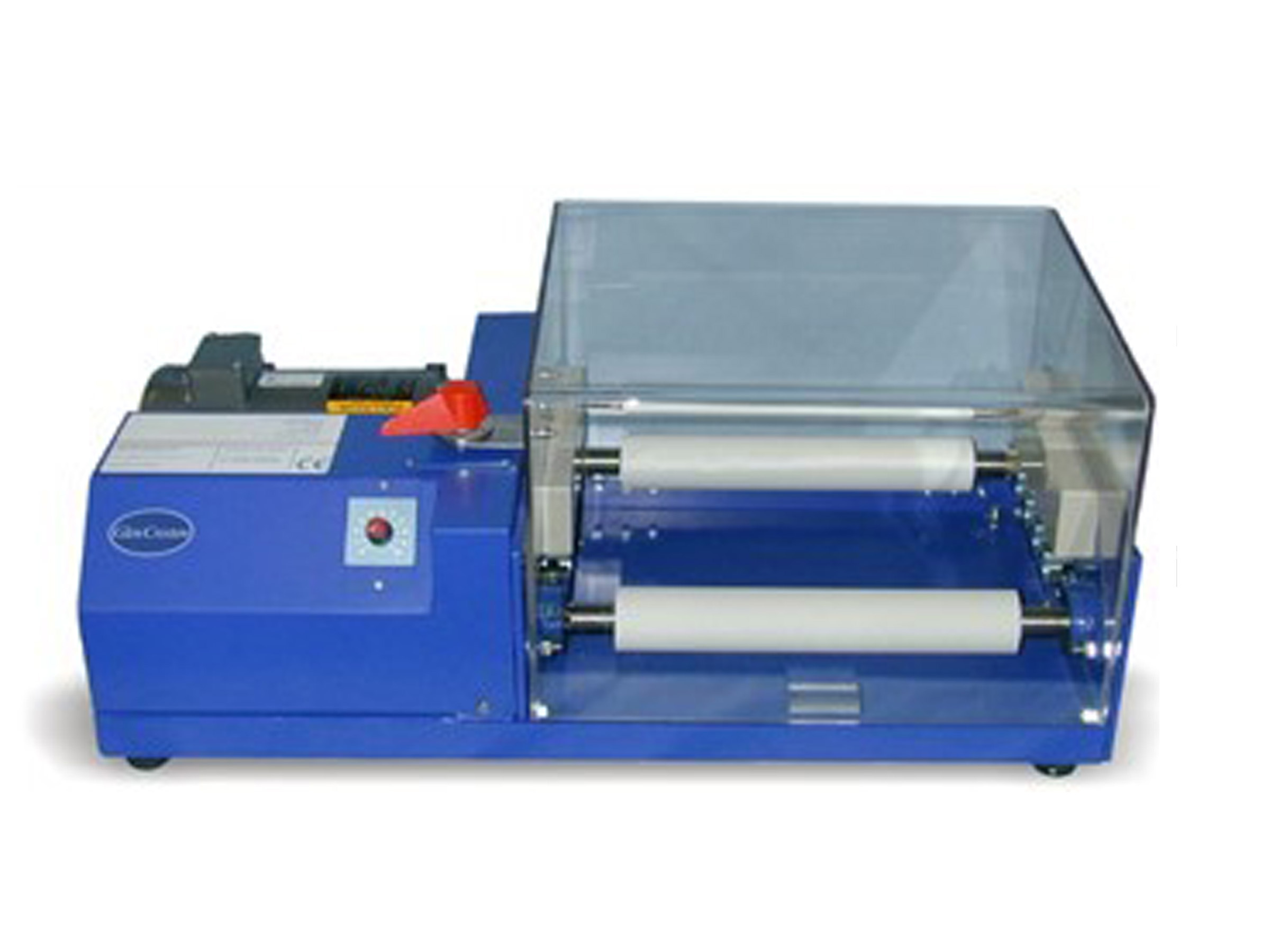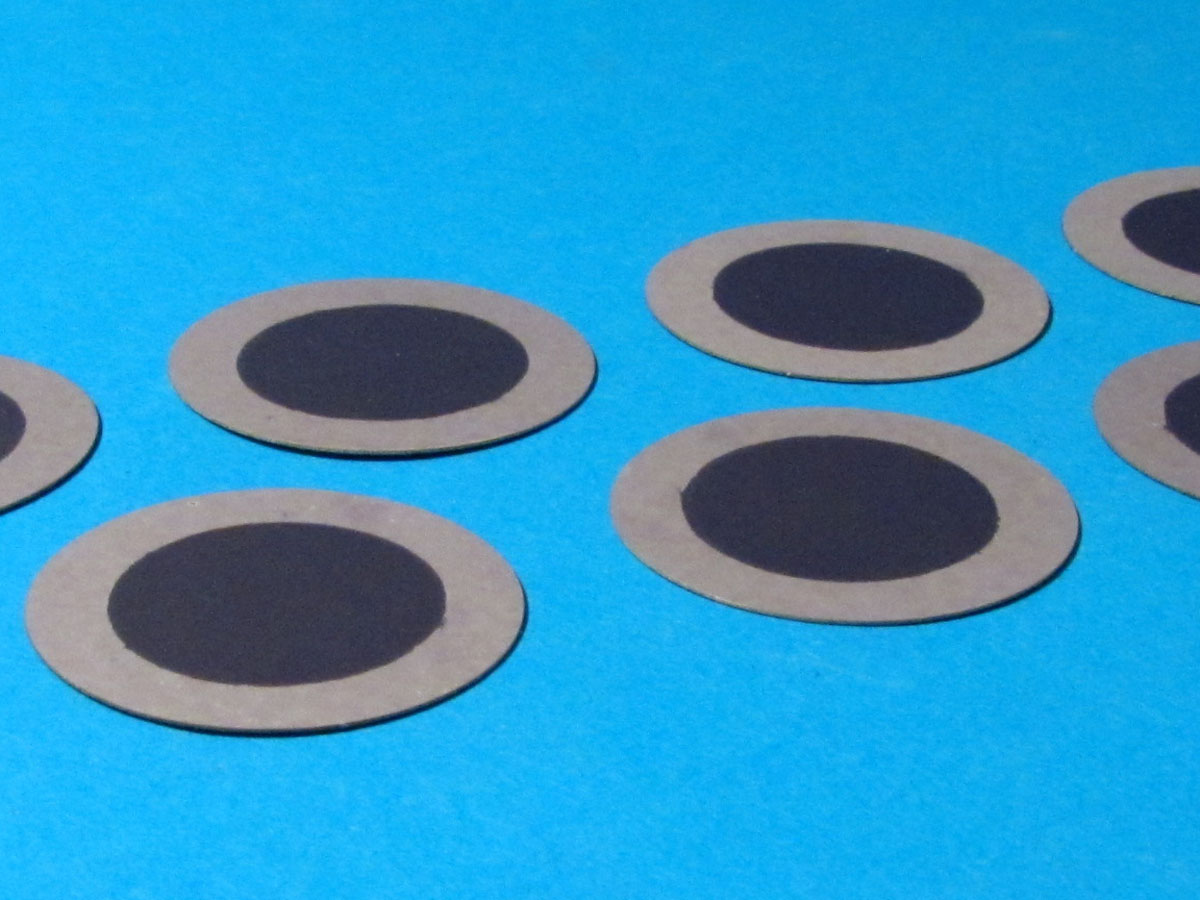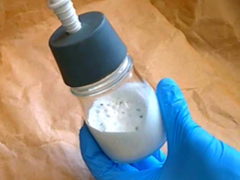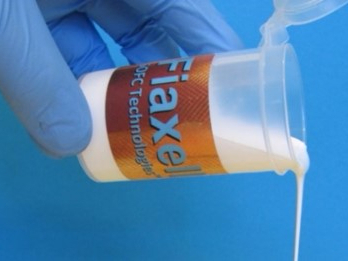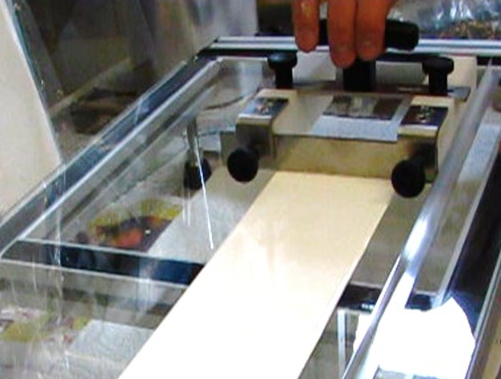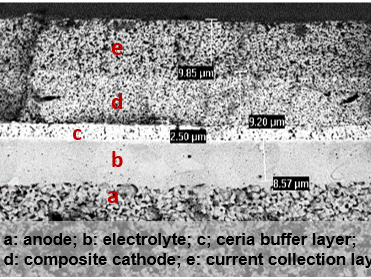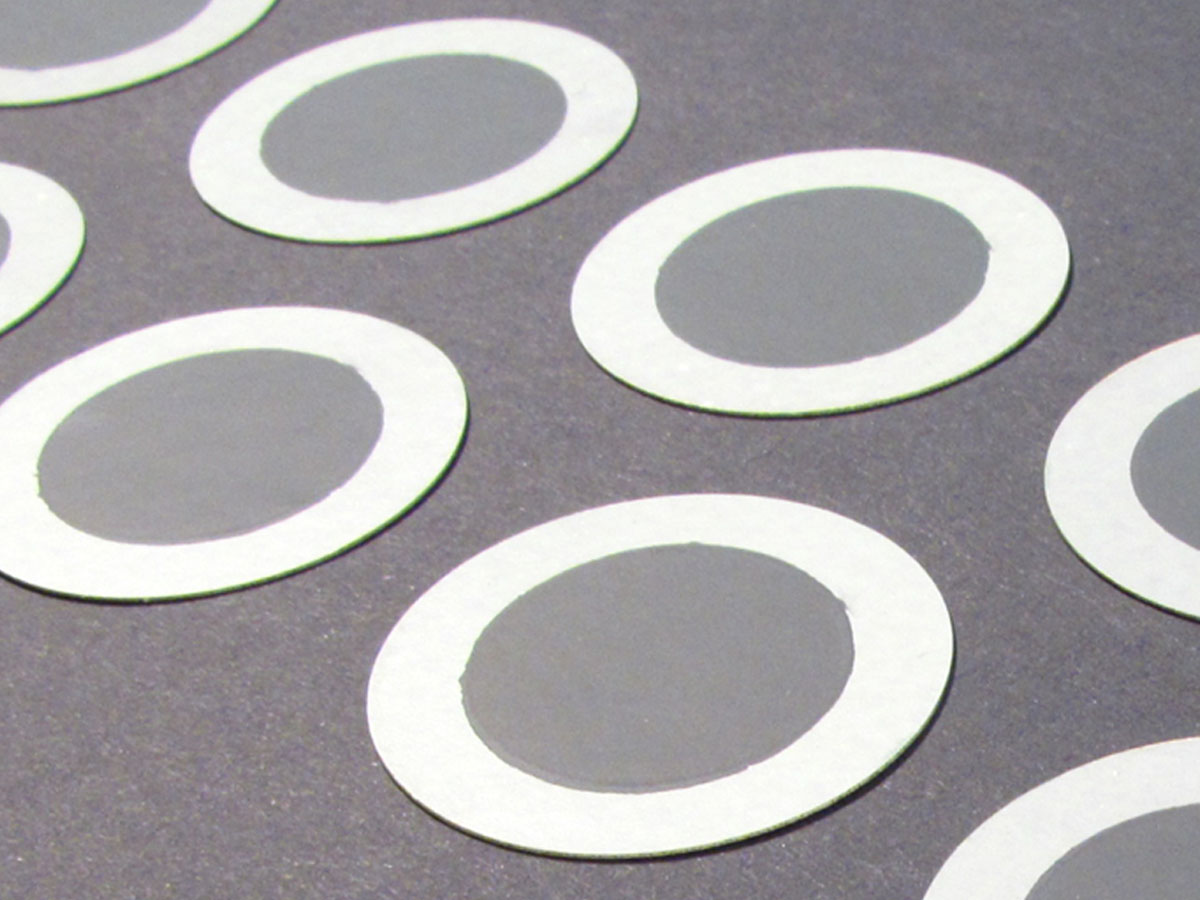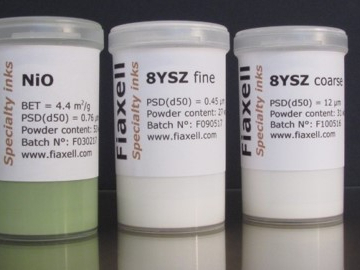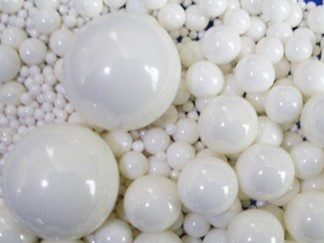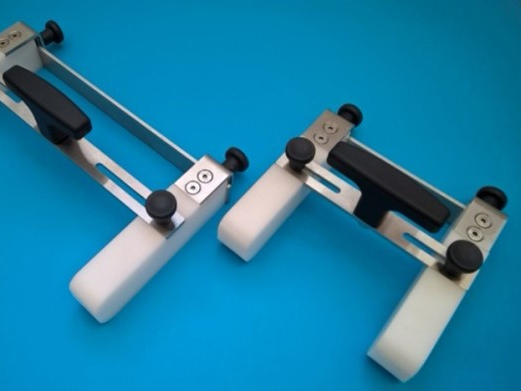Gas diffuser for water and CO2 co-electrolysis
in the SOFC / SOEC Open Flanges™ button cell tester
The Solid Oxide Fuel Cell (SOFC) reversibility:
The high temperature solid oxide fuel cells (SOFC) have the advantage of being reversible and to immediately switch from fuel cell (SOFC) to electrolyzer mode (SOEC). In a few seconds, the fuel cell, which was producing electricity, start to consume the electrical power from the grid to produce valuable hydrogen, the cleanest fuel ever seen.
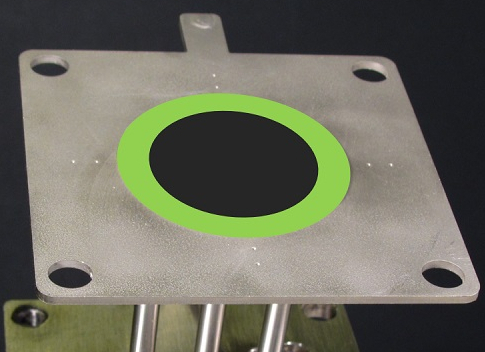 The standard gas diffuser of the SOFC / SOEC Open Flange™ button cell tester equipped with a diameter 50 mm anode supported cell (ASC) with LSCF cathode. In SOFC mode, the fuel is injected by the pipe in the center and the exhaust gas are recovered by the two tubes at the cell edge
The standard gas diffuser of the SOFC / SOEC Open Flange™ button cell tester equipped with a diameter 50 mm anode supported cell (ASC) with LSCF cathode. In SOFC mode, the fuel is injected by the pipe in the center and the exhaust gas are recovered by the two tubes at the cell edge
Co-electrolysis:
Another advantage of high temperature fuel cell is the possibility of co-electrolysis. When the fuel cell (SOFC) operates as an electrolyzer (SOEC), the system can transform the water (H2O) into hydrogen (H2), but also and simultaneously the carbon dioxide (CO2) into carbon monoxide (CO), which is not possible for low temperature fuel cell. The reaction product is thus composed of carbon monoxide and hydrogen (CO + H2) and has for name the "syngas". The latter can be used directly as fuel in a fuel cell or processed with catalyst to produce methane (CH4) or liquid fuel (Fischer–Tropsch process).
The reversibility and co-electrolysis mode for the high temperature solid oxide fuel cell is facilitated thanks to its reversible electrodes. The fuel electrode, generally made with nickel works as well in fuel cell mode (SOFC) as in electrolysis mode (SOEC) and this, for both gas reactions (2H2 + O2 ↔ 2H2O and 2CO + O2 ↔ 2CO2). The perovskite ceramics used as air electrode (LSCF for instance) also works as well for oxygen reduction or oxidation (O2 ↔ 2O2- or 2O2-↔ O2)
High efficiency:
Contrarily to the low temperature fuel cell (PEM, AFC etc.) that need more than 1.3 Volt to start to split the water into hydrogen, the electrolysis in the high temperature electrolyzer (SOEC) begins at a much lower potential (below 0.9 Volt) which results in a better electrical efficiency.
Furthermore, when the high temperature solid electrolyzer (SOEC) is operating at the "thermo-neutral electrical voltage", (at about 1.3 V), it can use the heat losses, mainly created by Ohmic losses (Joule effect) in the stack, for the energy needed (the entropy part) to split the water into hydrogen and/or the carbon dioxide into carbon monoxide resulting theoretically in a 100 (%) efficiency conversion of the electricity.
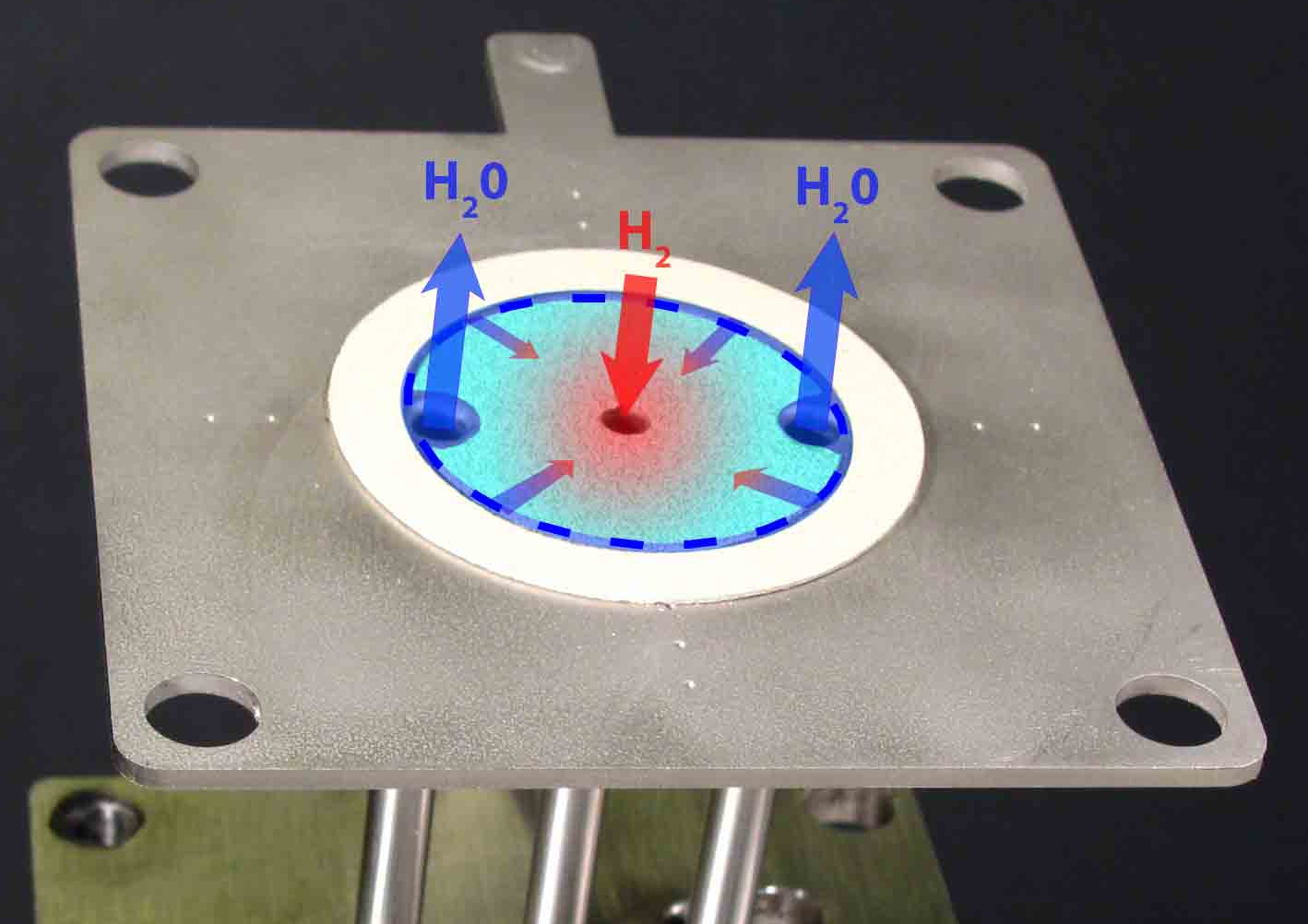 When the gas diffuser is used for SOEC mode, the water and/or carbon dioxide are injected at the cell edges by the two peripheral tubes to avoid reaction of hydrogen and carbon monoxide with air. The fuel, produced during the co-electrolysis is recovered in the centre of the cell through the pipe
When the gas diffuser is used for SOEC mode, the water and/or carbon dioxide are injected at the cell edges by the two peripheral tubes to avoid reaction of hydrogen and carbon monoxide with air. The fuel, produced during the co-electrolysis is recovered in the centre of the cell through the pipe
In order to improve the gas conversion (H2O → H2 and CO2 → CO) and optimize the fuel generation, Fiaxell is proposing a new design of gas diffuser for SOEC test mode.
The latter is presented on the right picture. To start co-electrolysis experiments, the SOEC gas diffuser is first slid and installed onto the main flanges of the Open Flanges™ SOFC / SOEC button cell tester.
In this new gas diffuser design, the low reactive species (H2O and/or CO2) are injected at the cell periphery (blue arrow) and flow in a groove (blue dashed lines) between the sealing (beige ring) and the diffusion material (light blue disc).
As no driving forces exists between air and water or air and carbon dioxide, the diffusion of these gases through the sealing is very low.
It thus allows the use of easy handling and removable sealing such as soft mica for instance, even if these types of sealants present micro porosity.
The hydrogen and/or carbon monoxide gases are produced on the surface of the cell and thanks to the over pressure given by the steam and CO2 at the cell periphery, the created fuel gases (CO + H2) are pushed toward the centre where they are recovered in the central tube.
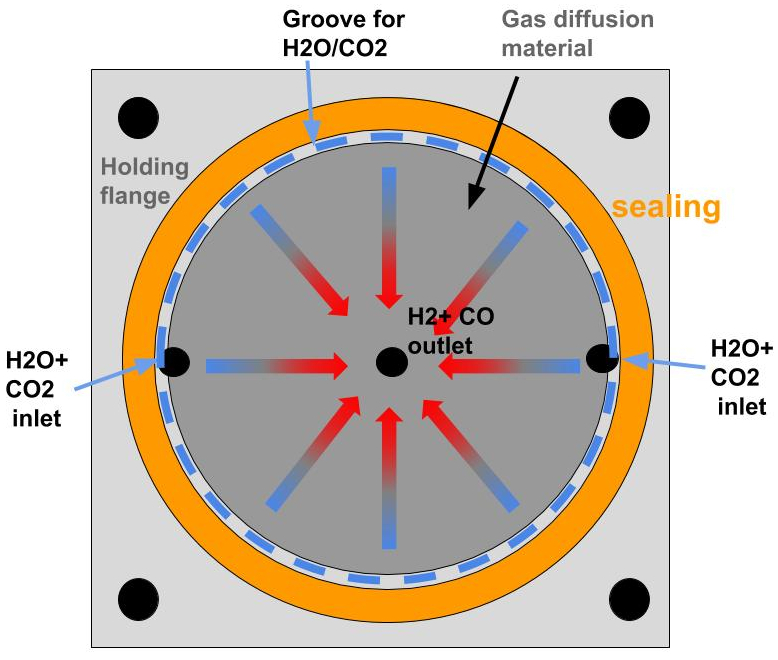 Schematic view of the gas diffuser:
Schematic view of the gas diffuser:
How it works: for co-electrolysis protocols, the steam and carbon monoxide are injected at the cell periphery (CO2 + H2O inlets). The gases flow in the furrow (dashed blue lines) grooved in between the sealing (orange ring) and the gas diffusion material (grey). Thanks to the over pressure, the CO2 and H2O gases diffuse on the cell and are transformed into CO + H2 fuels before reaching the center pipe where they are recovered for analysis.
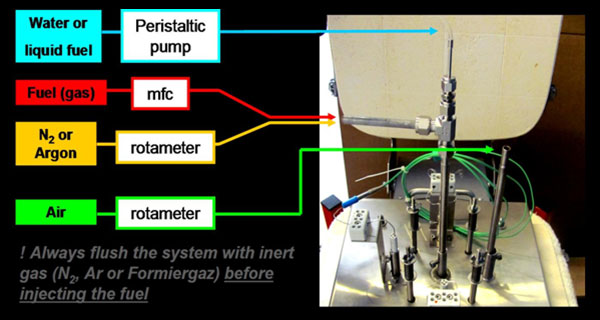 Our integrated steamer, the Easy-steam™ allows simplifying the steam generation setup in electrolysis experiments
Our integrated steamer, the Easy-steam™ allows simplifying the steam generation setup in electrolysis experiments
Since the year 2011, Fiaxell is proposing an integrated steamer, the Easy-steam™, that uses the heat of the fuel cell set-up to evaporate the water.
A smooth vapor flux is obtained thanks to an optimized and proprietary design of the steamer.
The water is directly pumped into the integrated steamer with a peristaltic pump, syringe pump or a liquid flow controller (lfc). It eliminates the use of a remote water evaporator and the need of heated gas line to avoid steam condensation.
The integrated steamer, the Easy-steam™ is composed of only pure alumina components in order to avoid contamination of chromium or other elements. It should be remembered that in electrolysis mode, the electrons are floading on the fuel electrode and will thus have the possibility to reduce at the triple points some volatile species such as metallic cations.
Our integrated steamer has also been designed to mix the steam with other gases. Therefore, in the case of co-electrolysis, the carbon dioxide is thoroughly mixed with the steam before to reach the SOFC / SOEC cell.
As described in the Open Flanges™ website page, the Easy-steam™ has also the possibility to integrate catalysts of choice in order to operate gas processing such as methane steam reforming, methane partial oxidation, ammonia cracking and other gas reaction. Gas sampling and temperature control are integrated in the CAT-PRO™ version of the integrated steamer.
As manufacturer and supplier of SOFC / SOEC test fixture, Fiaxell is thus proposing a complete set for the study of water and CO2 co-electrolysis including:
→ Button cell tester with kiln and gas control
→ Special gas diffuser for CO2 + H2O co-electrolysis and fuel recovery for analysis
→ The use of simple and dismountable soft mica sealing
→ Integrated steamer for easy production of steam directly in the SOFC / SOEC test bench
Download the brochure:
Click on the picture to download the SOFC / SOEC button cell tester technical data sheet or click here to go to all Fiaxell prospectus


